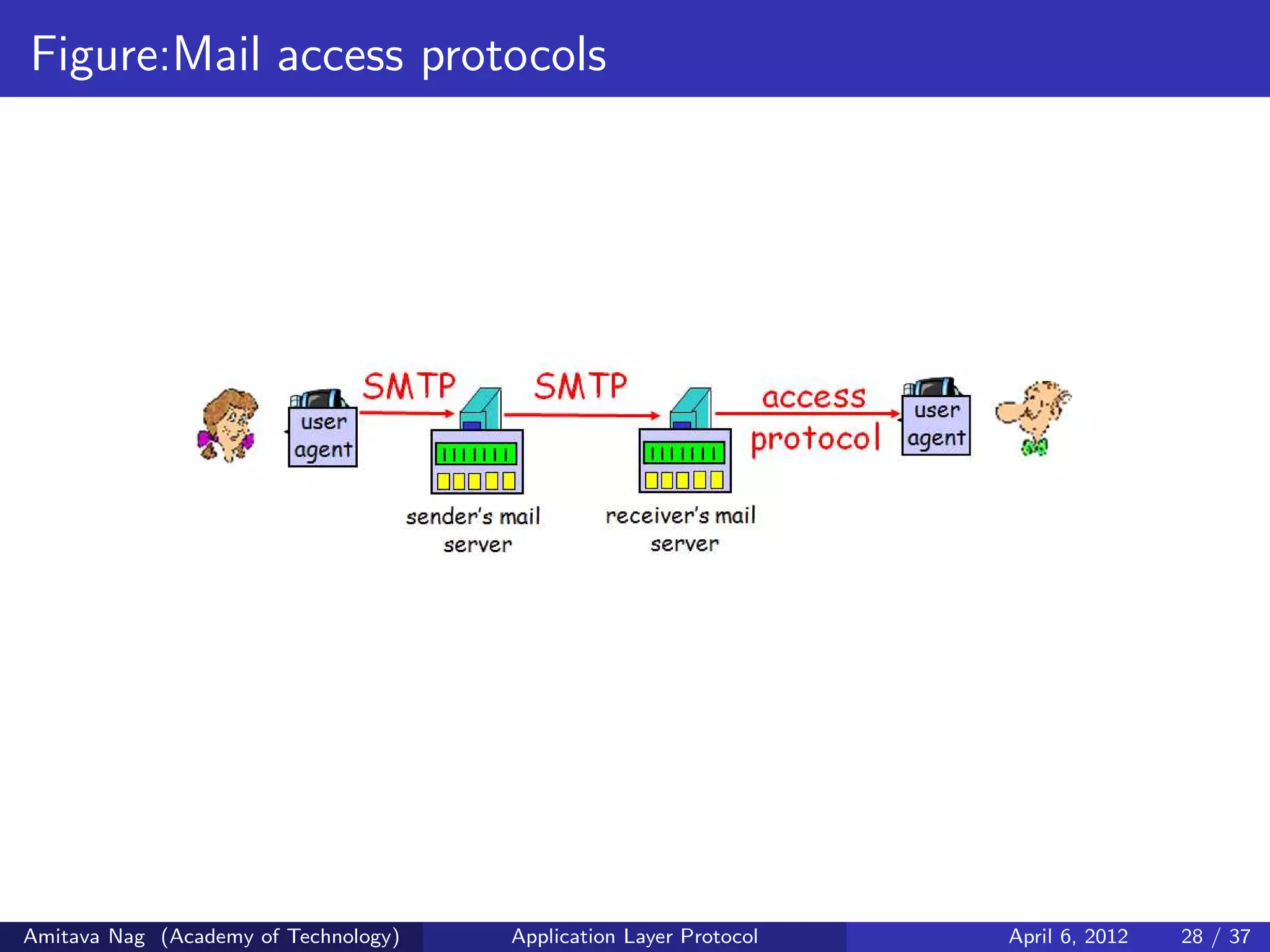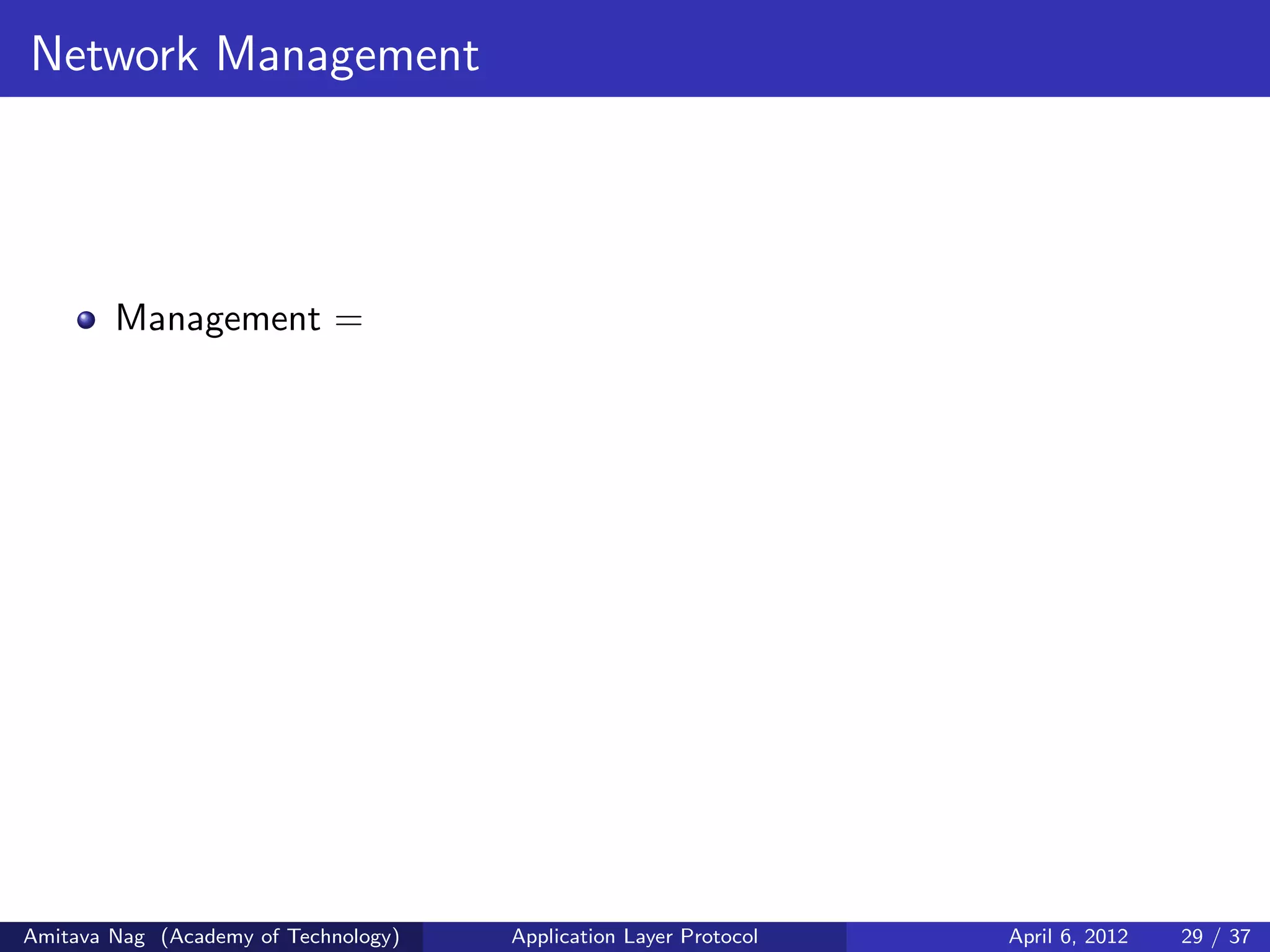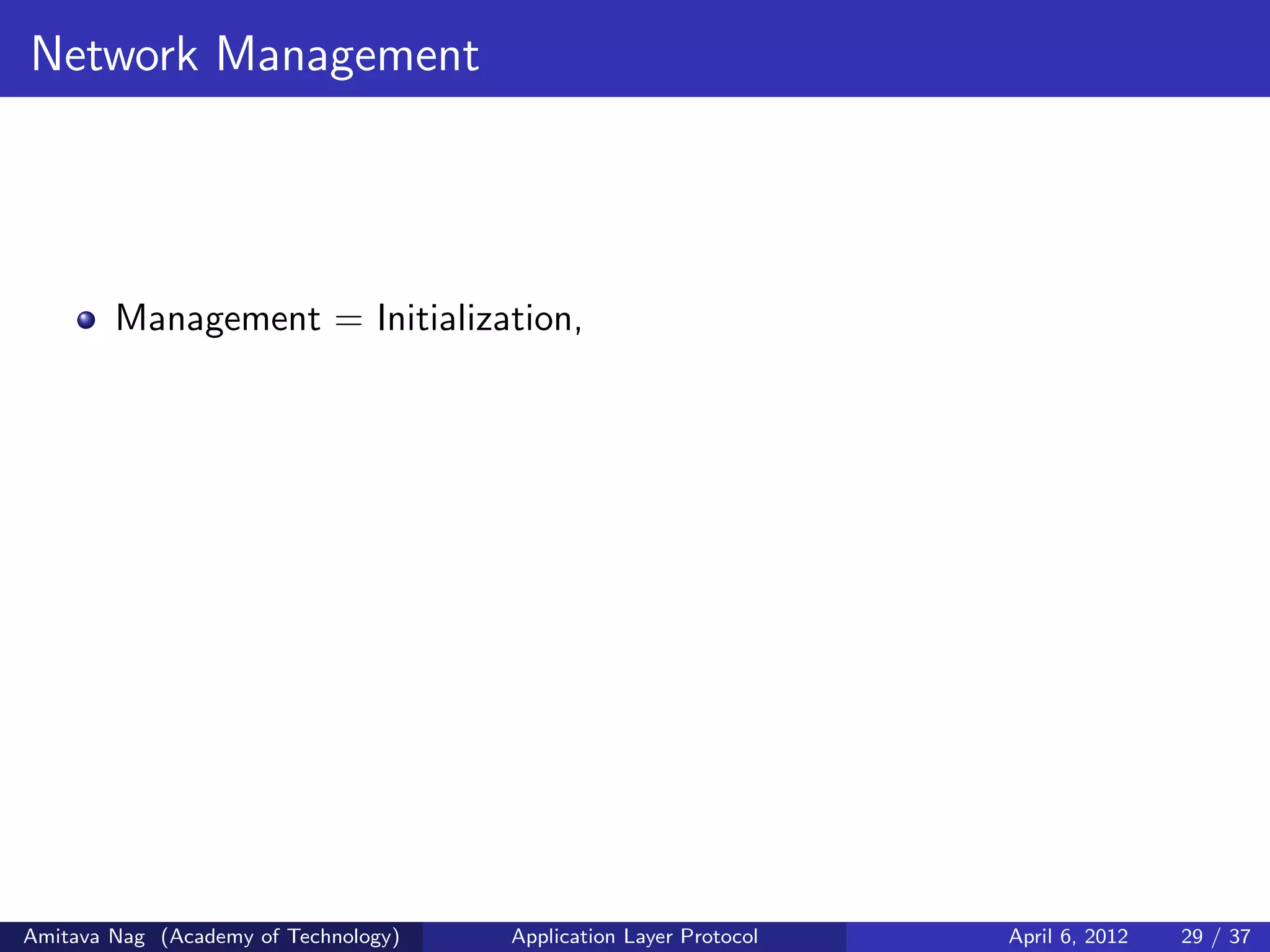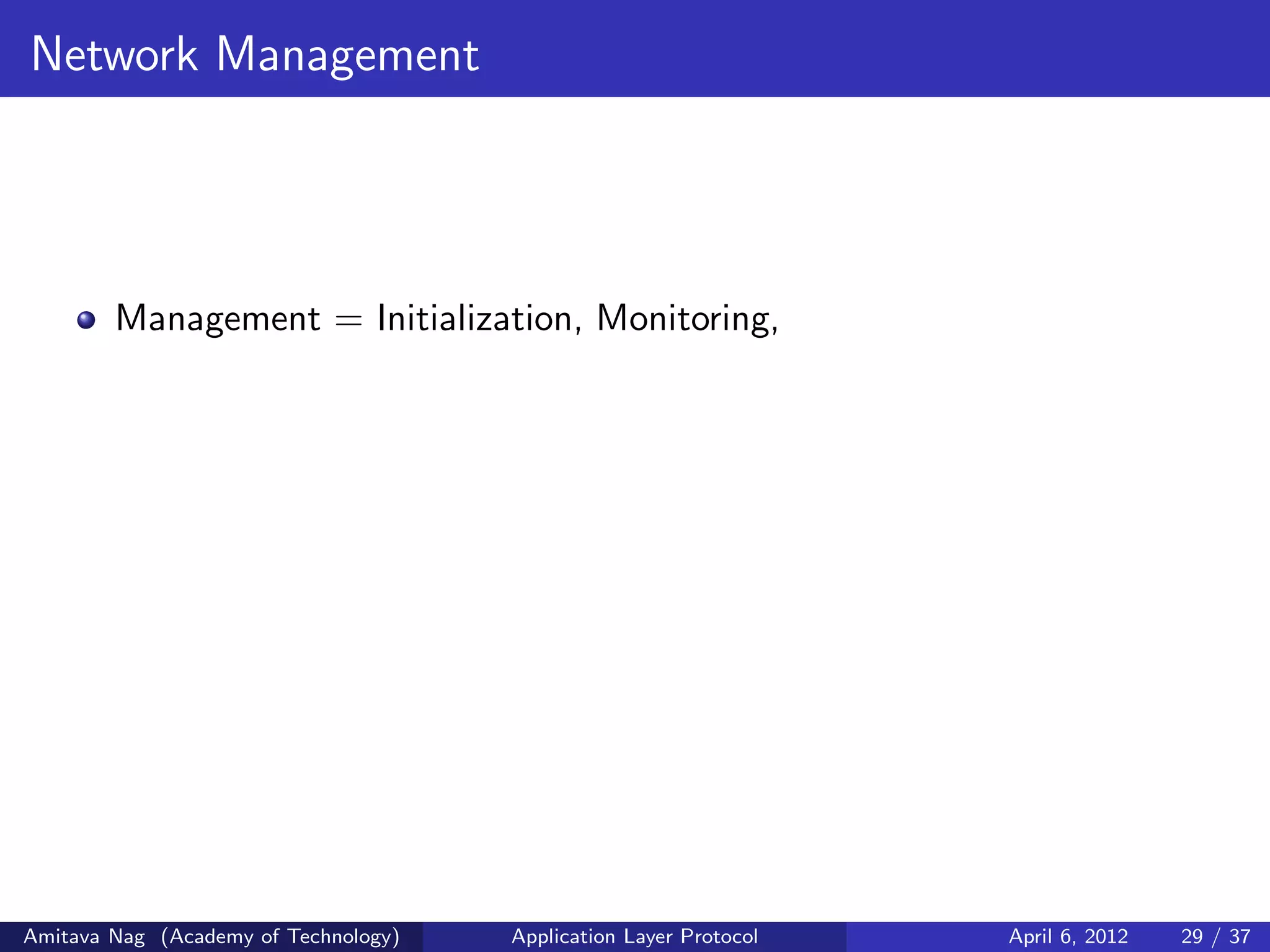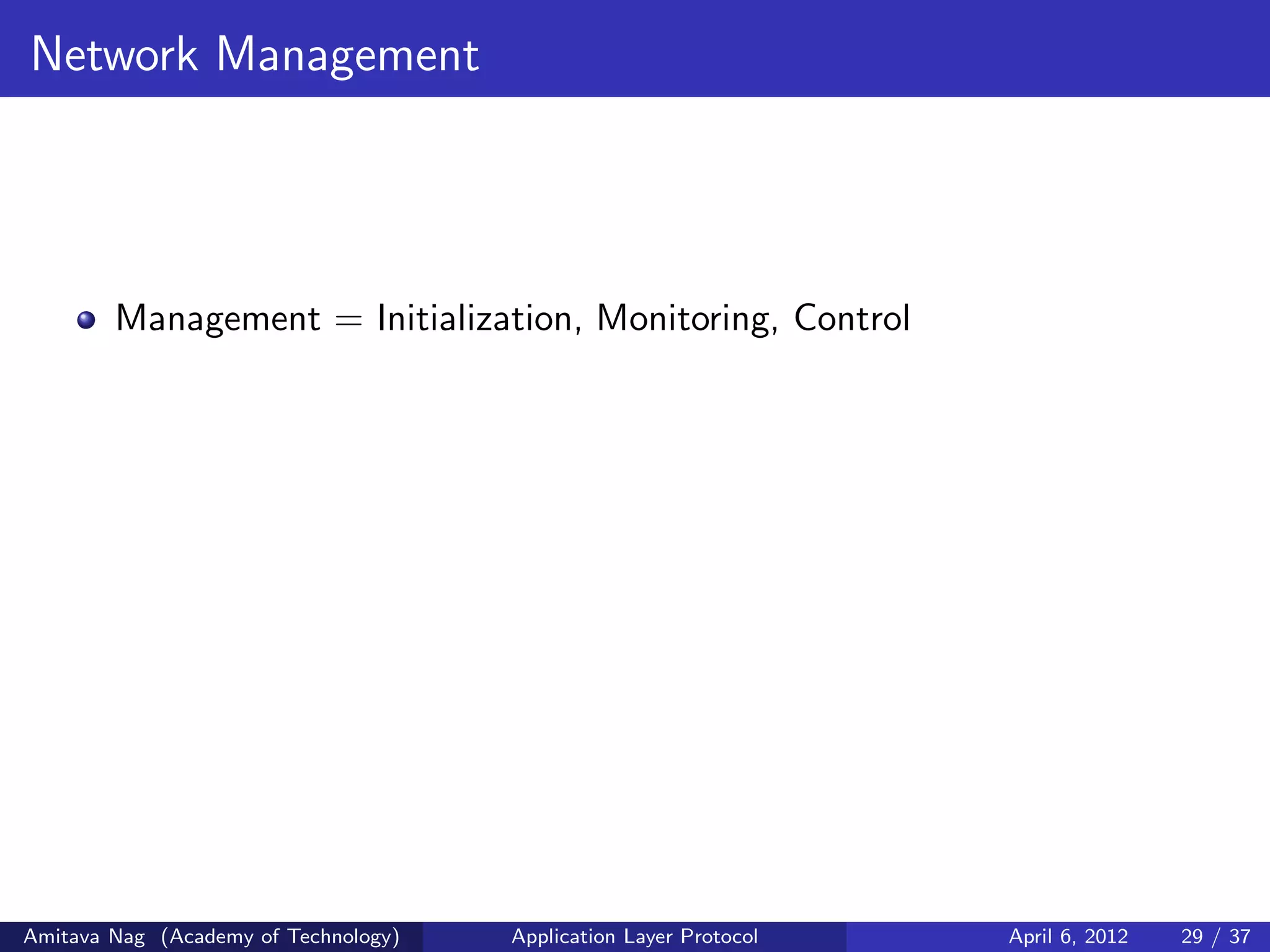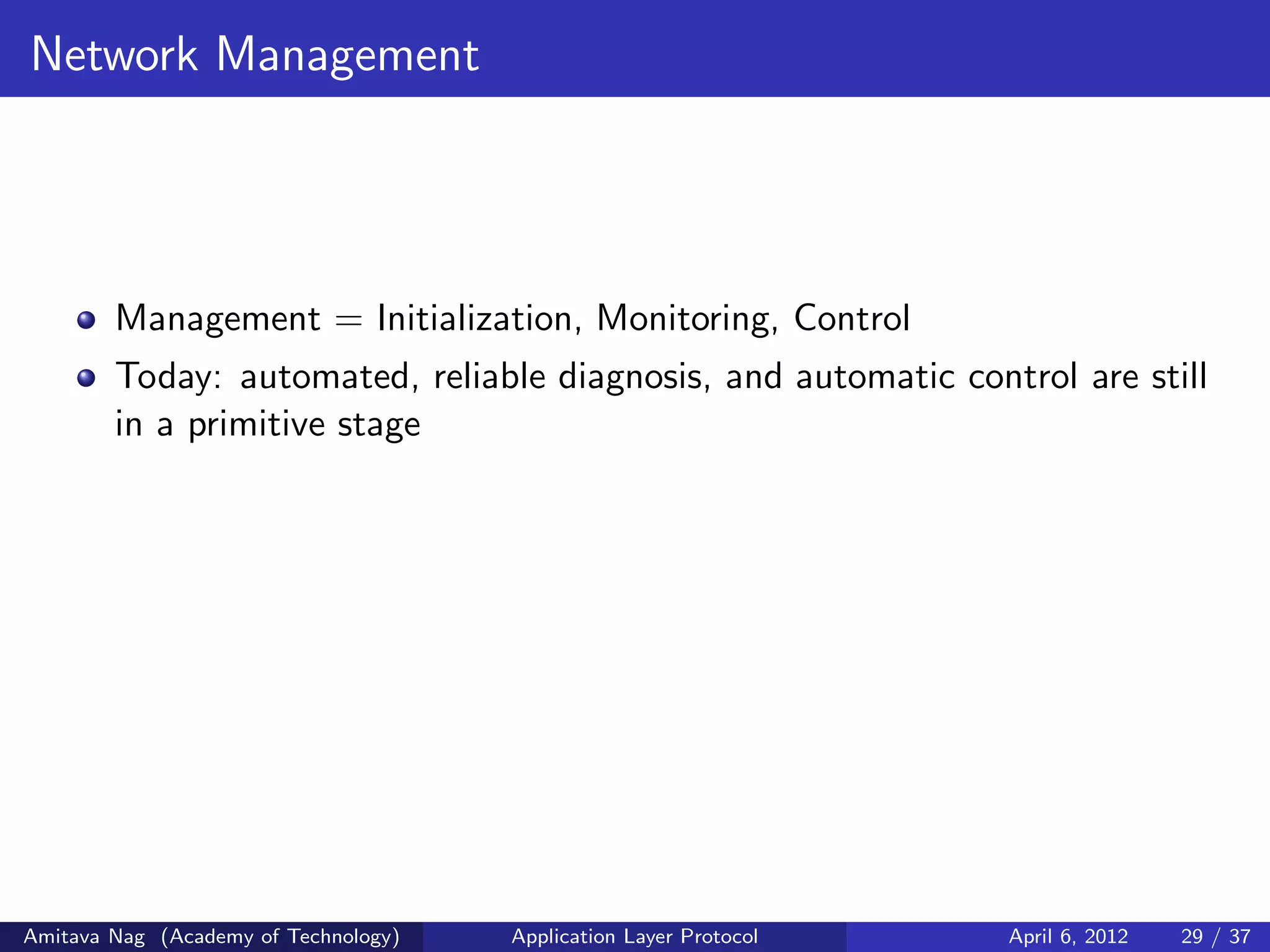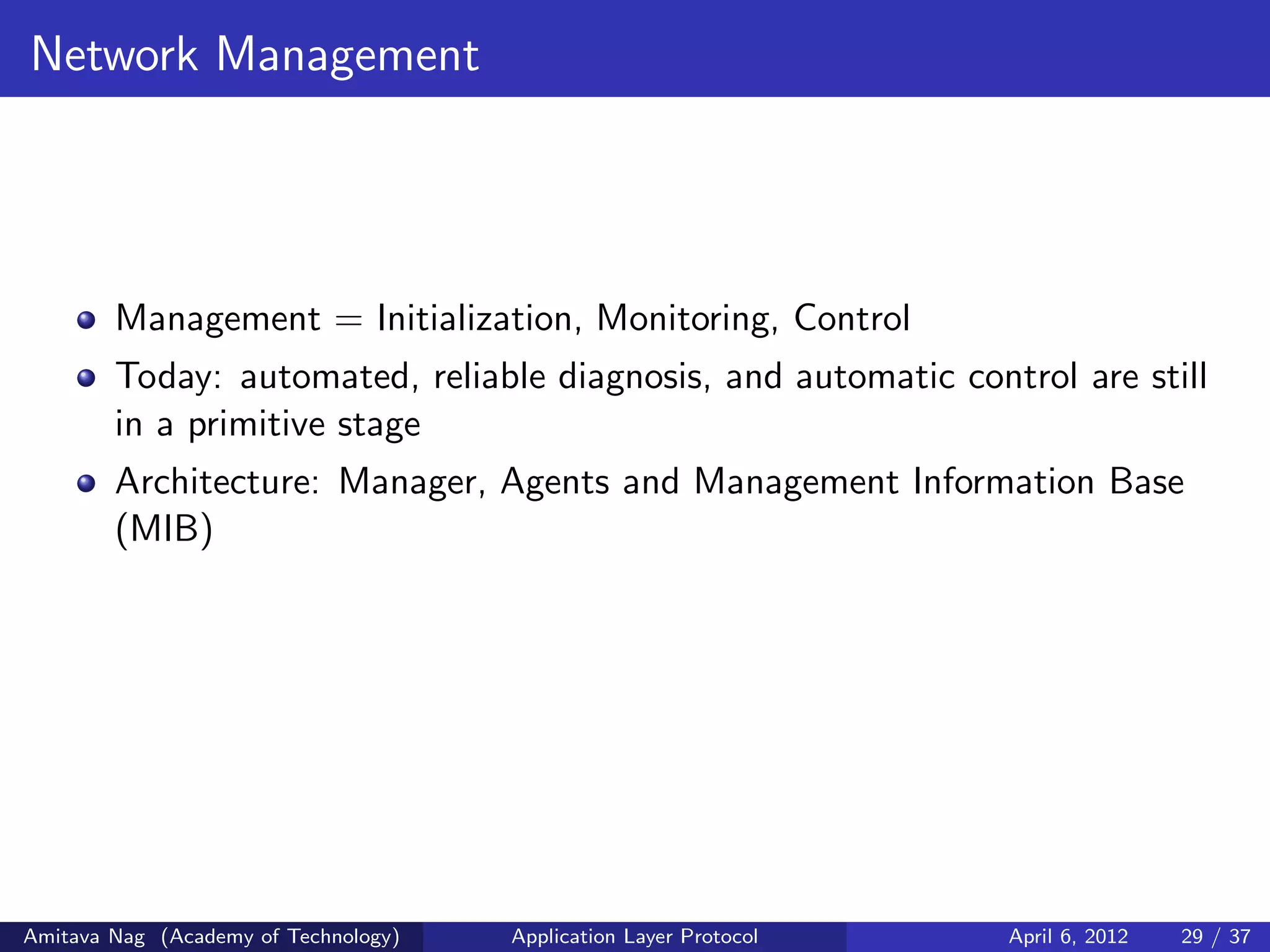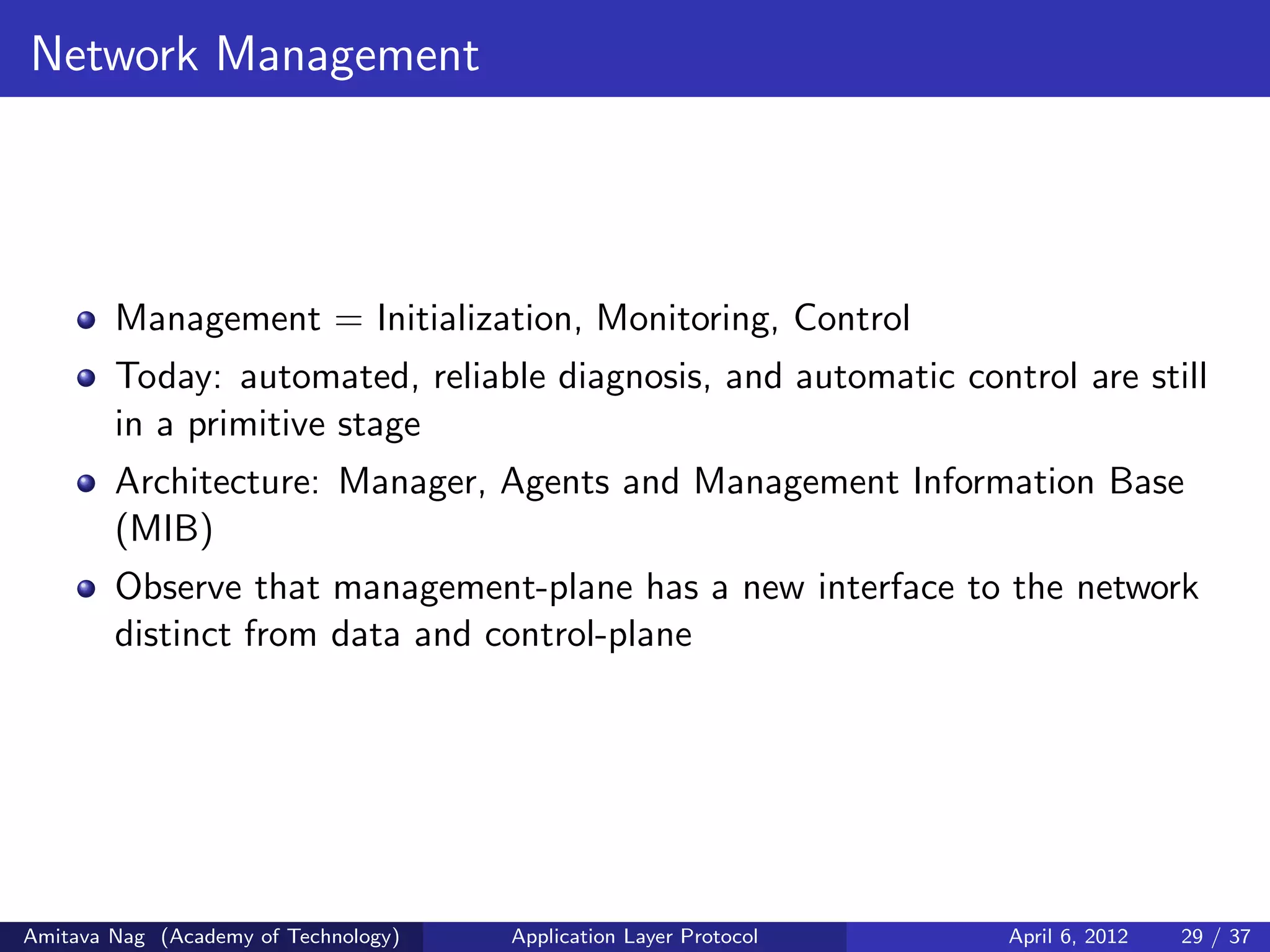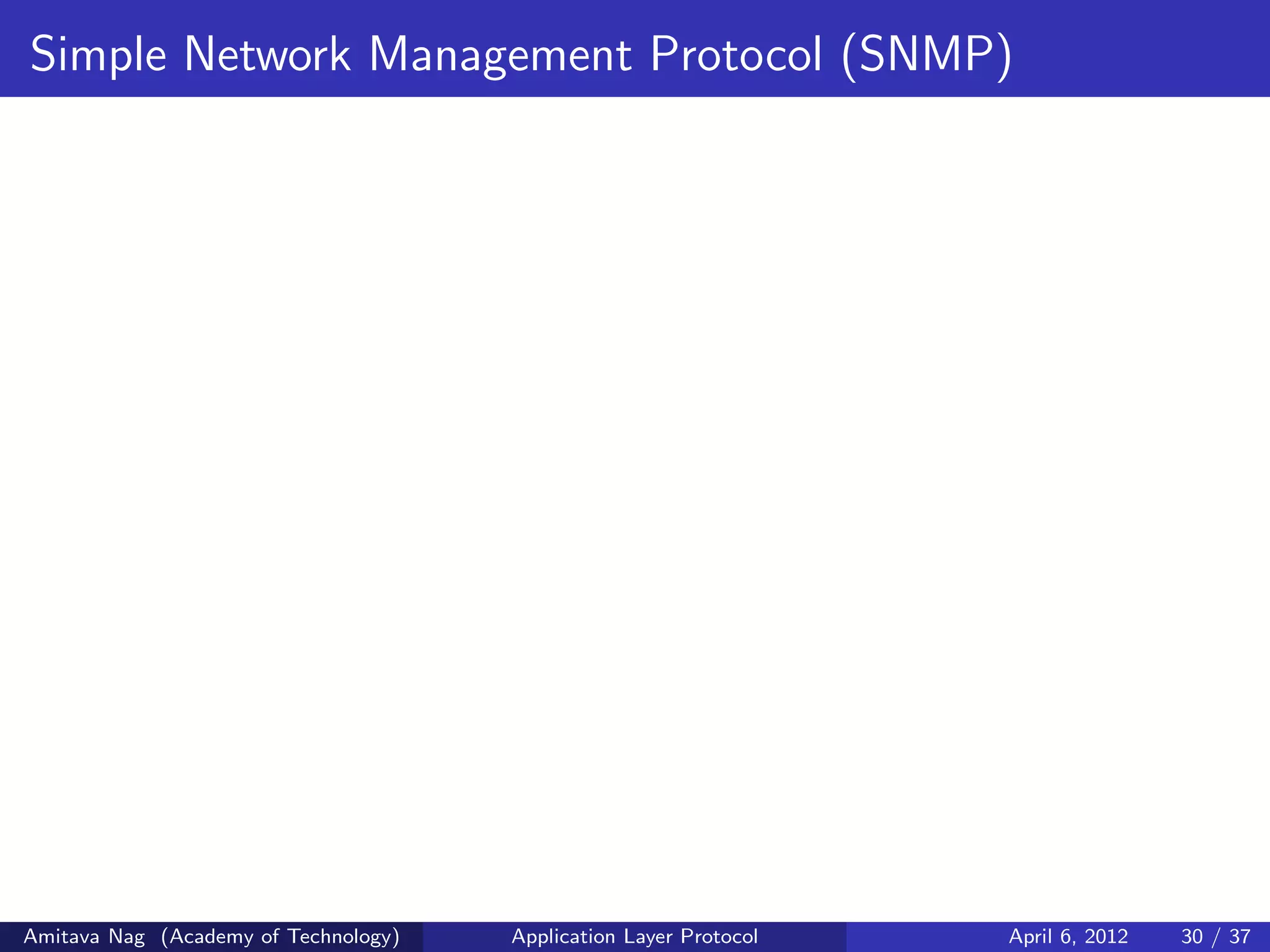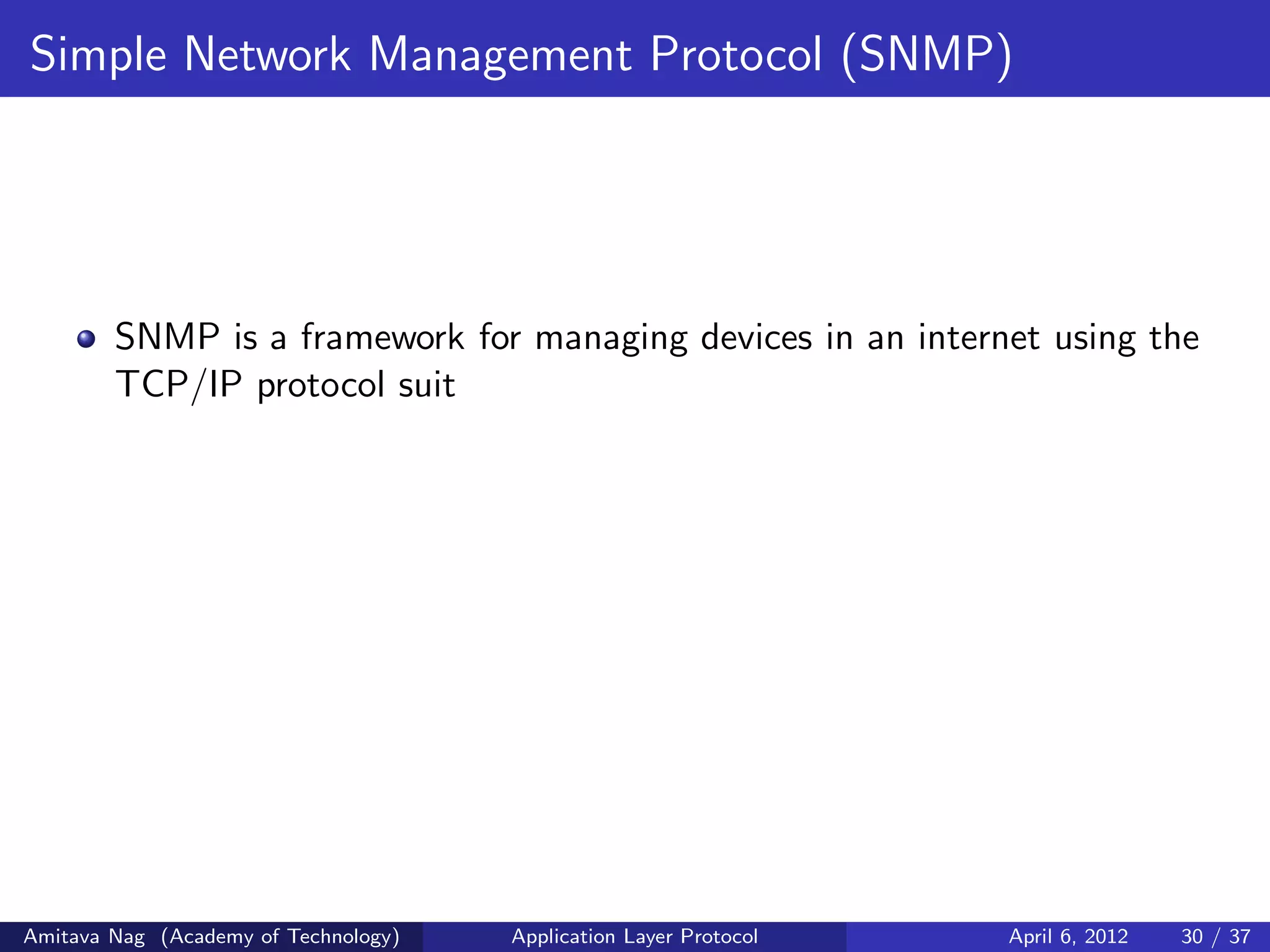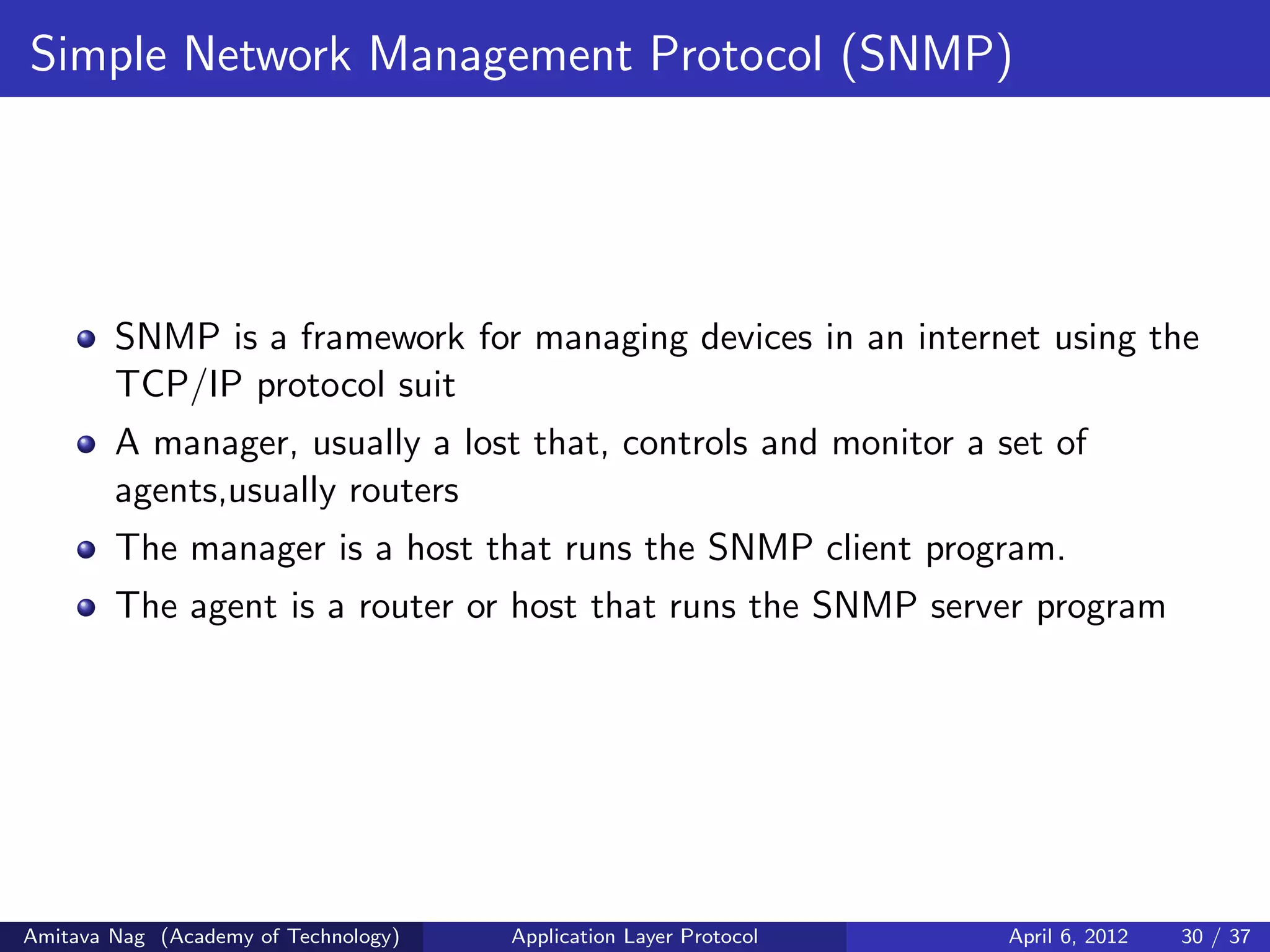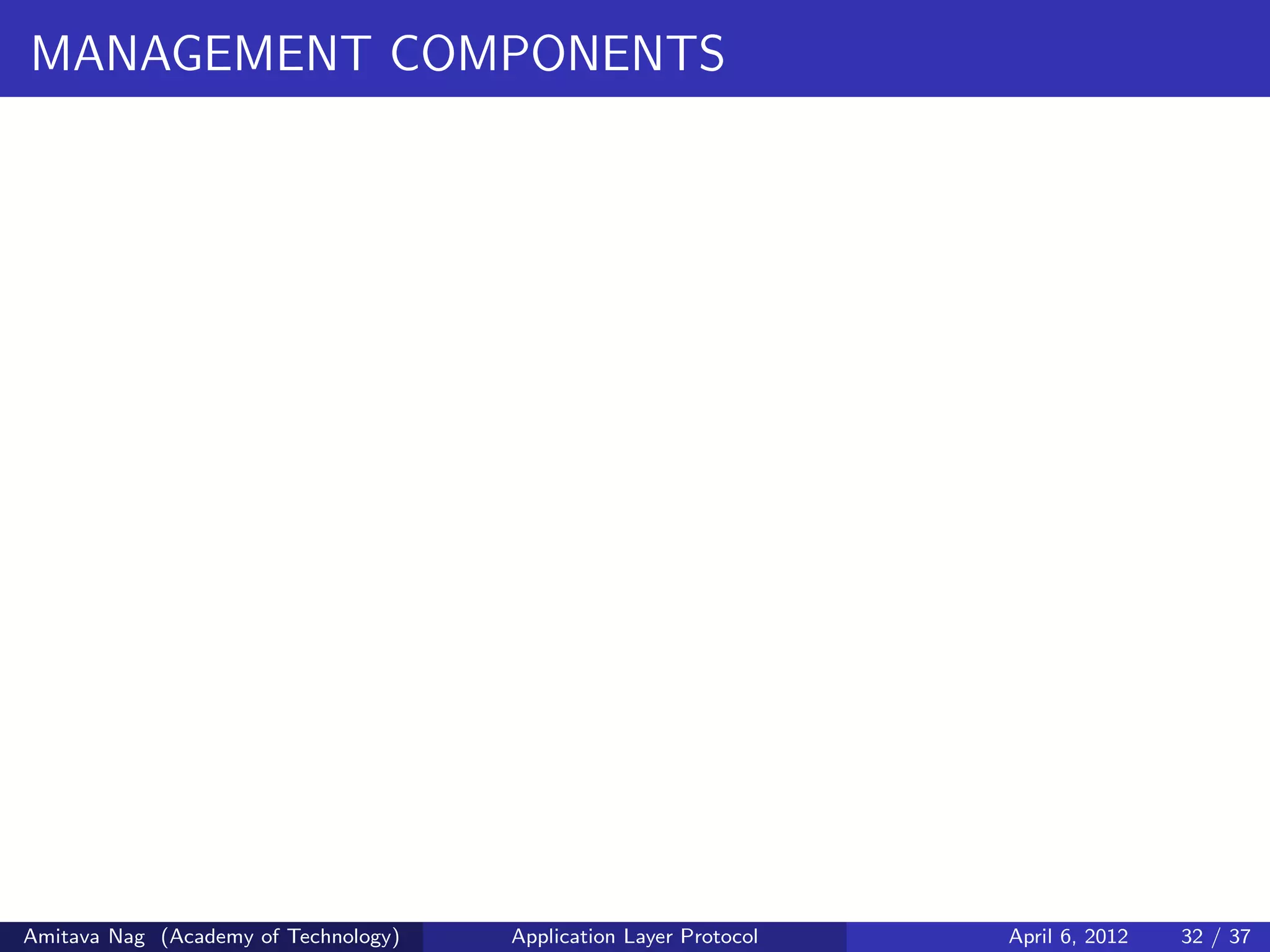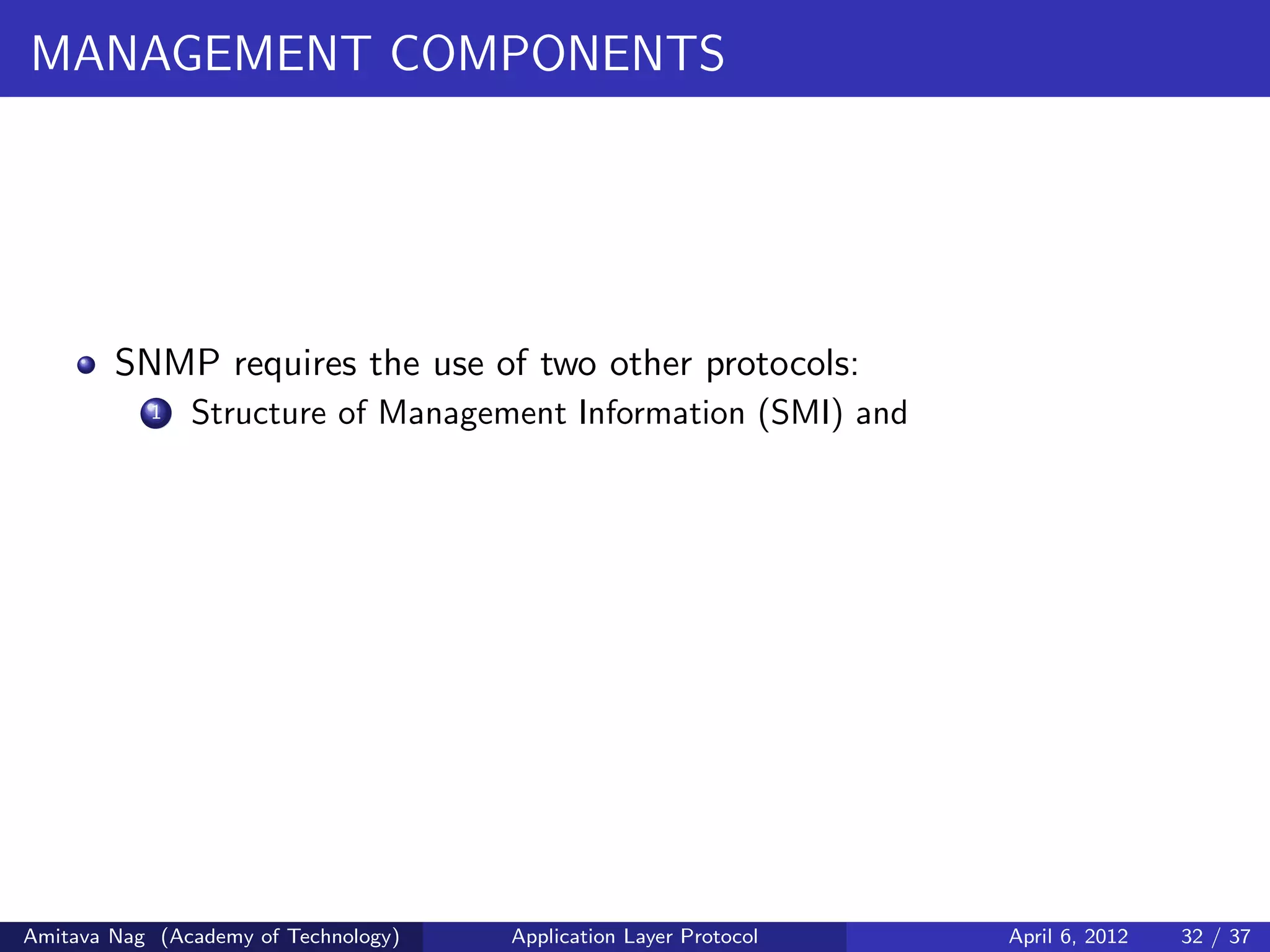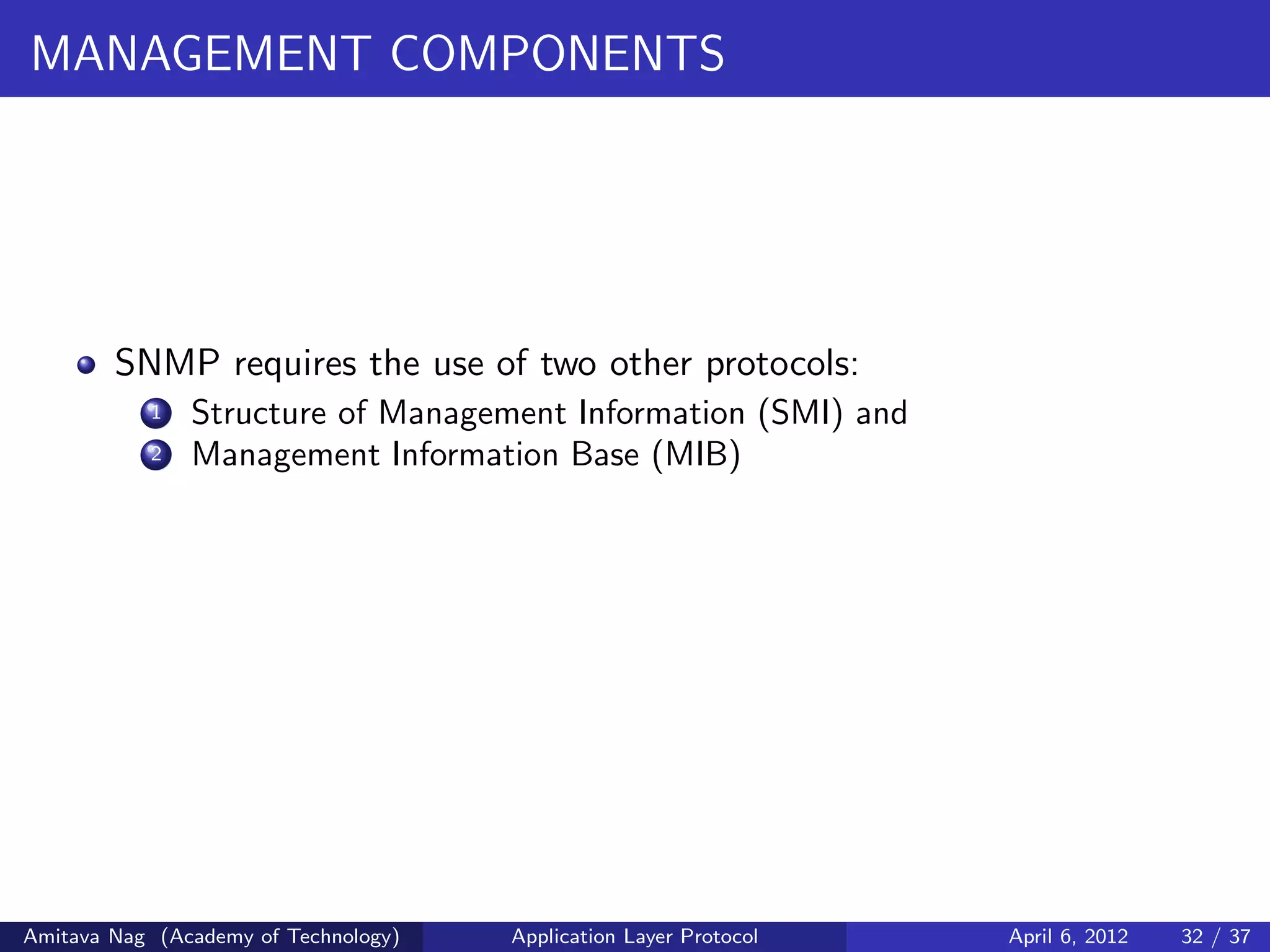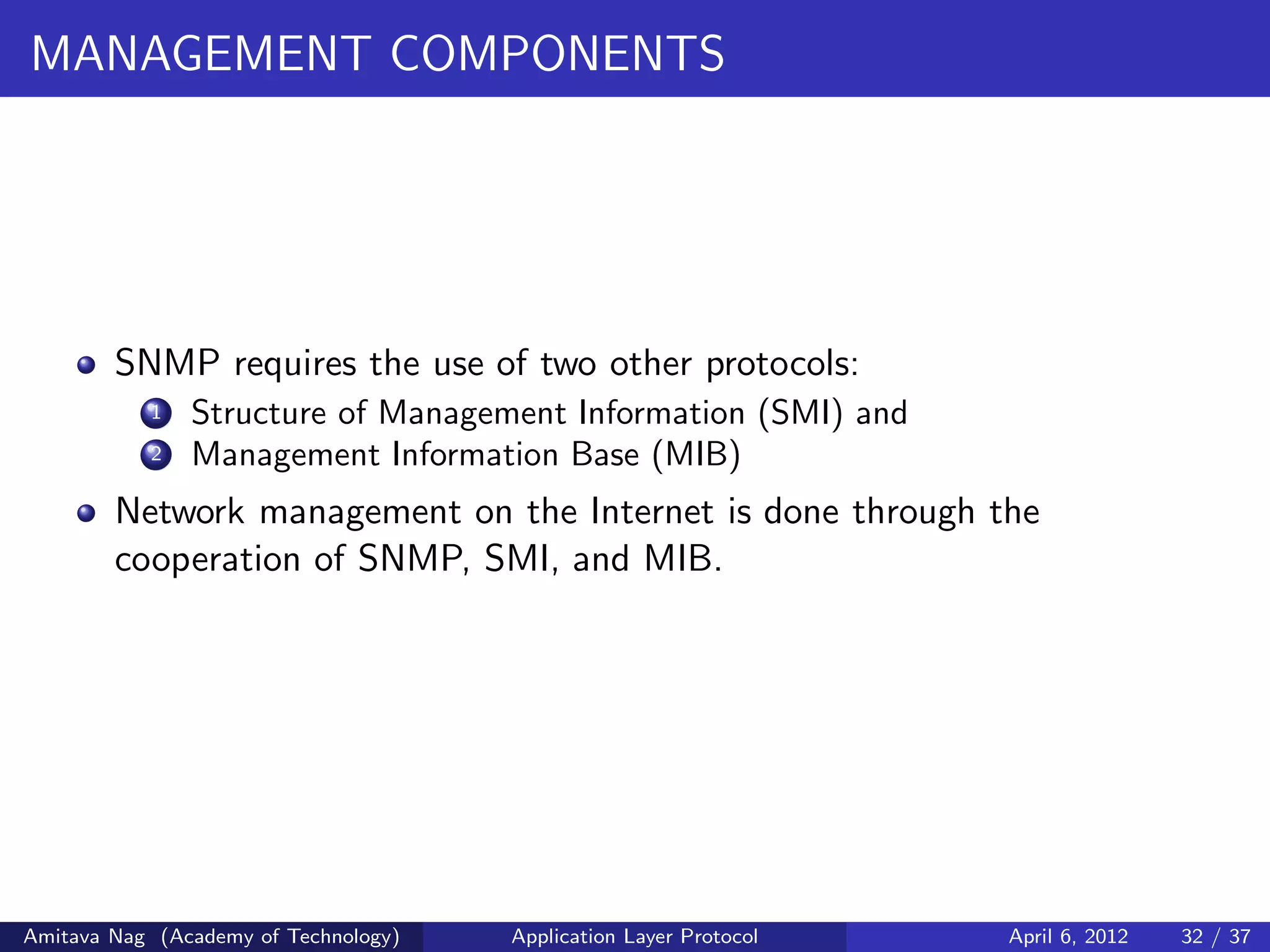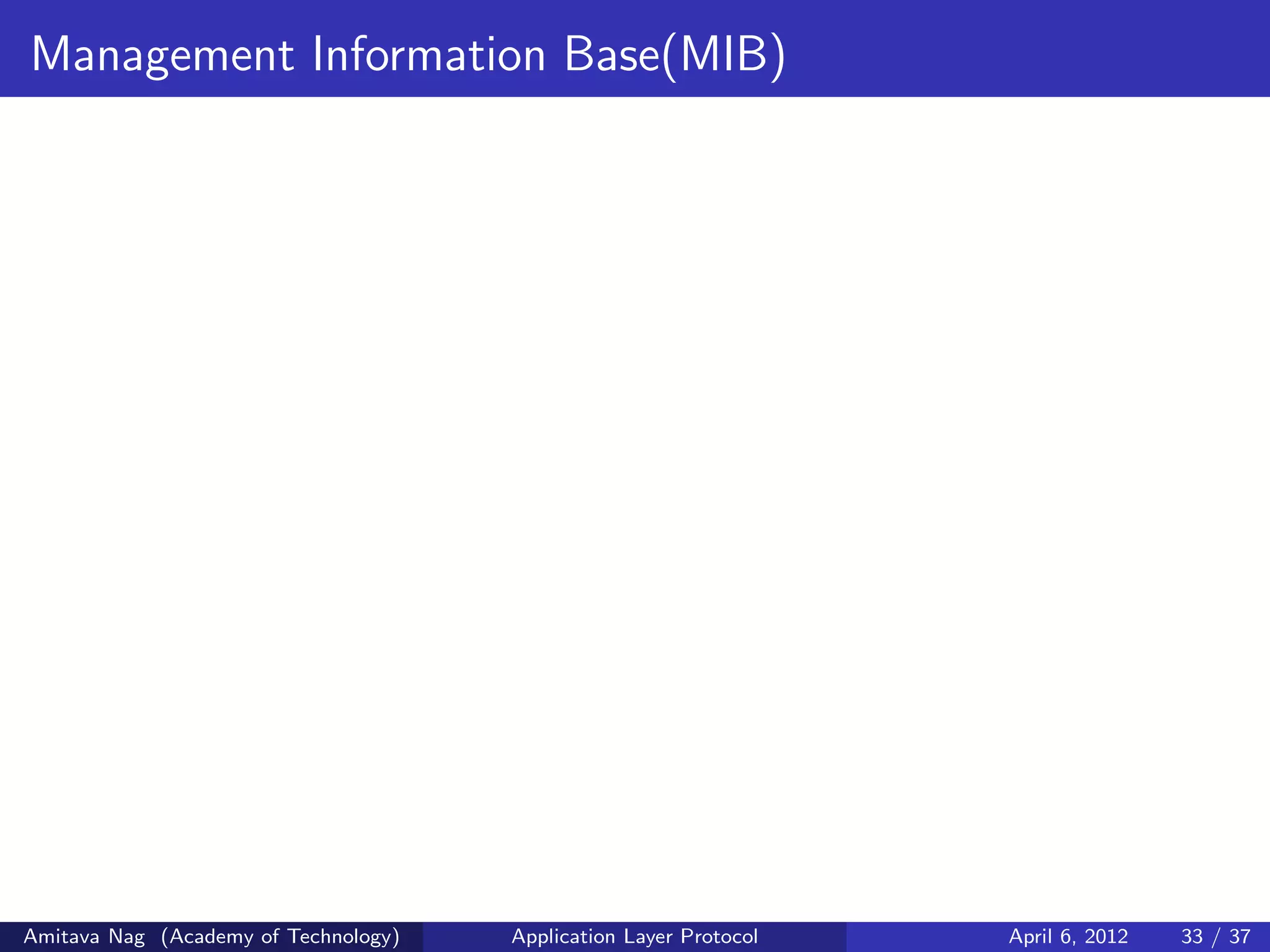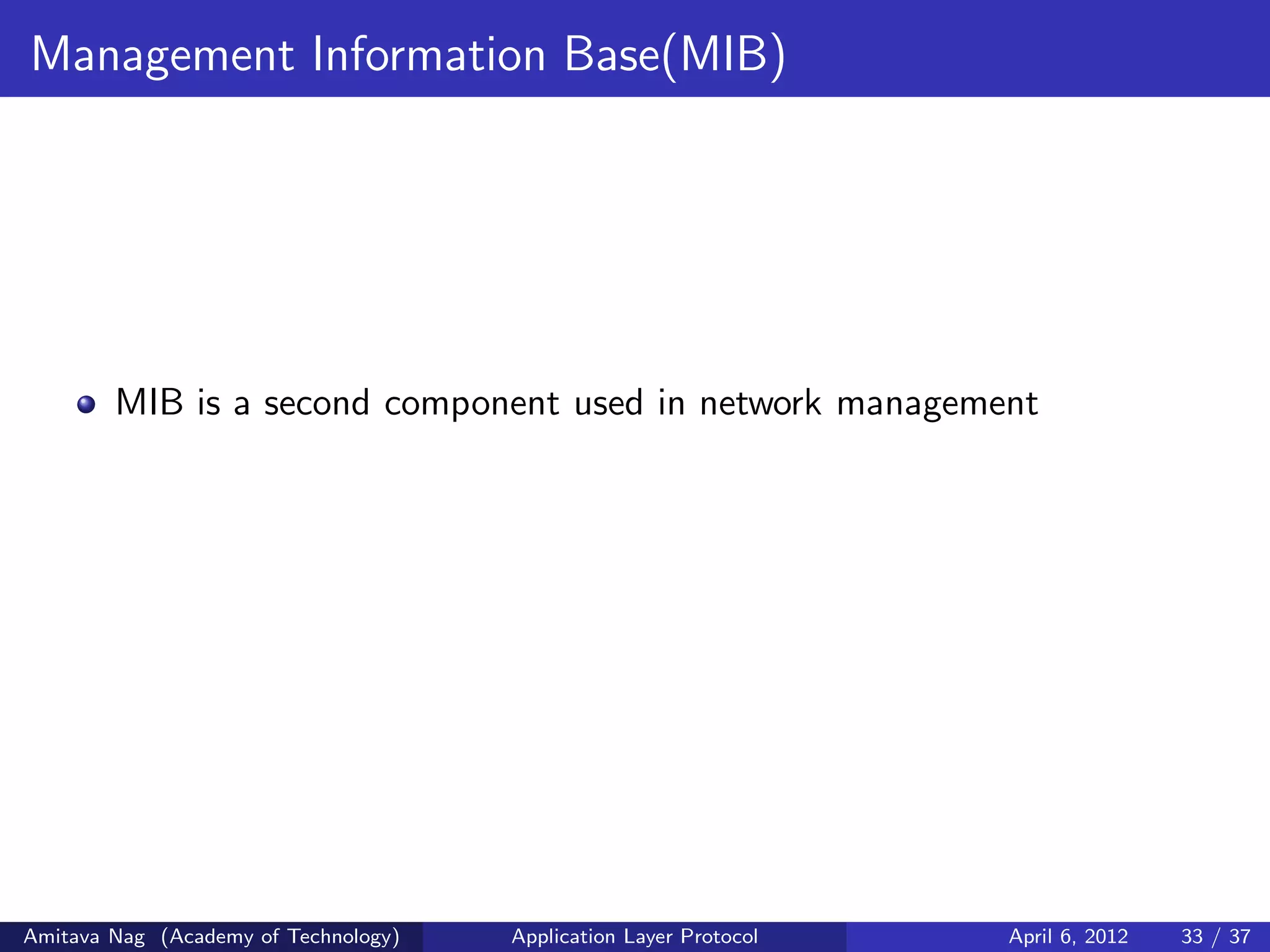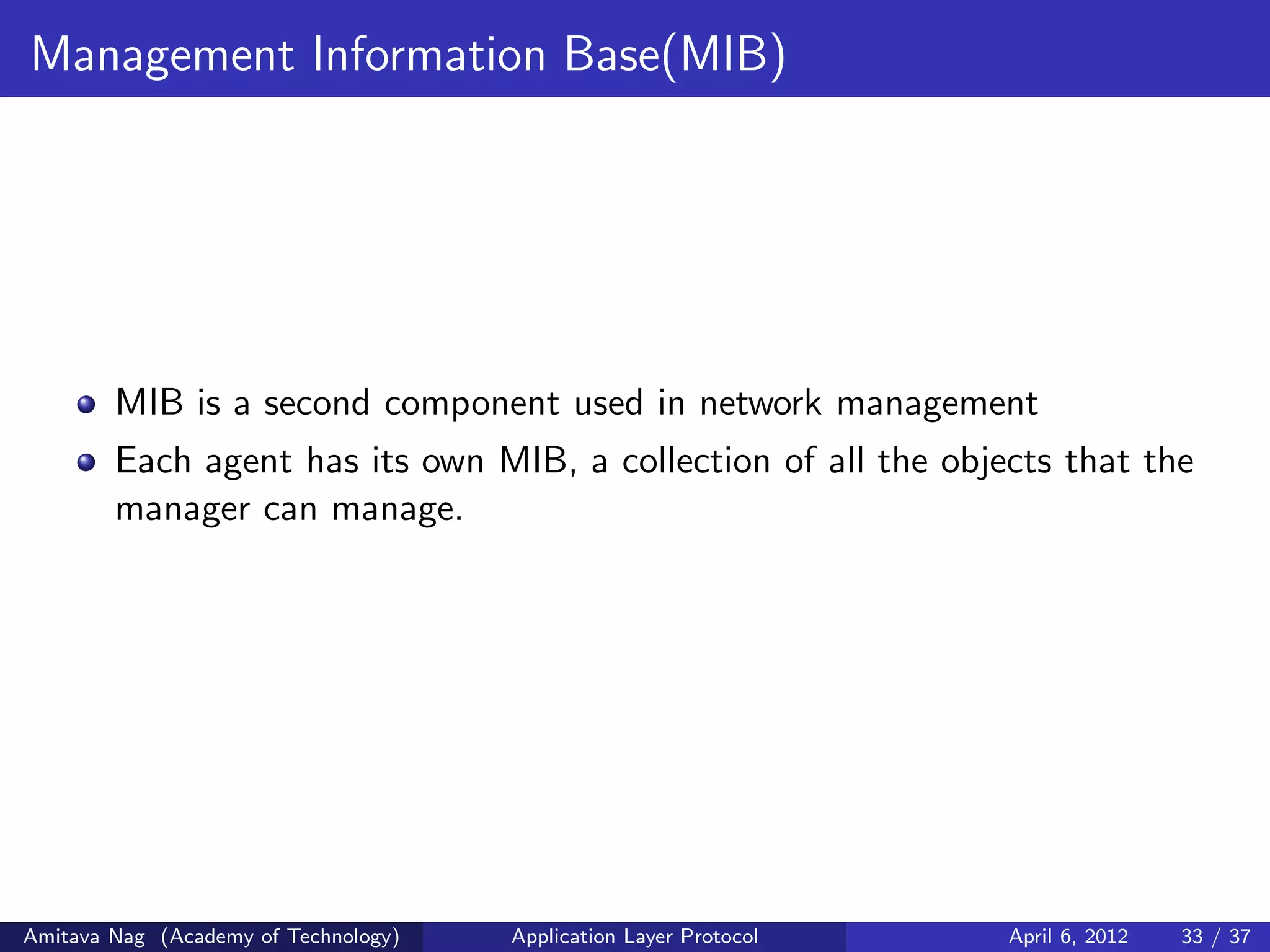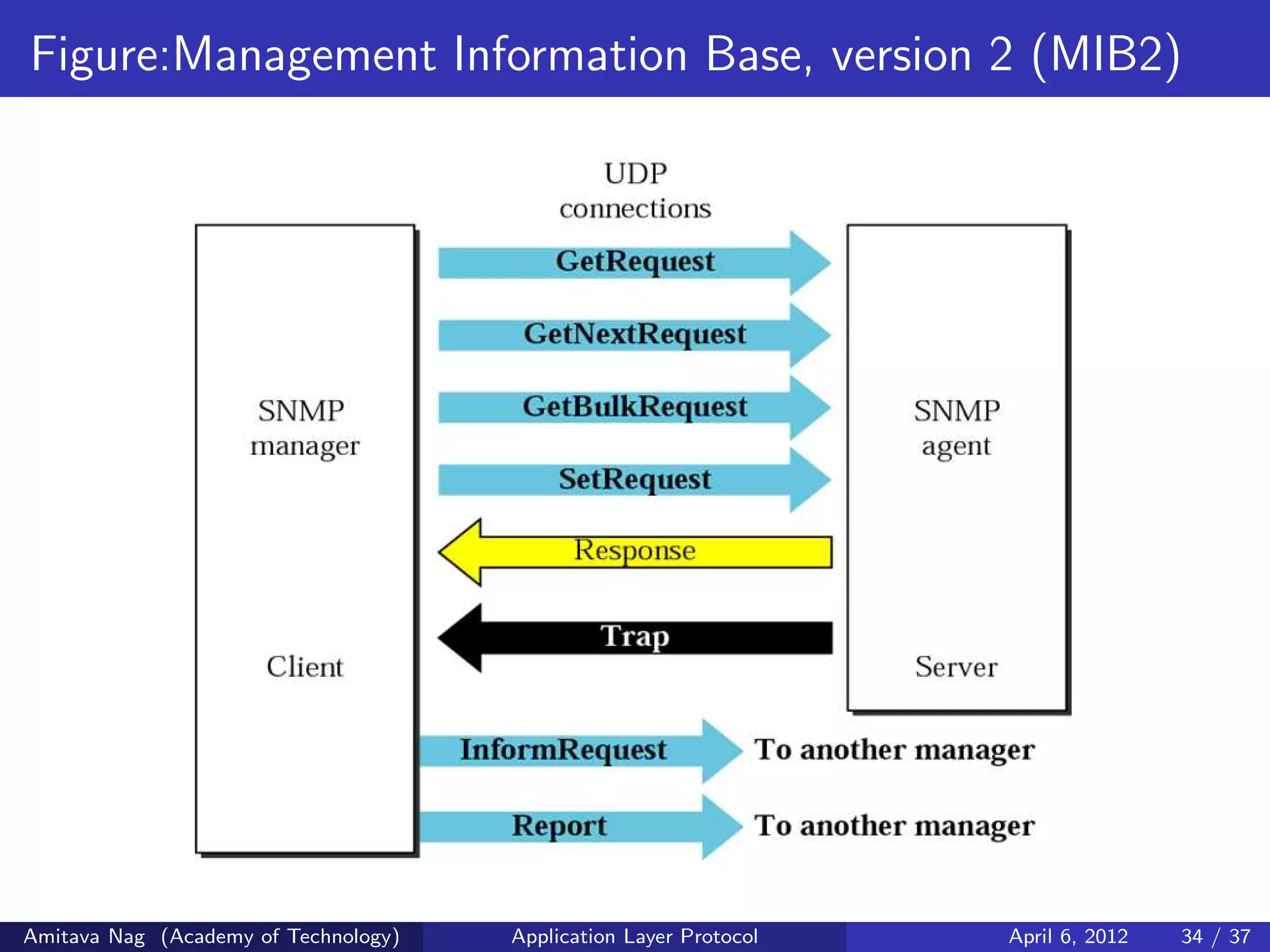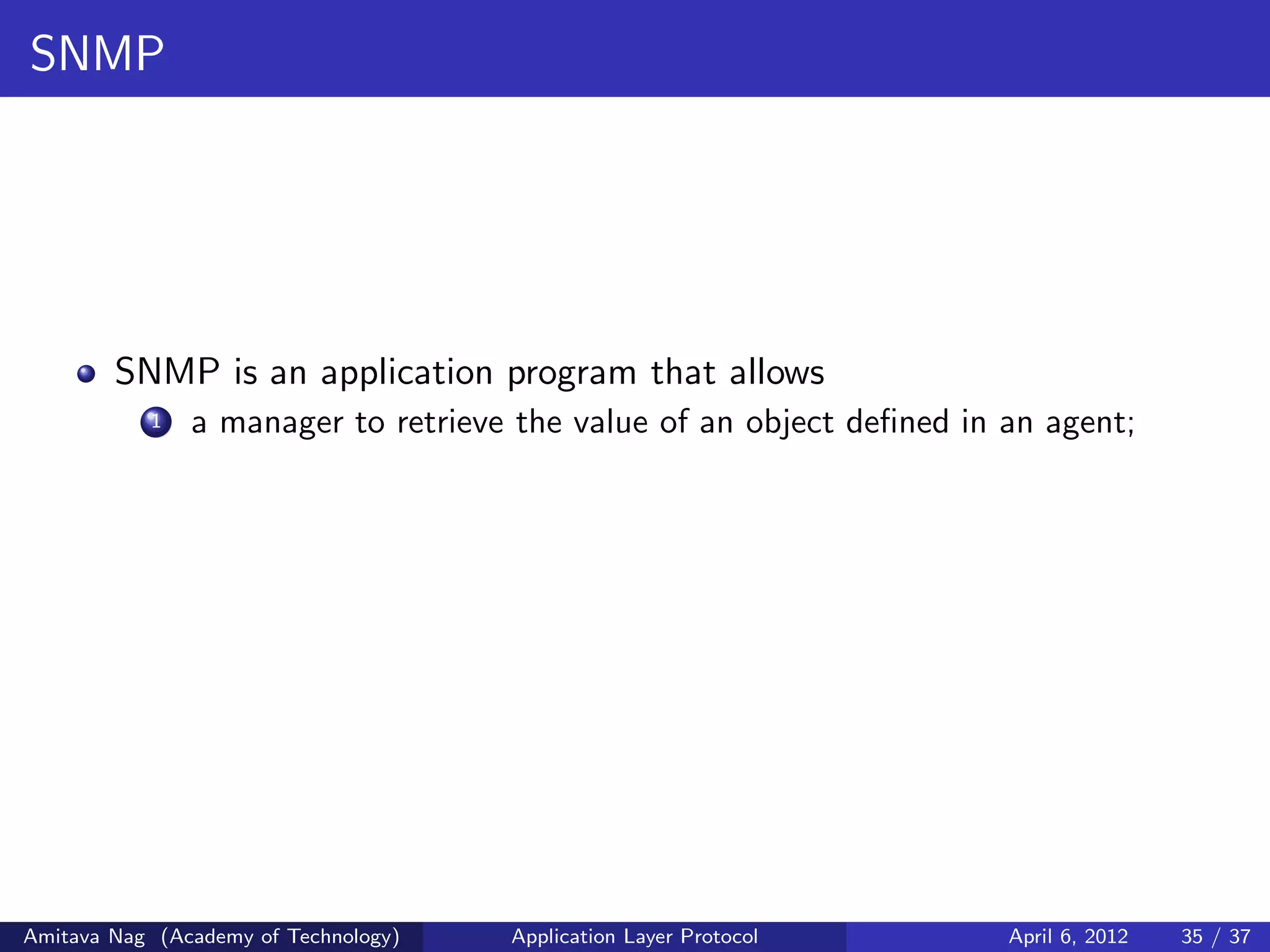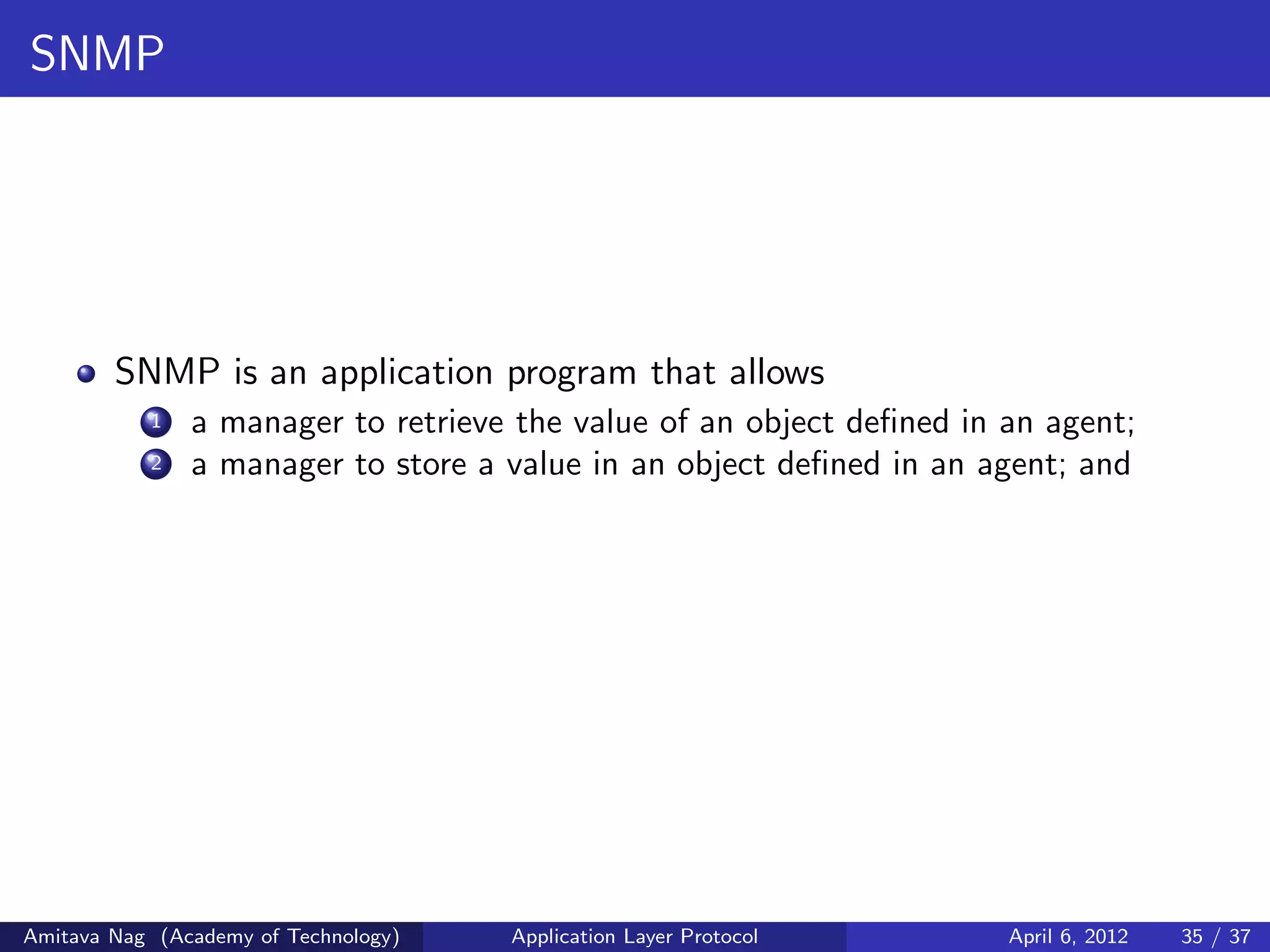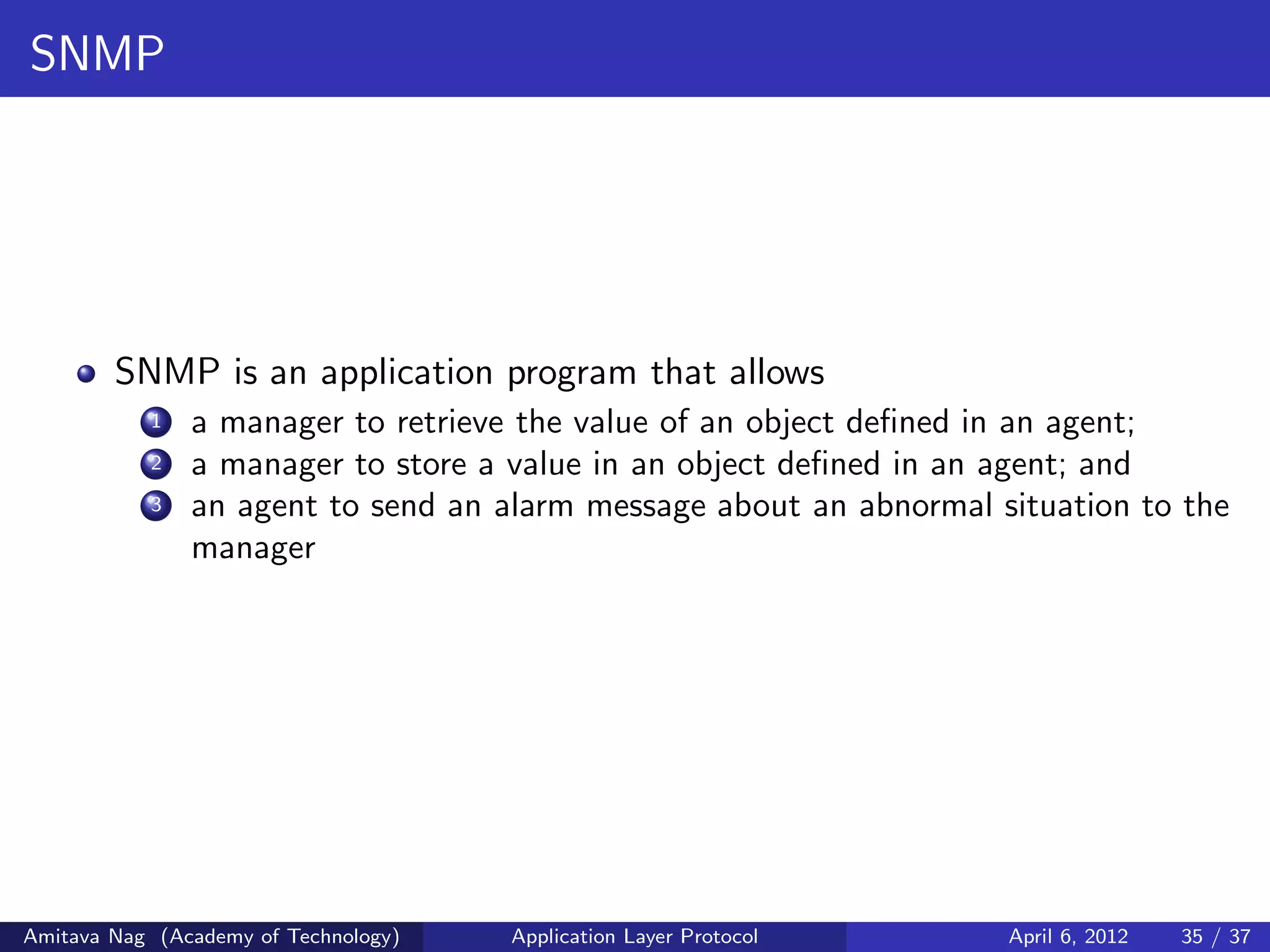This document discusses application layer protocols. It provides an overview of the architecture of the World Wide Web including how web pages are composed of multiple objects accessed via URLs. It also summarizes HTTP, describing its request/response paradigm and stateless nature. Additionally, it covers FTP for file transfer between clients and servers, including its use of separate control and data connections, and Telnet for remote login sessions.
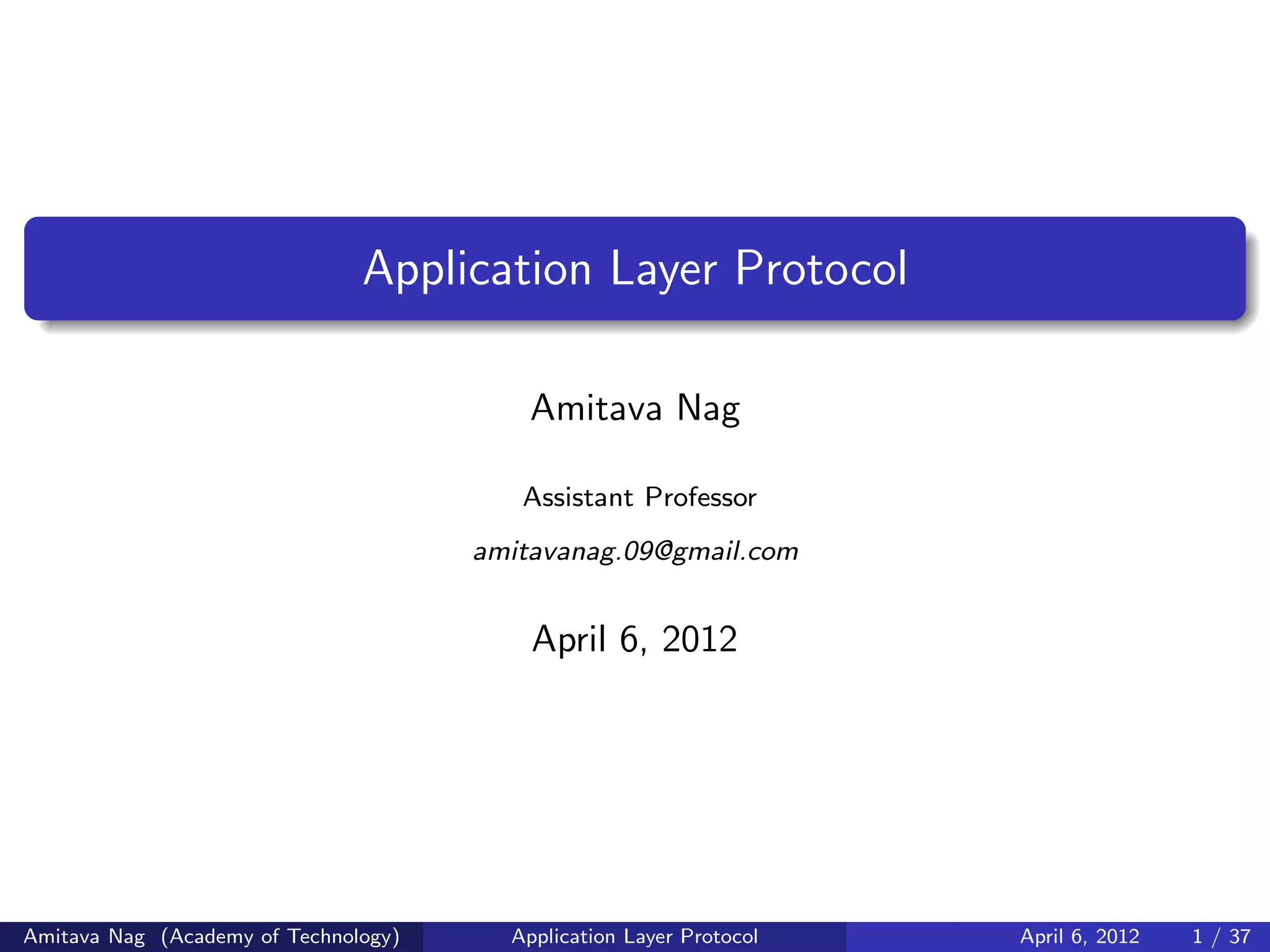
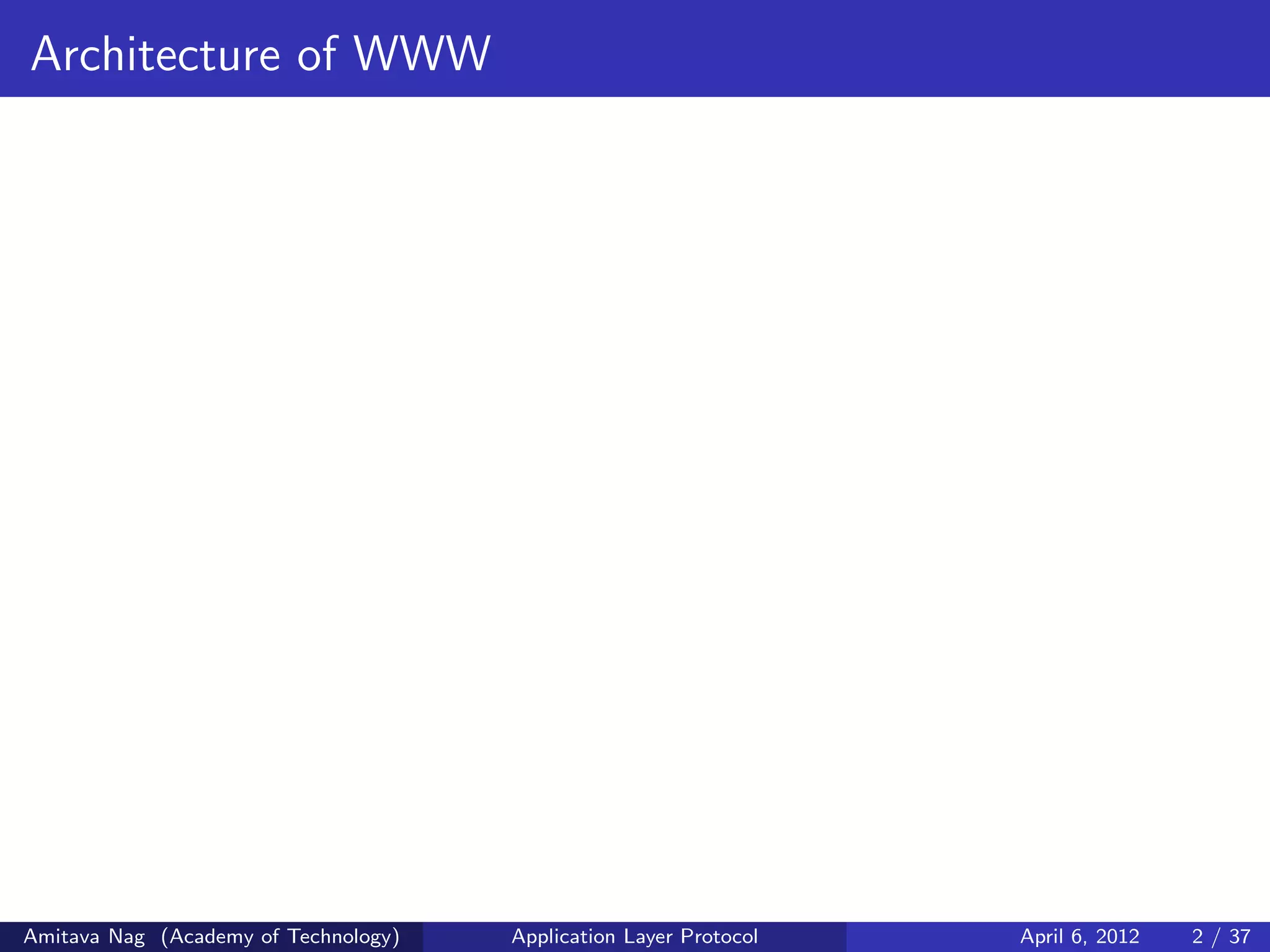

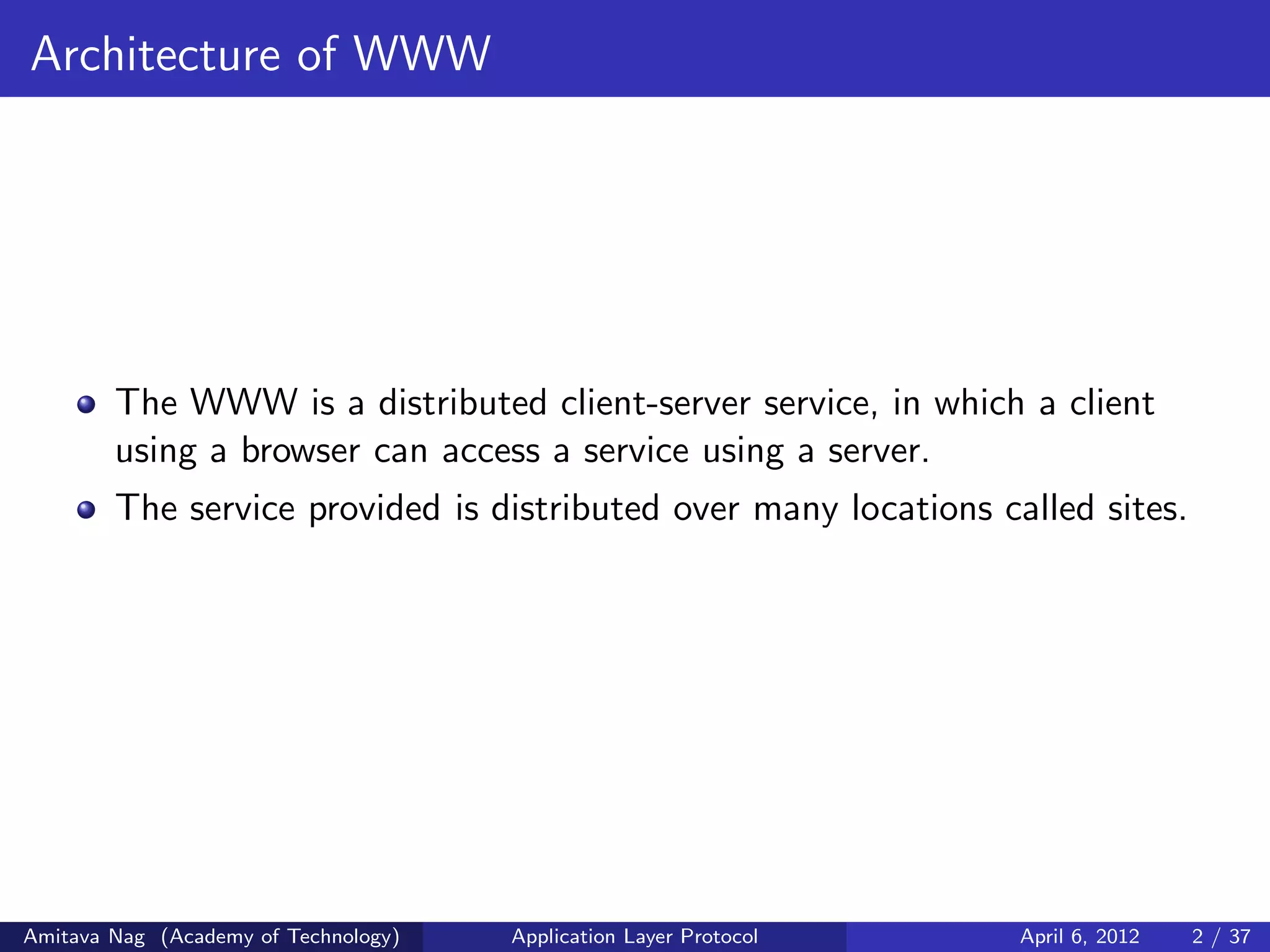
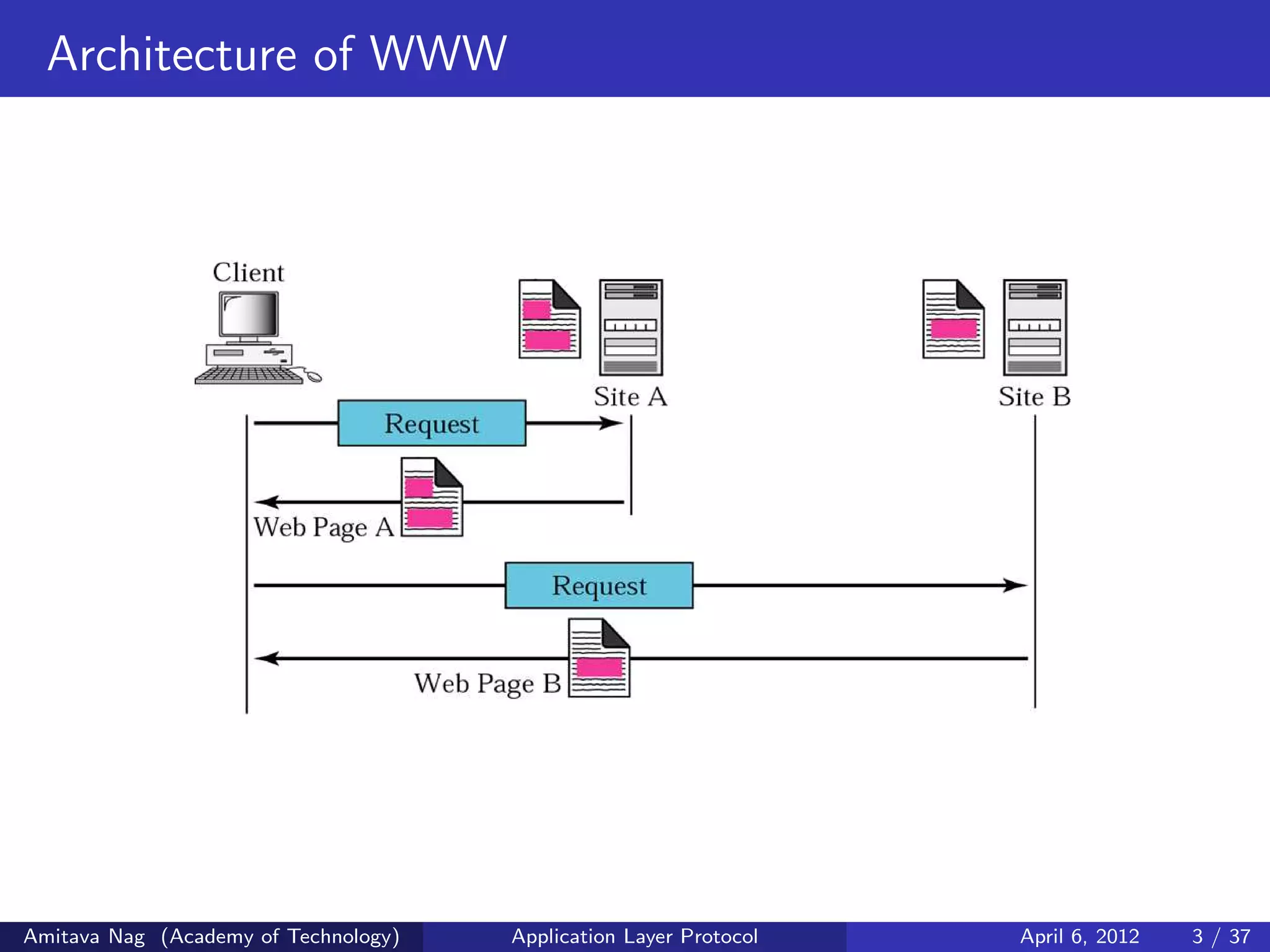

![Internet apps: application, transport protocols Application Application layer Underlying protocol transport protocol email SMTP[RFC2821] TCP remote terminal Telnet[RFC854] TCP access web HTTP[RFC2616] TCP file transfer FTP[RFC959] TCP Remote File Server NFS UDP/TCP Amitava Nag (Academy of Technology) Application Layer Protocol April 6, 2012 5 / 37](https://image.slidesharecdn.com/applicationlayerprotocol1-150219033455-conversion-gate01/75/Application-layer-protocol-7-2048.jpg)
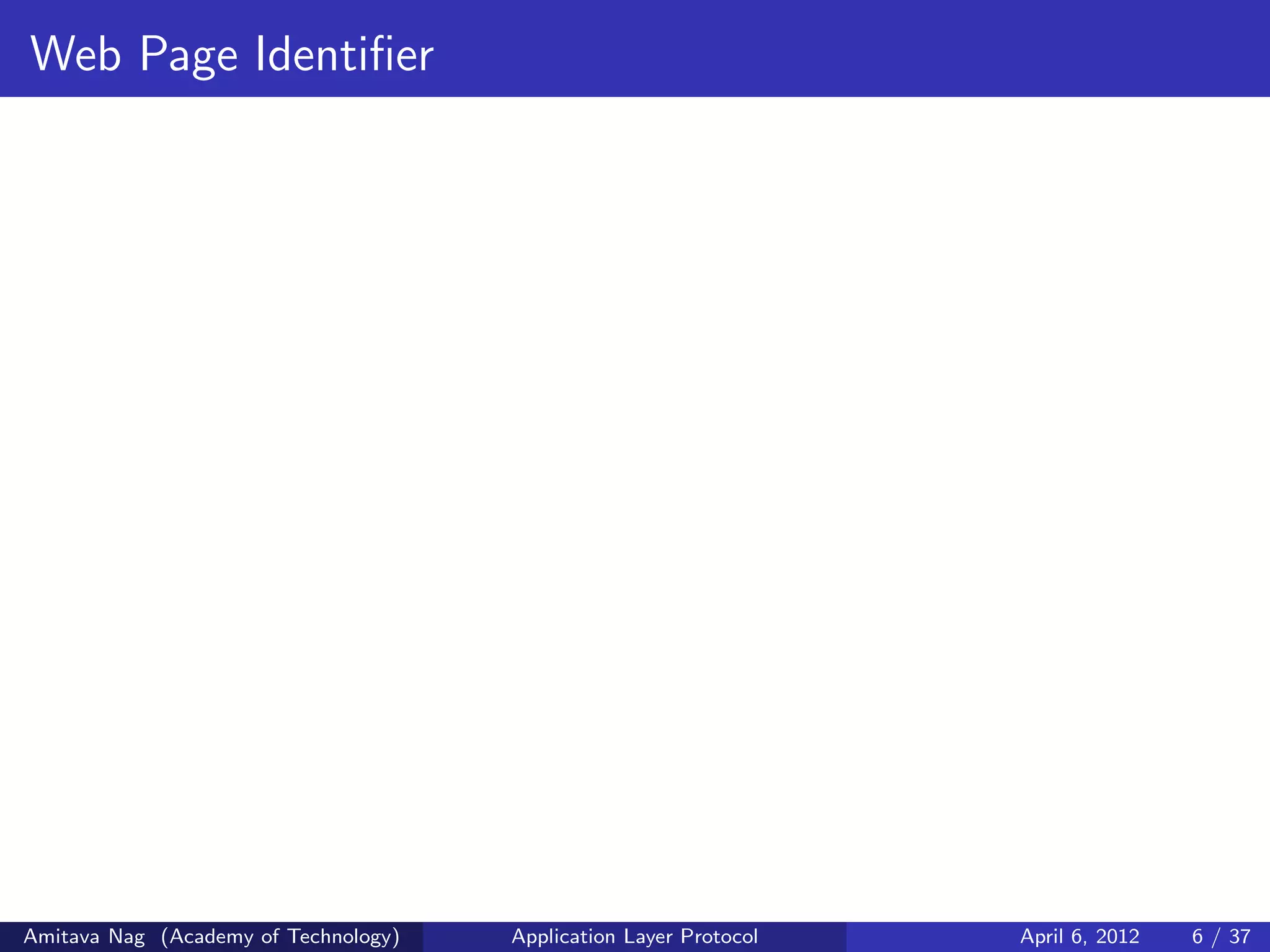
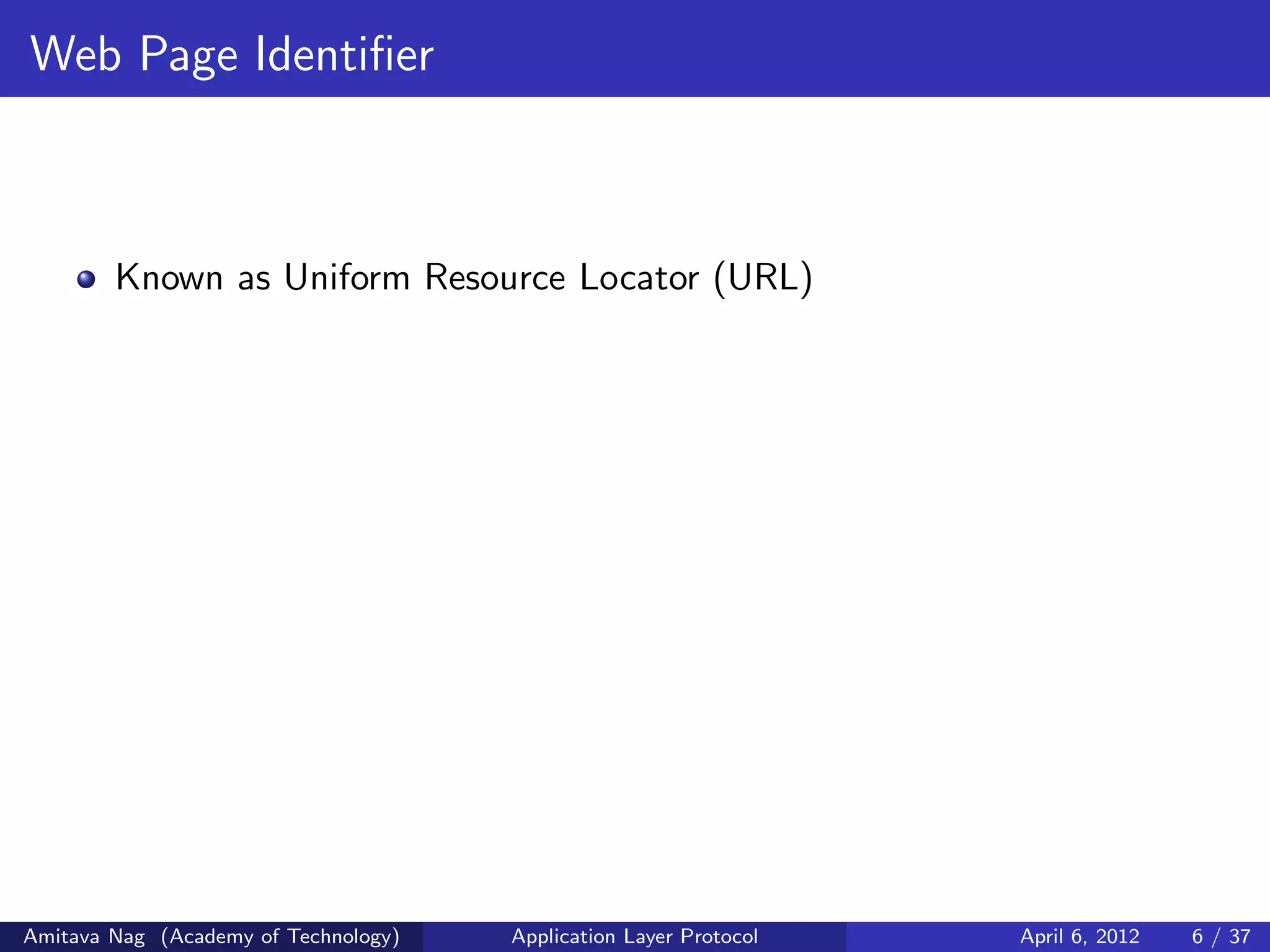
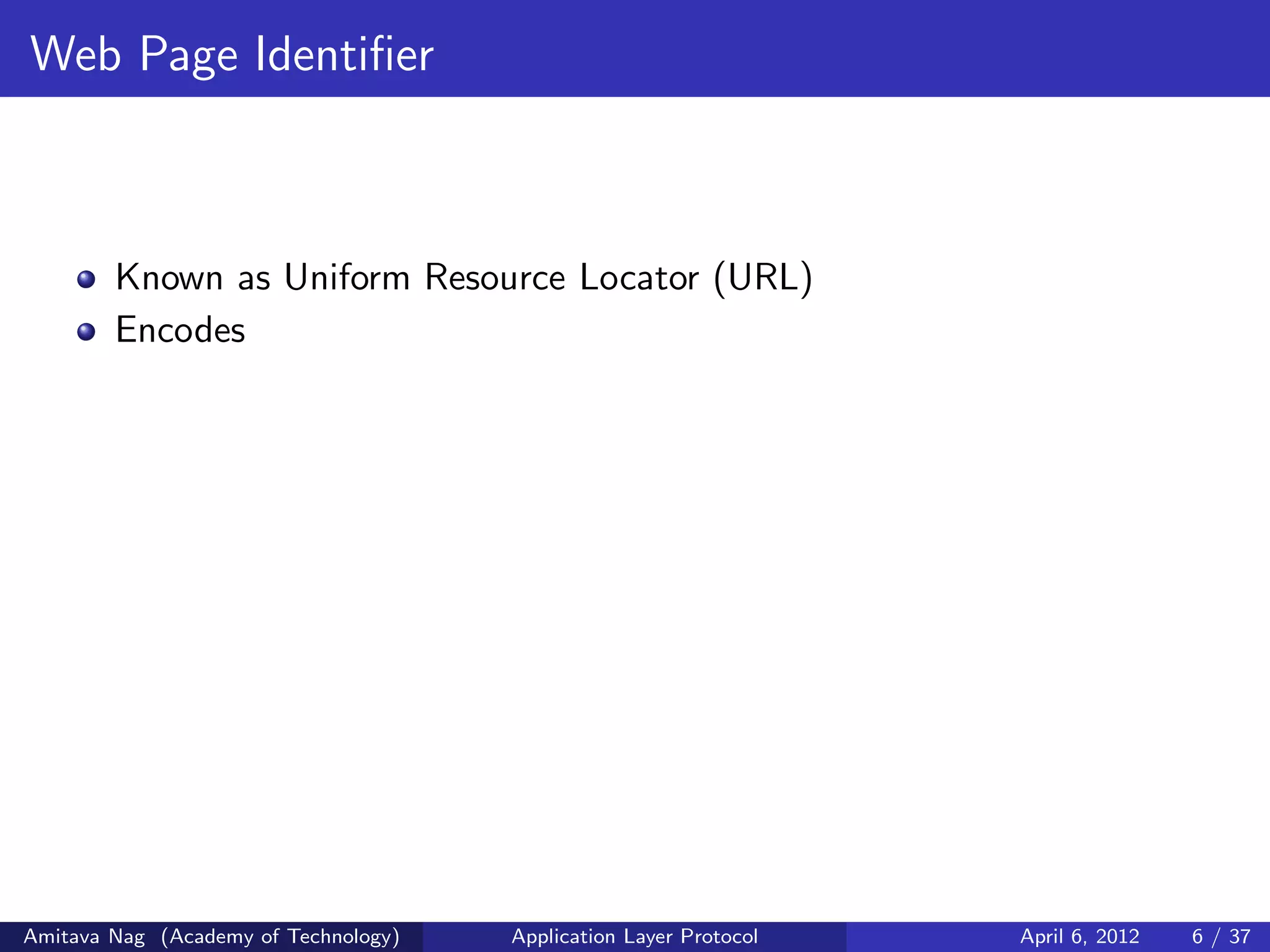





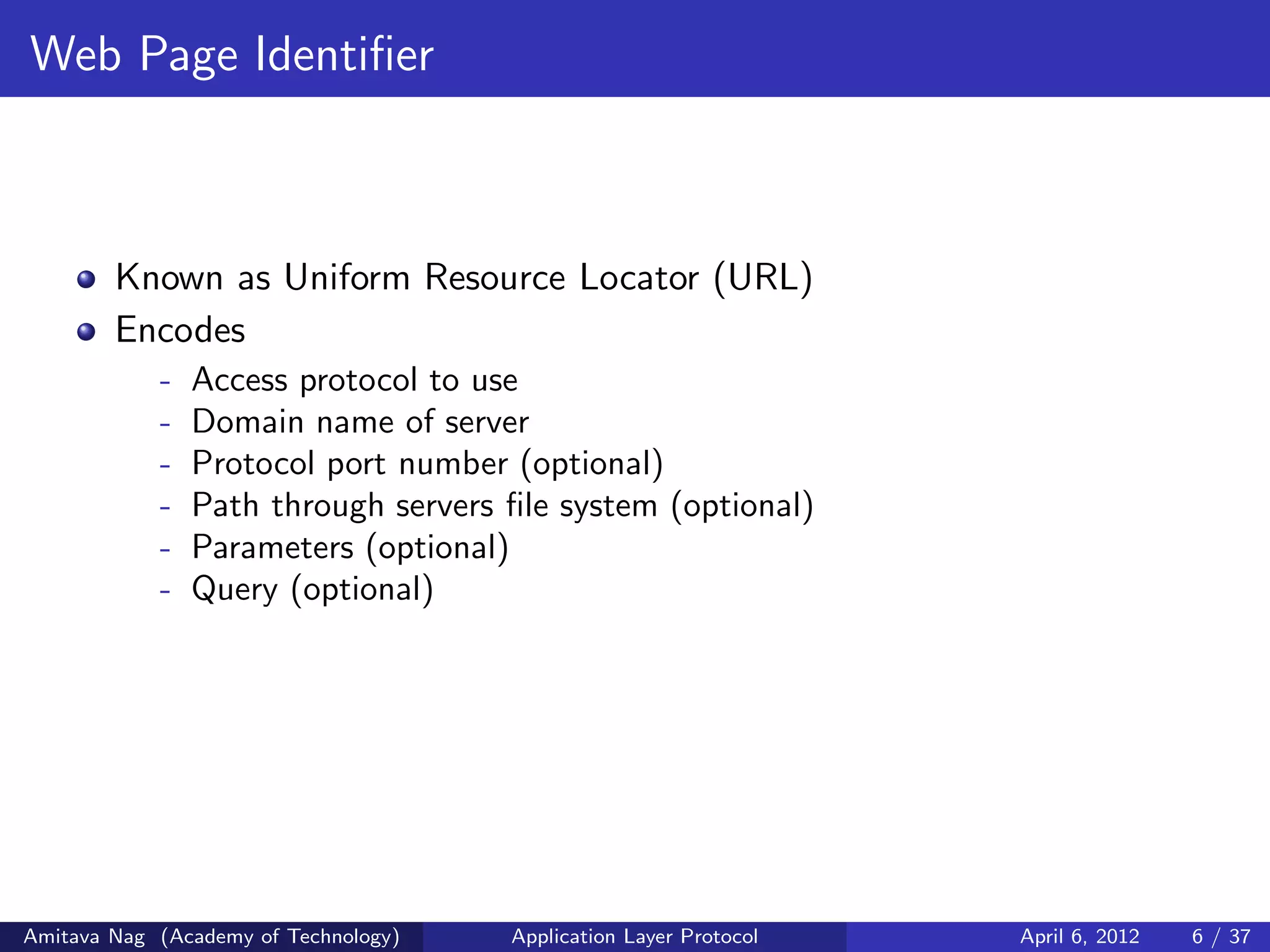
![Web Page Identifier Known as Uniform Resource Locator (URL) Encodes - Access protocol to use - Domain name of server - Protocol port number (optional) - Path through servers file system (optional) - Parameters (optional) - Query (optional) Format http: // hostname [: port] / path [; parameters] [? query] Amitava Nag (Academy of Technology) Application Layer Protocol April 6, 2012 6 / 37](https://image.slidesharecdn.com/applicationlayerprotocol1-150219033455-conversion-gate01/75/Application-layer-protocol-17-2048.jpg)
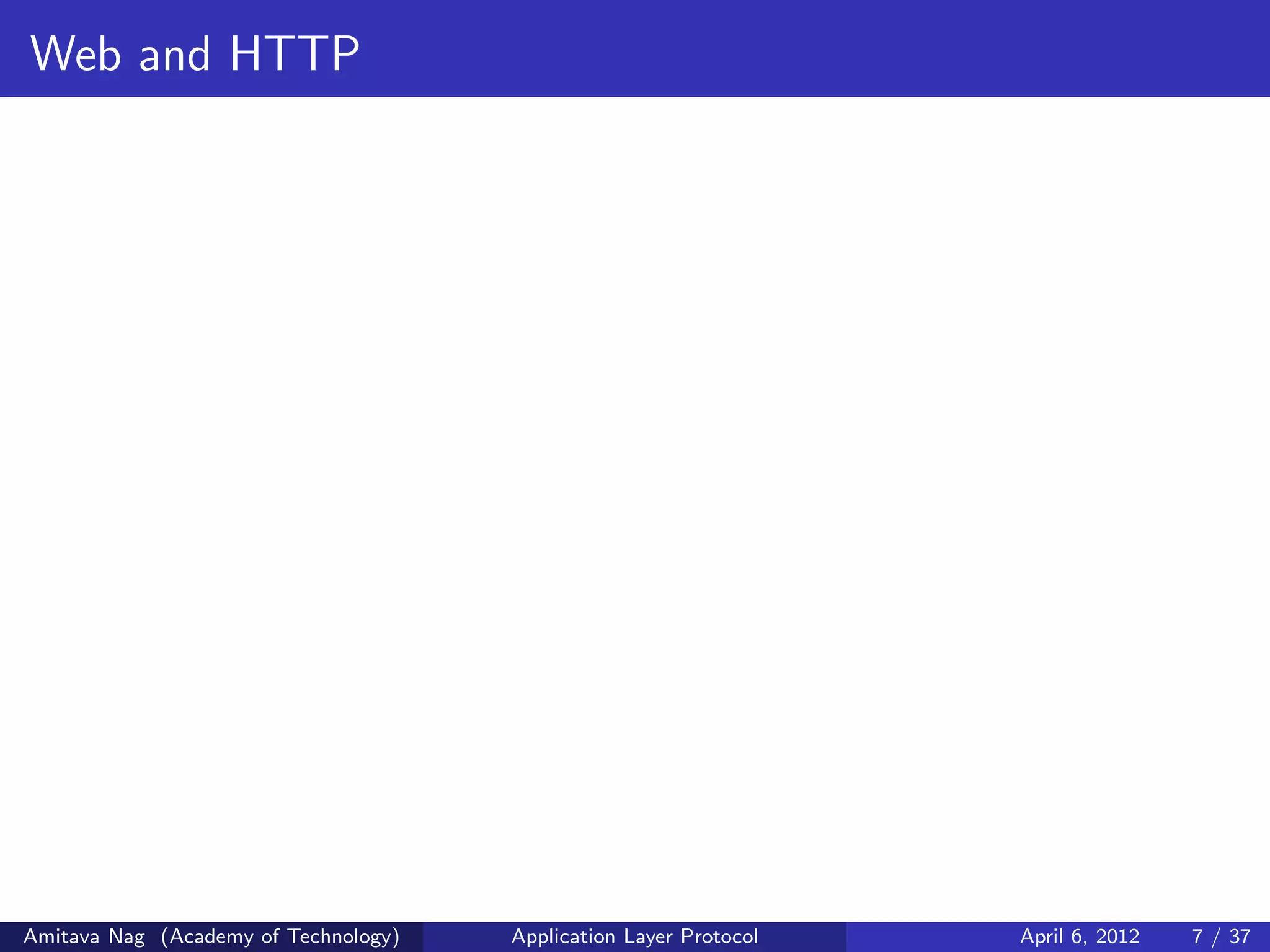

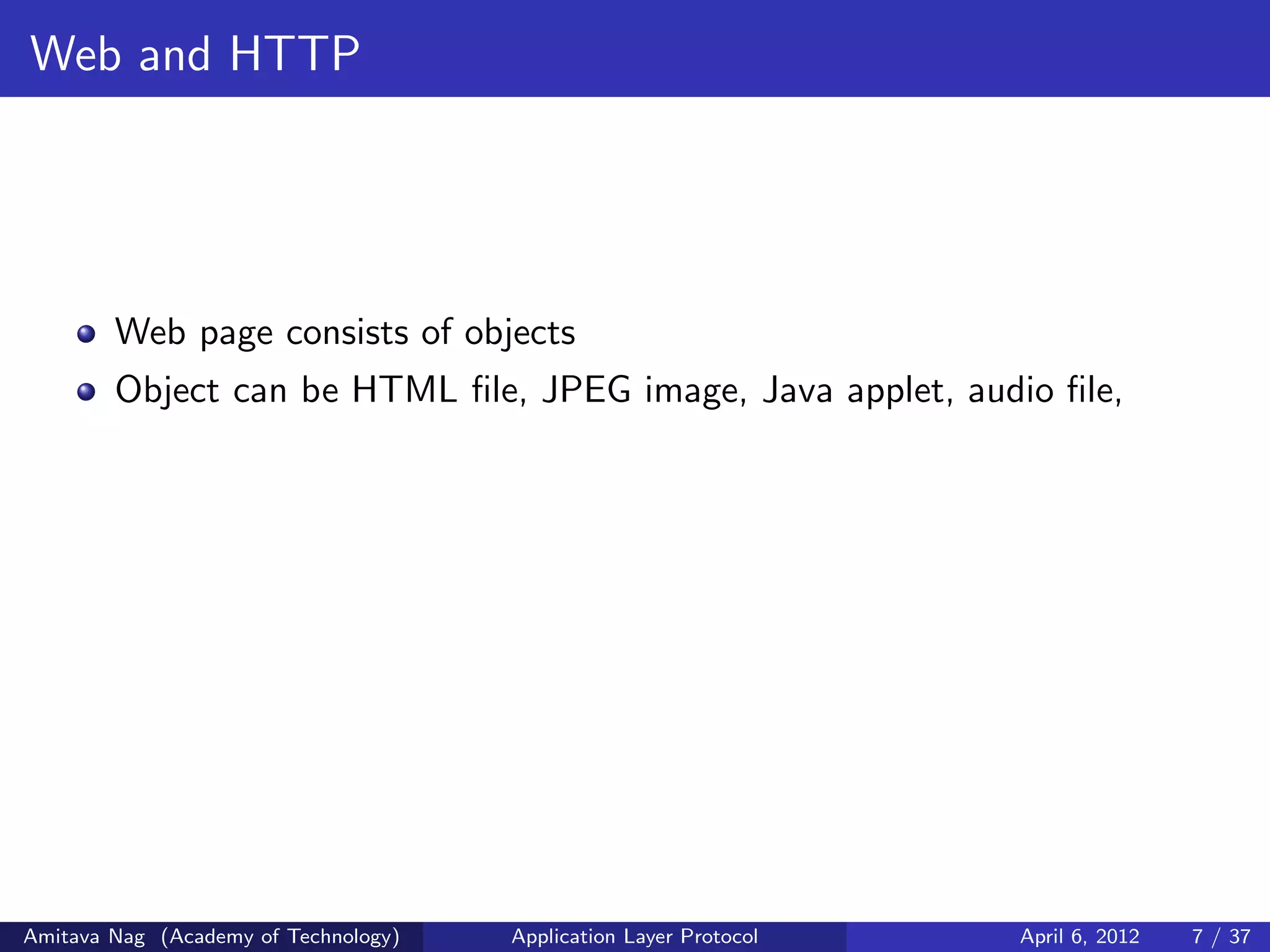
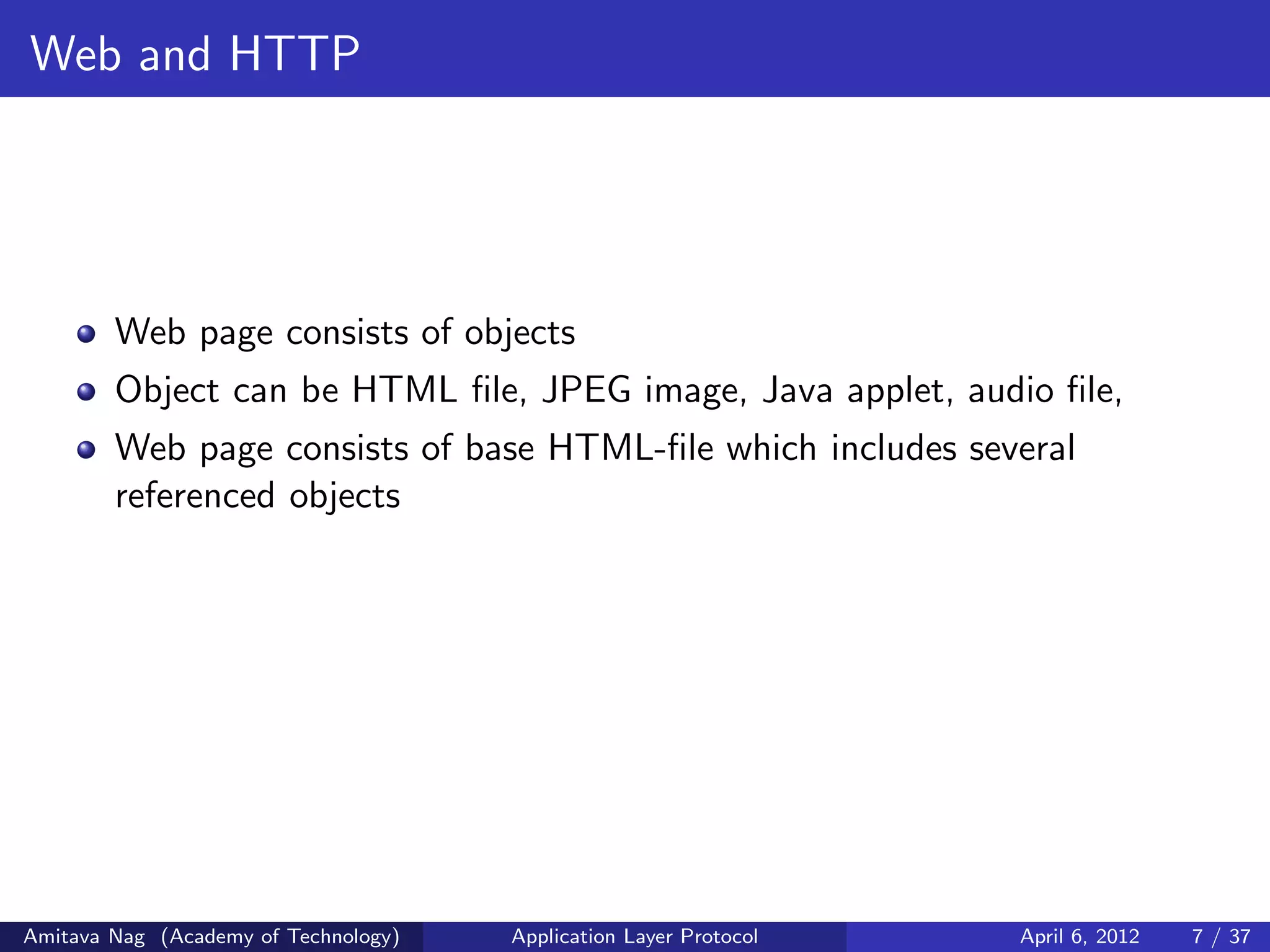
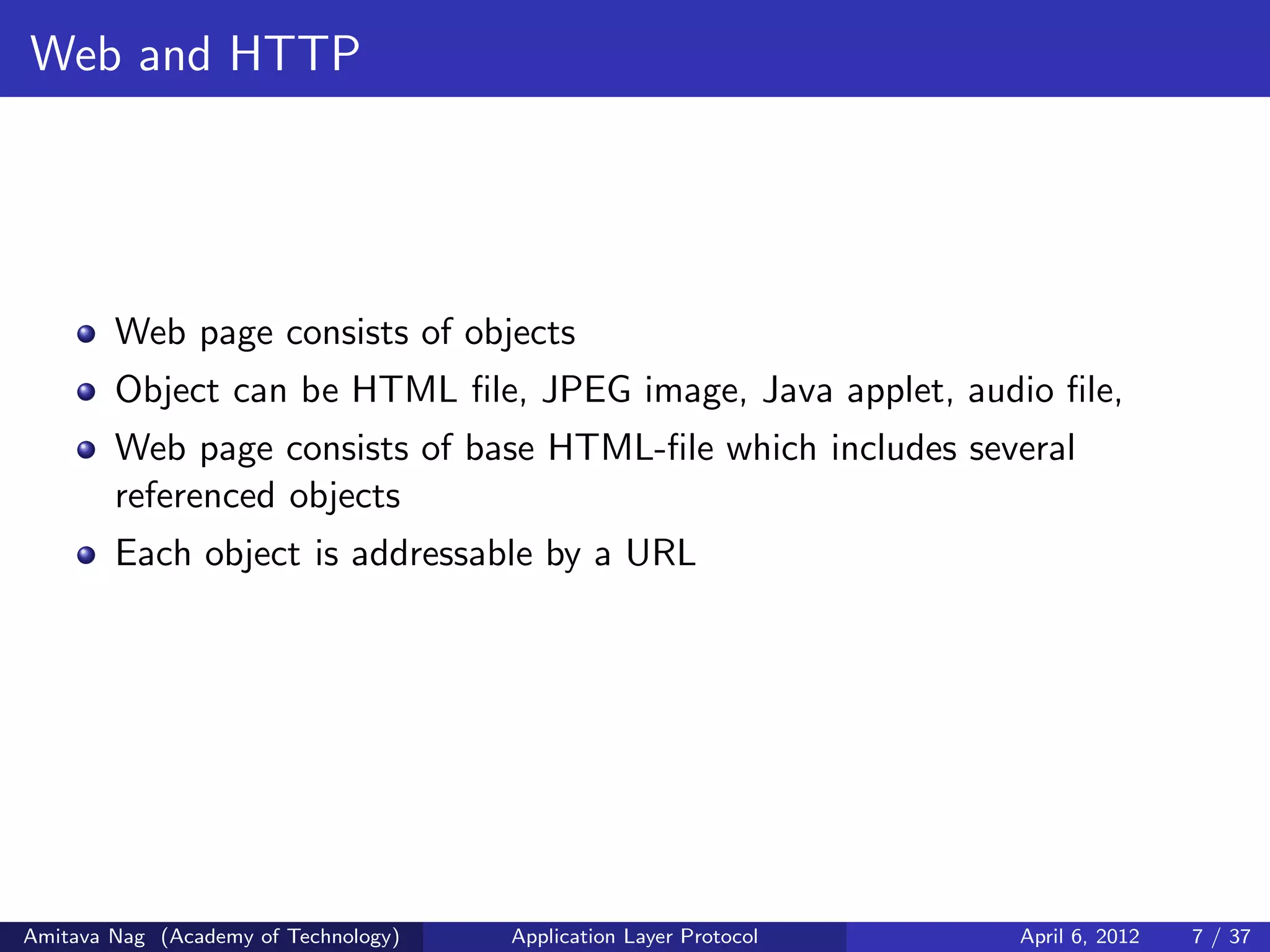

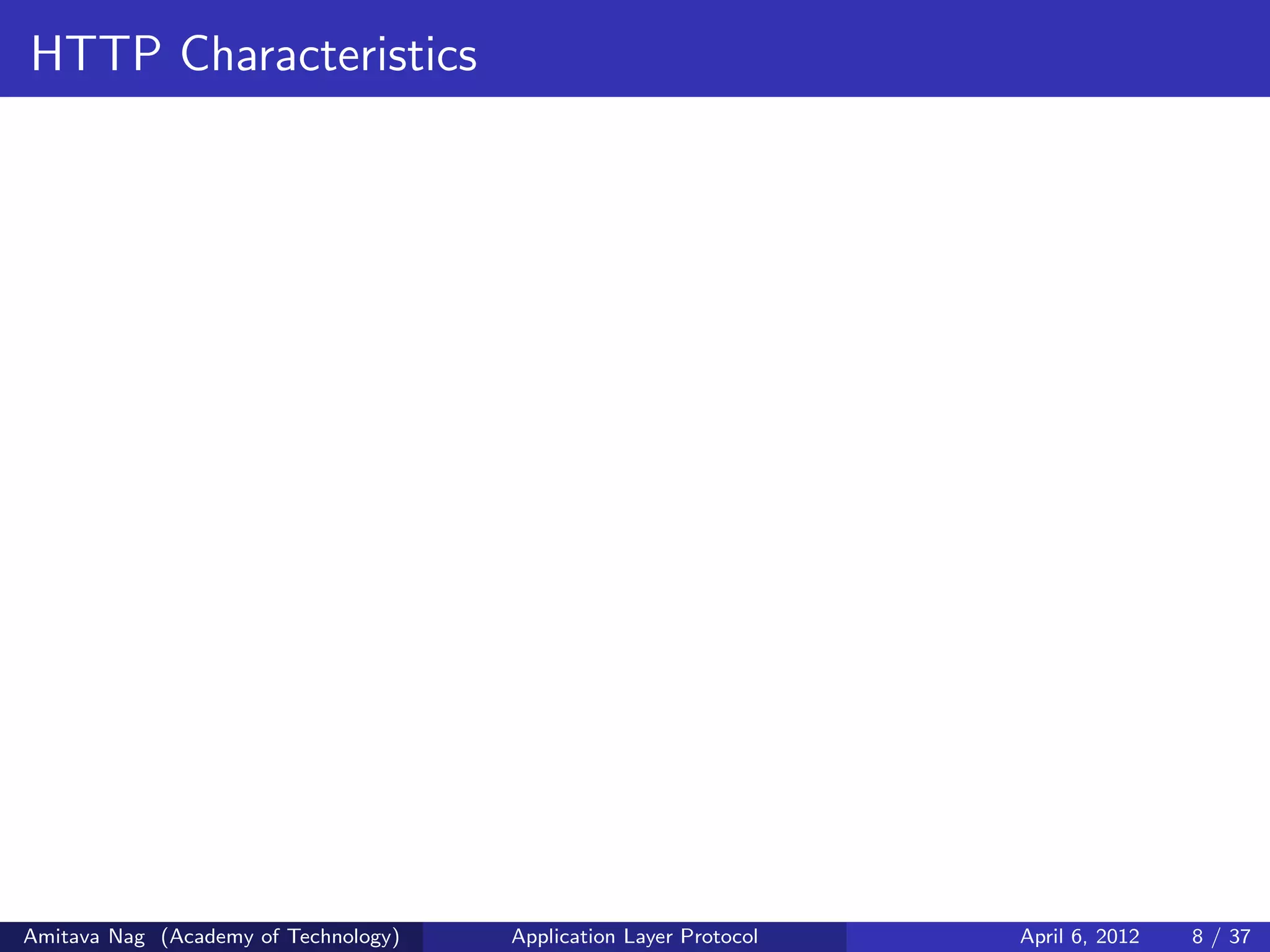
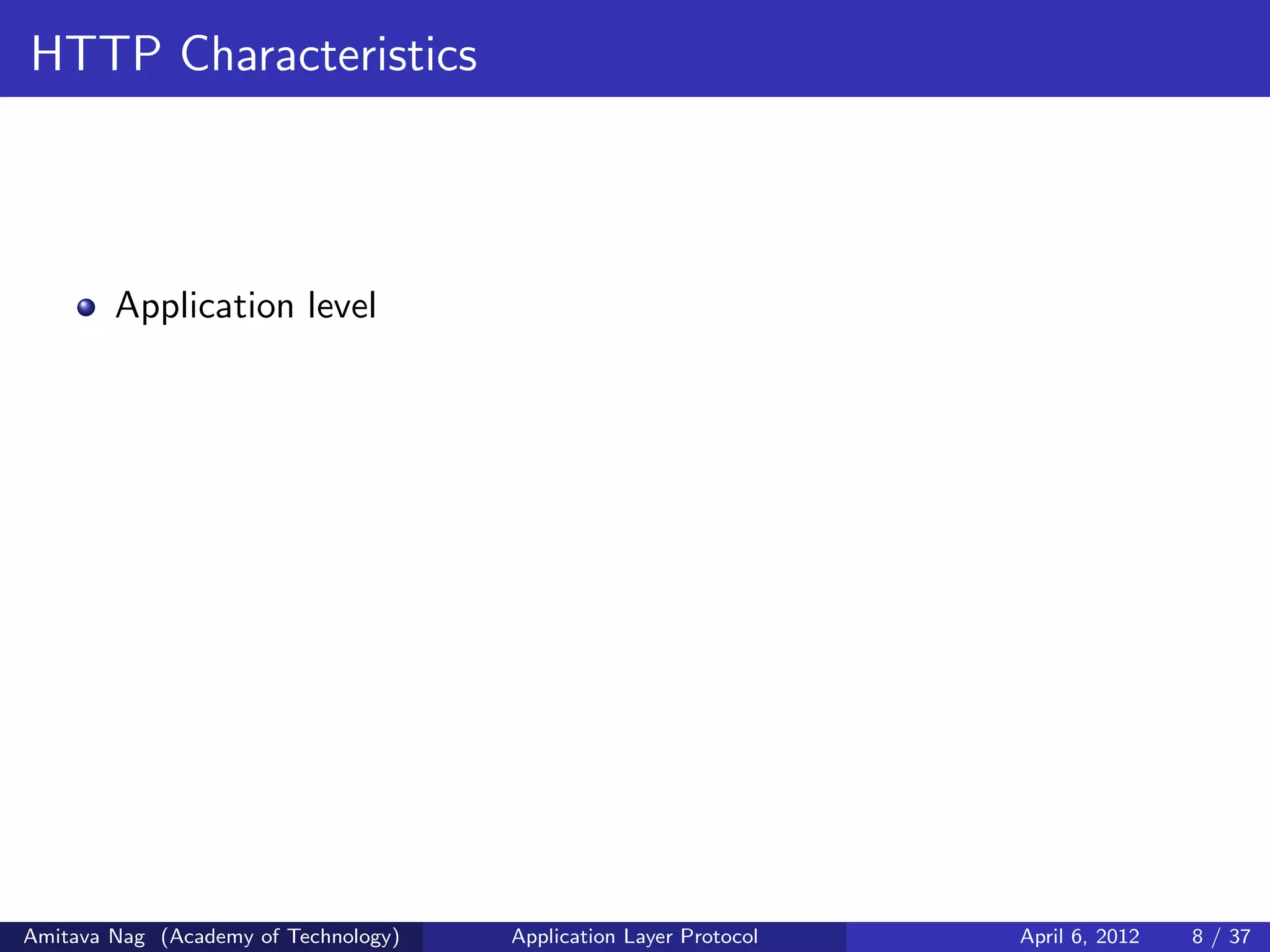
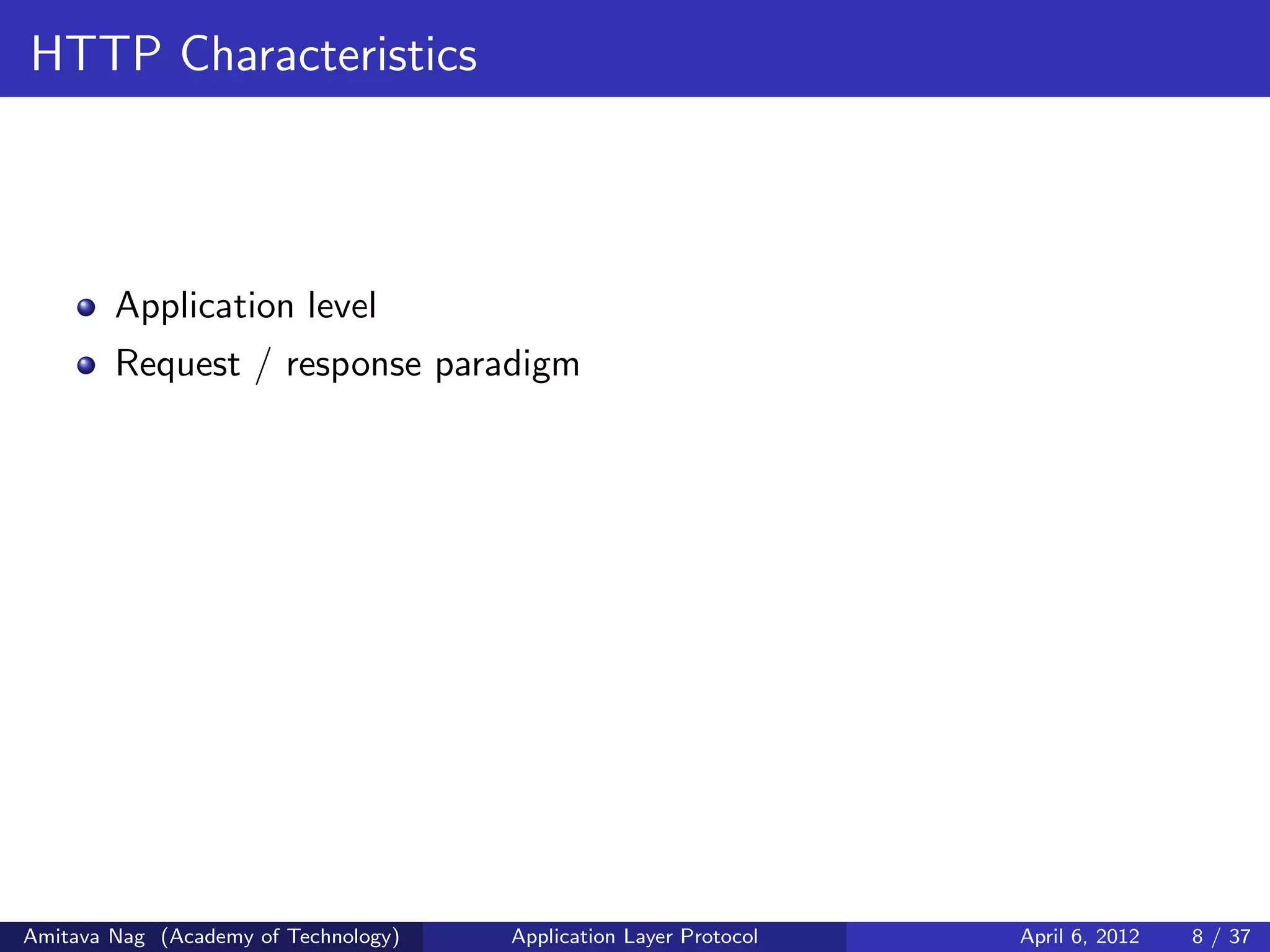
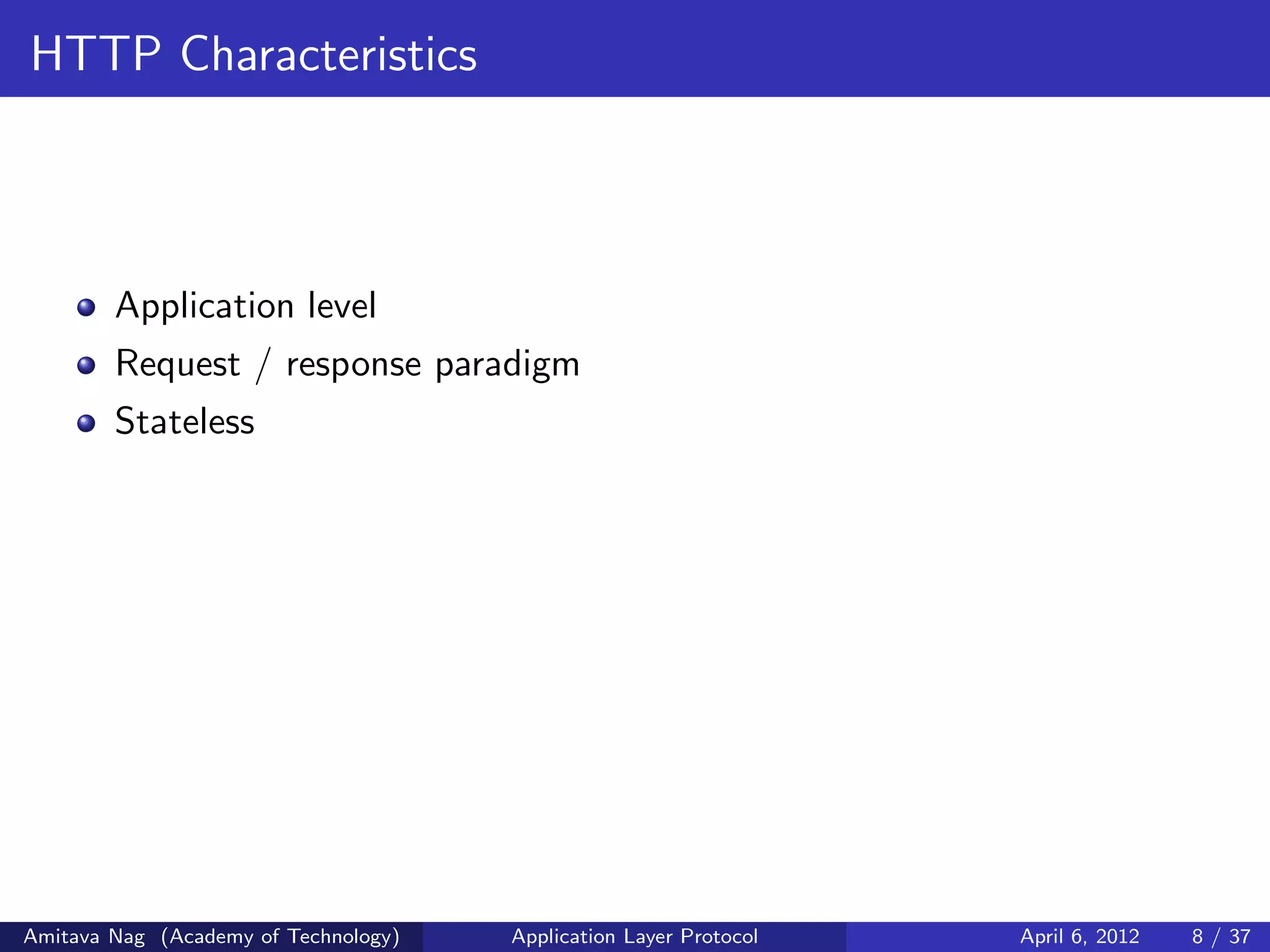
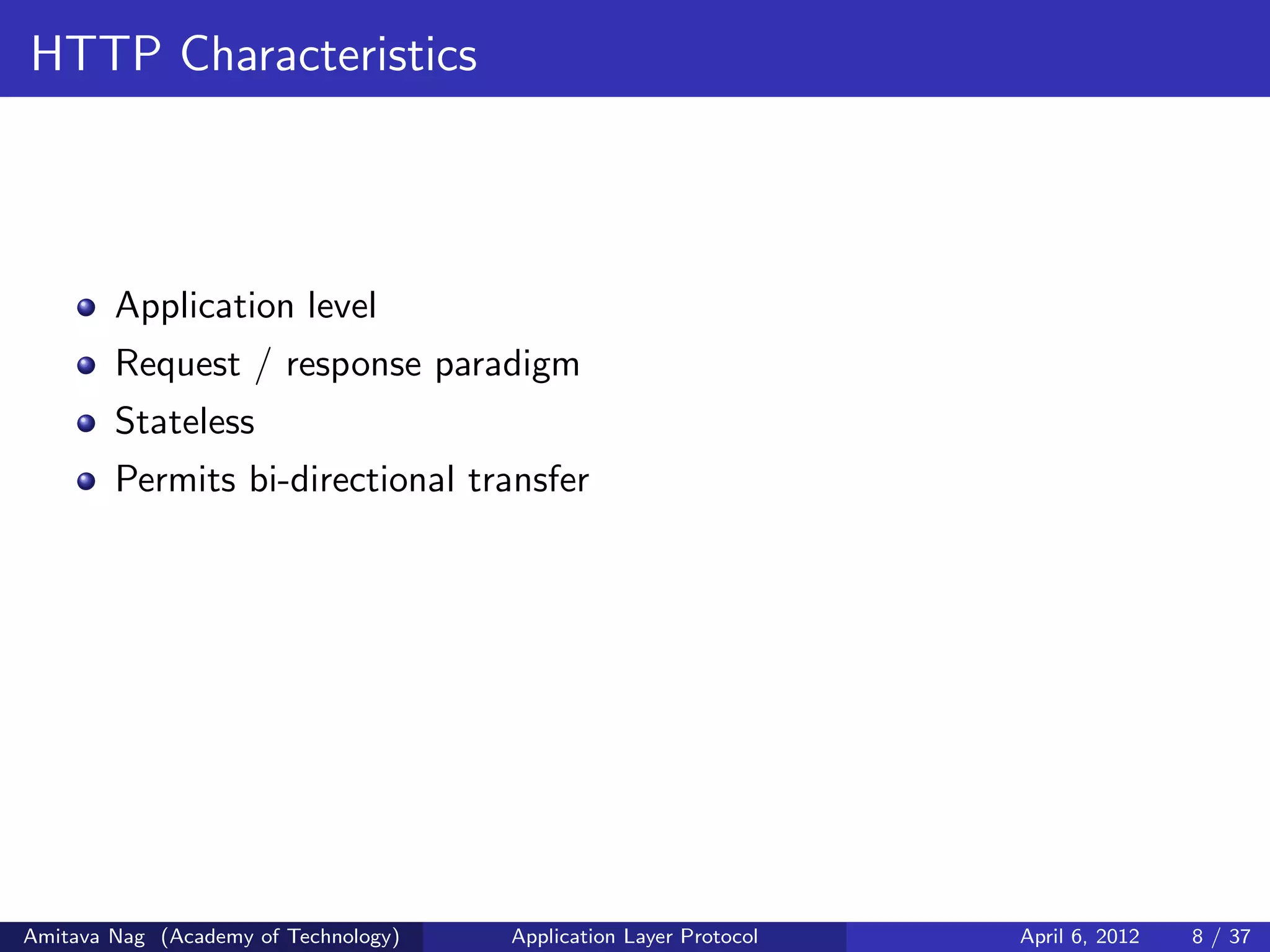

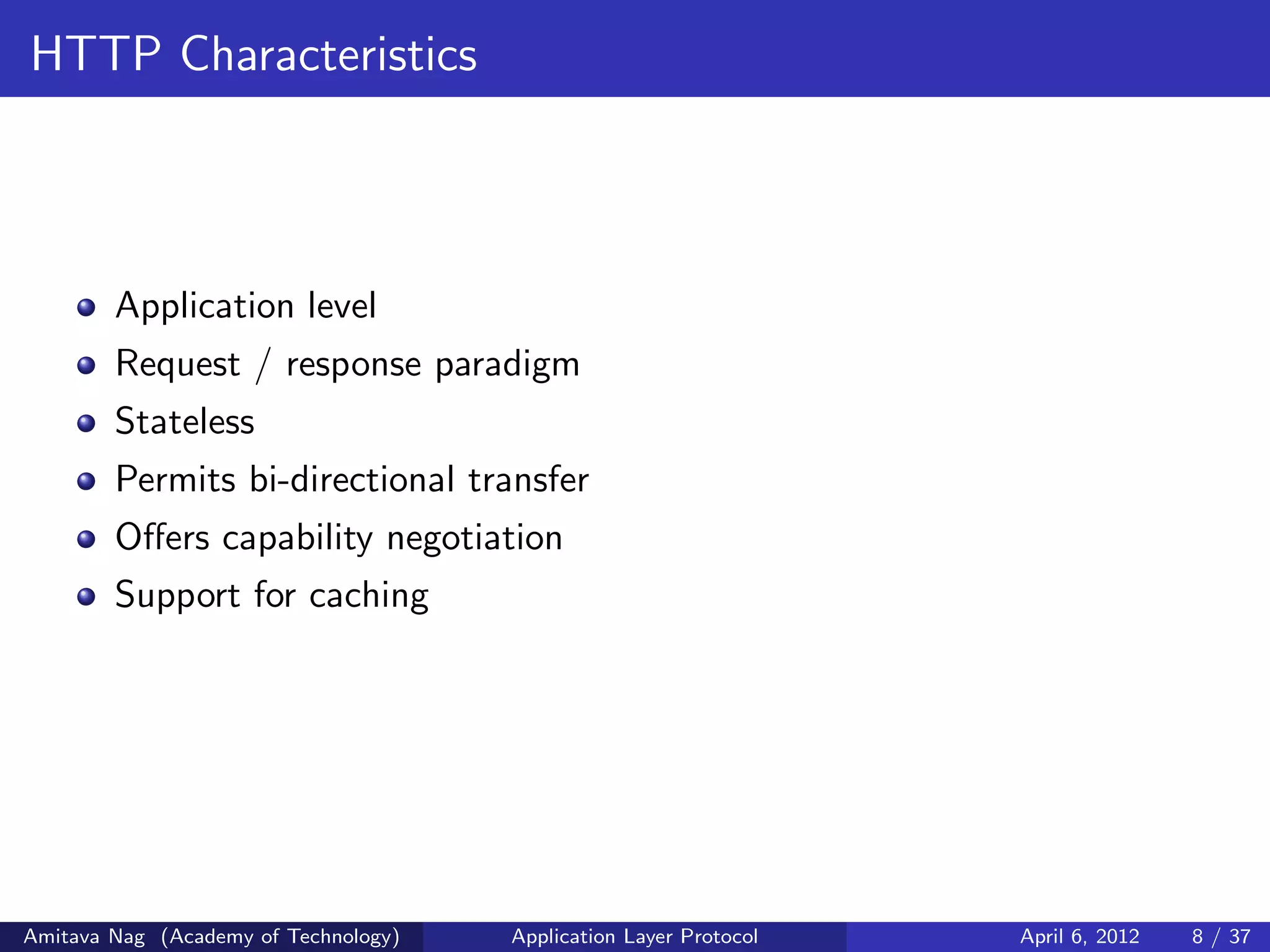
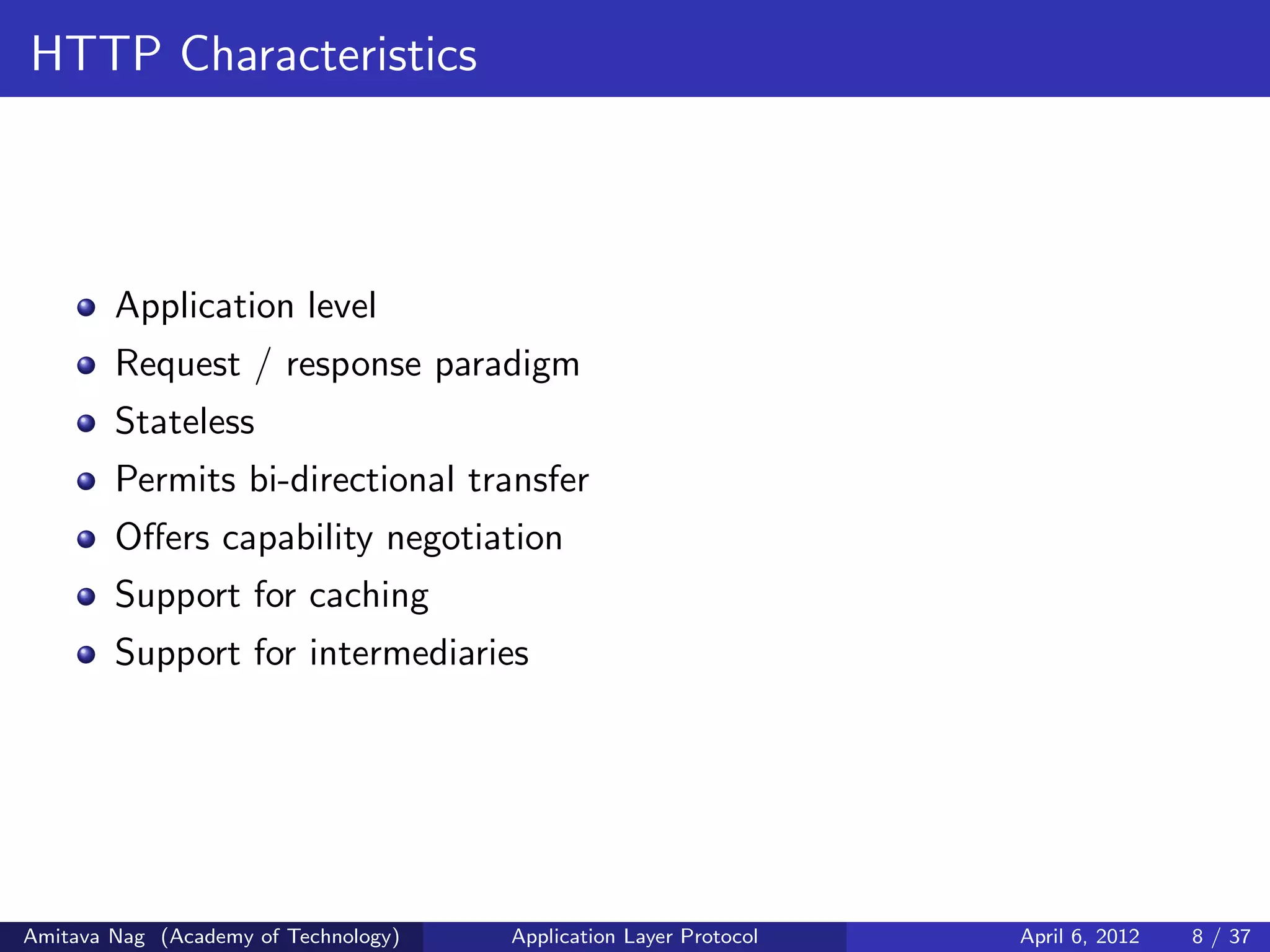
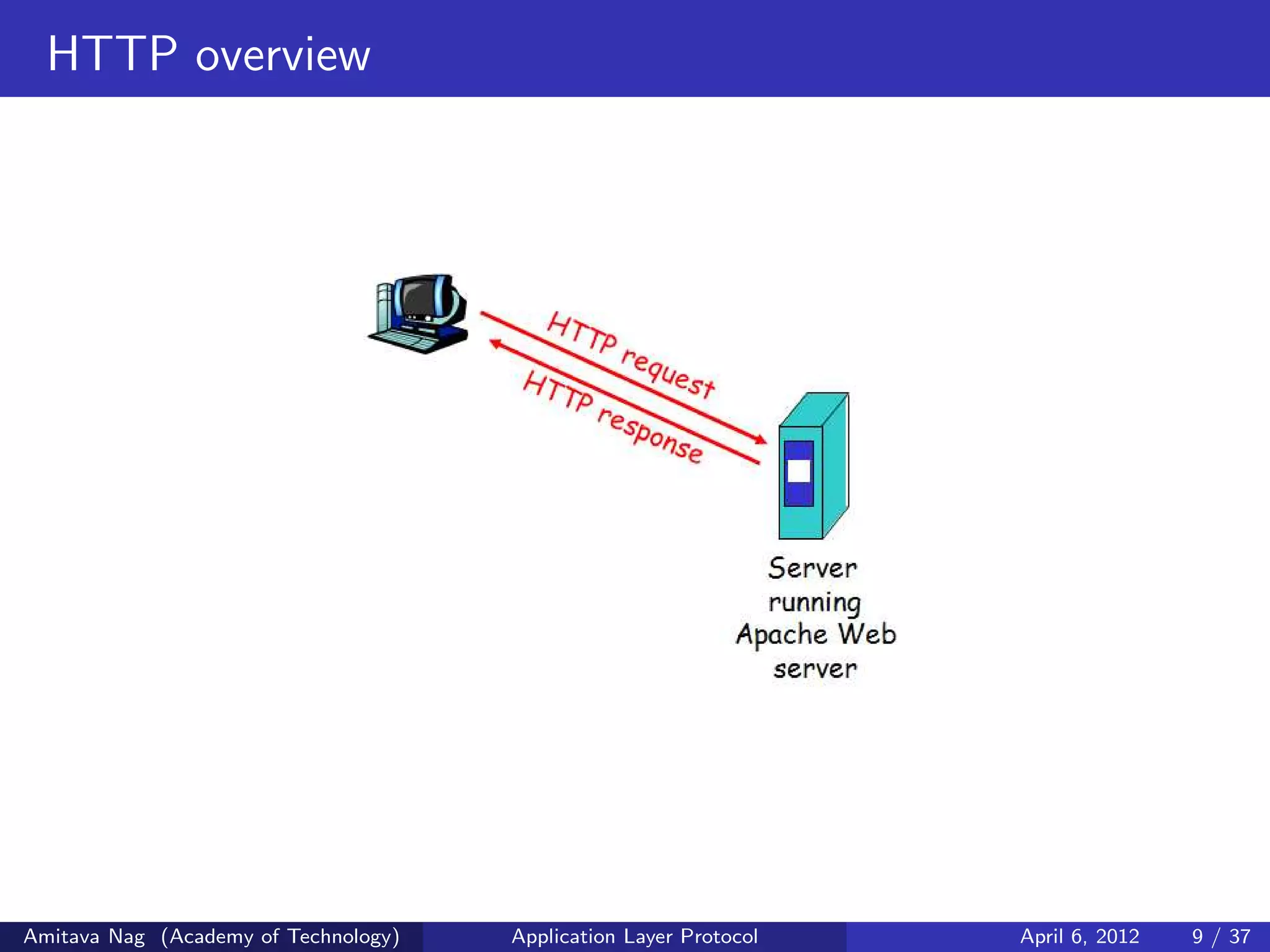

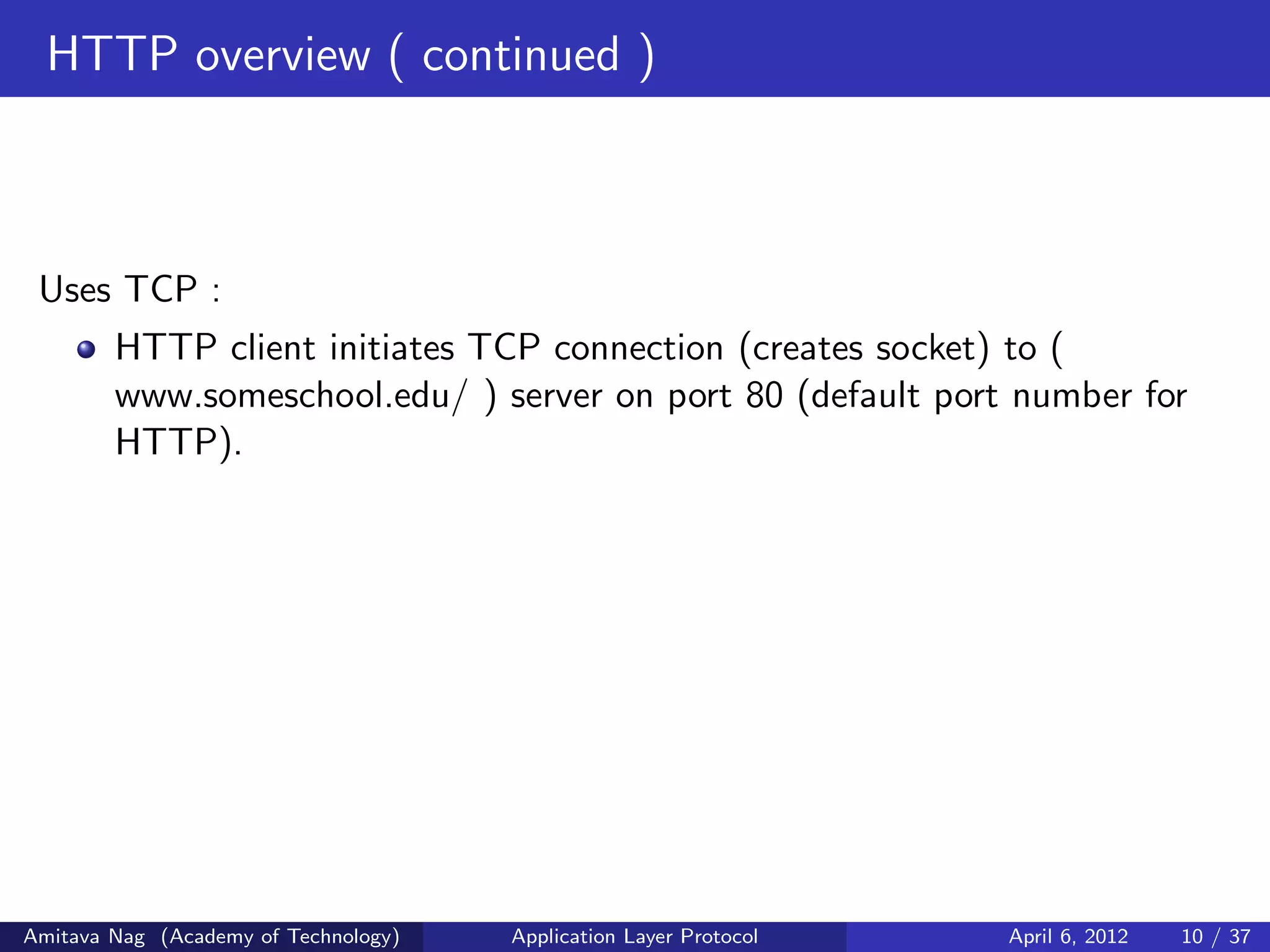
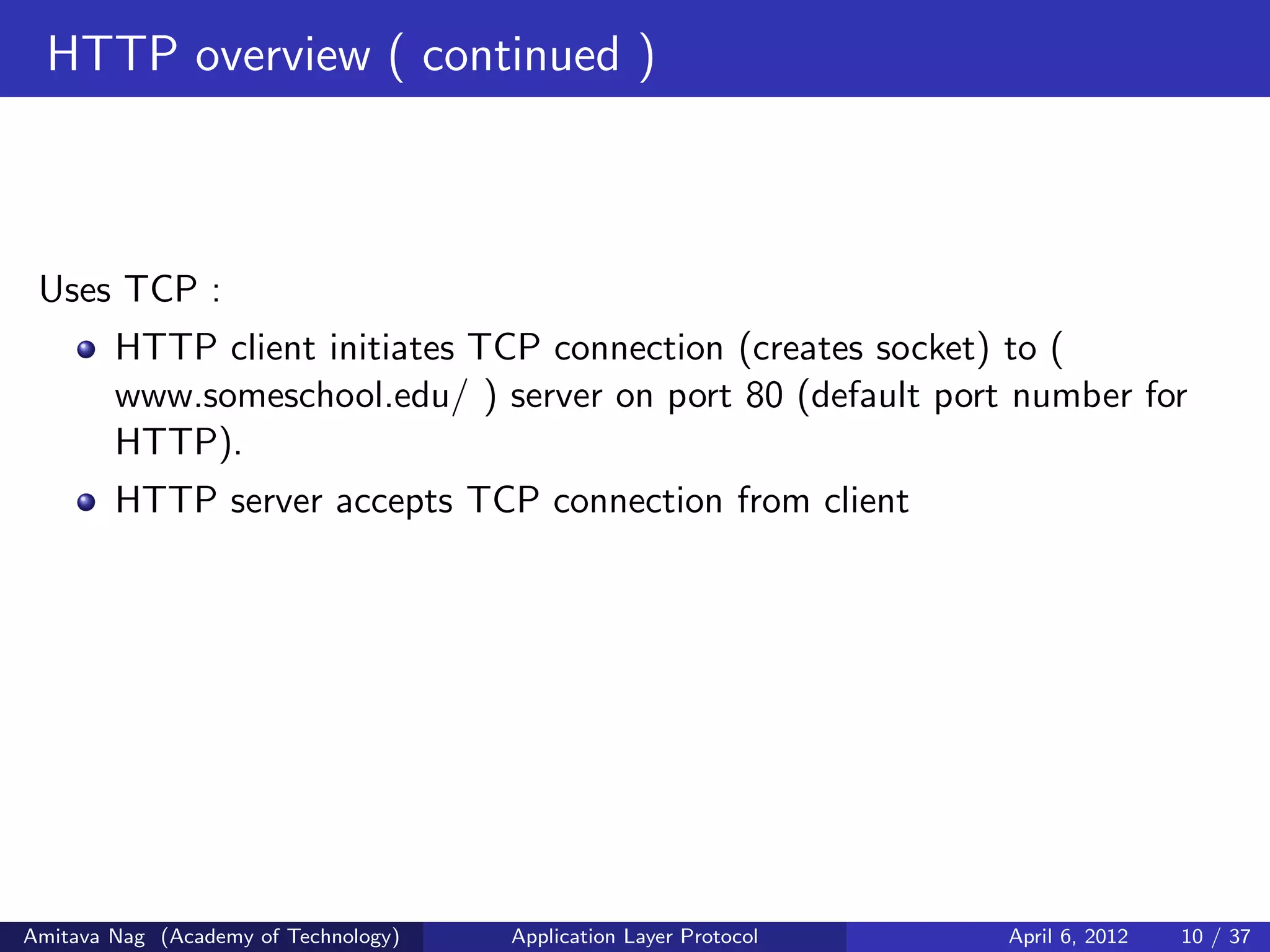
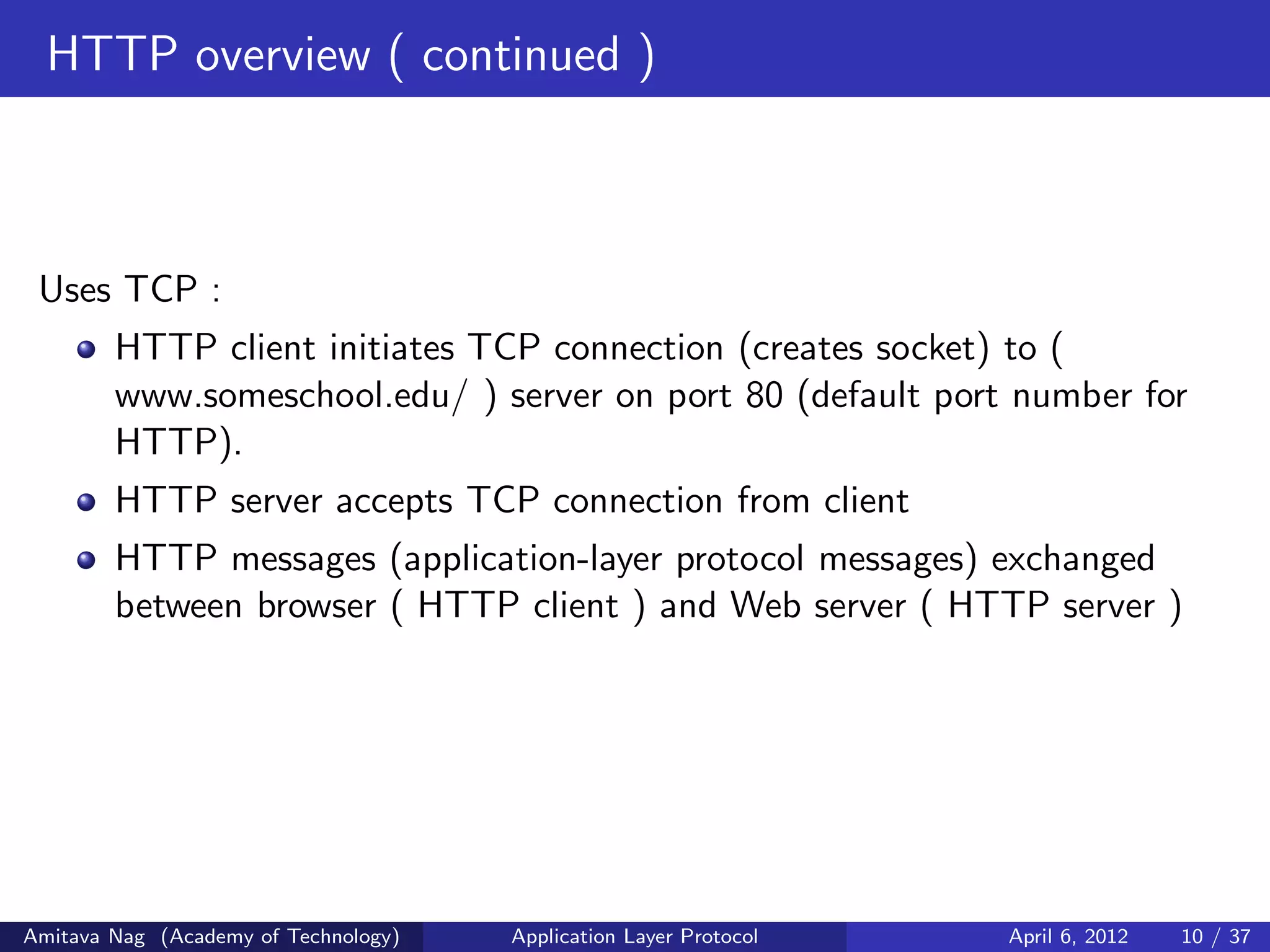

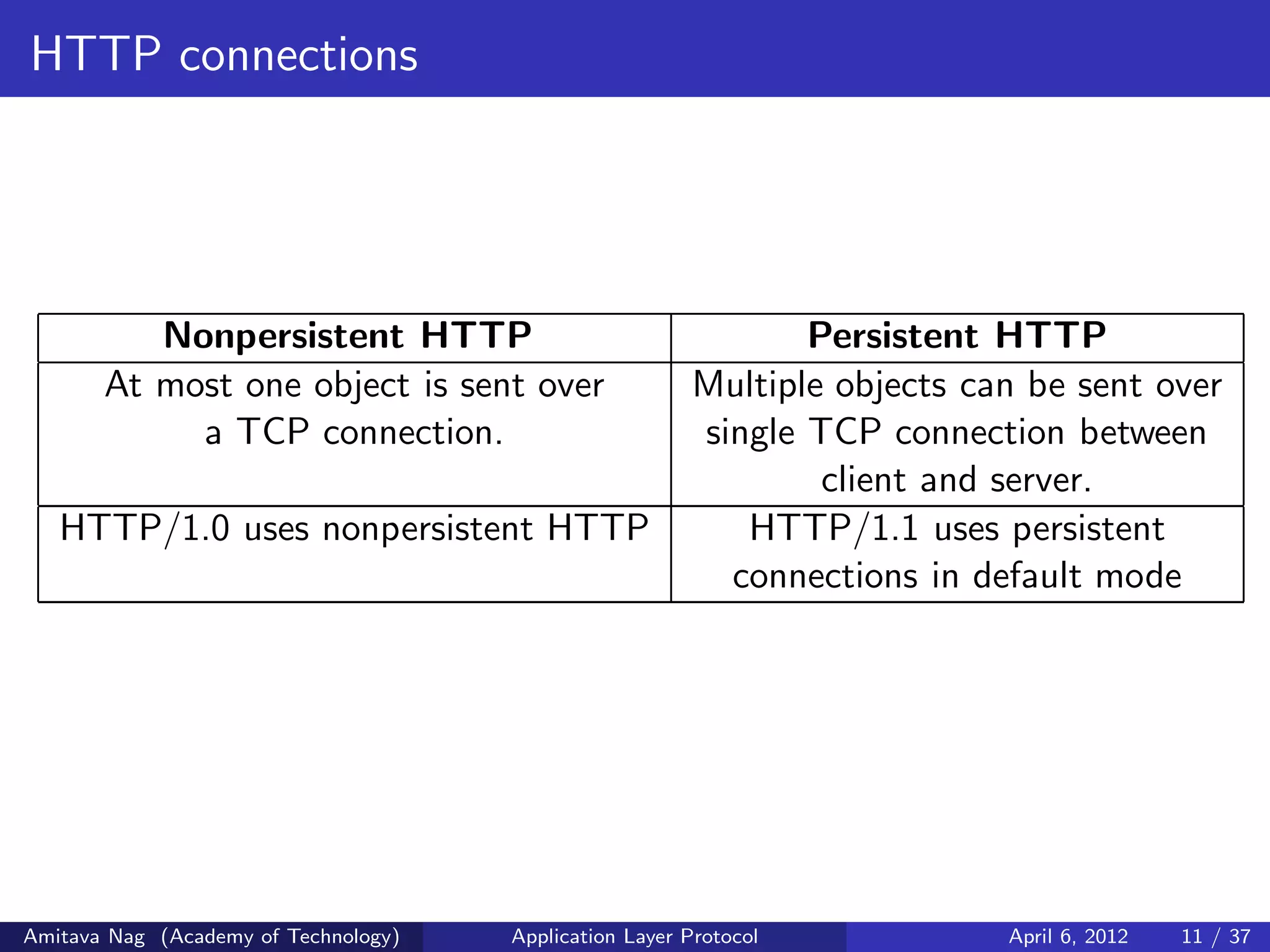


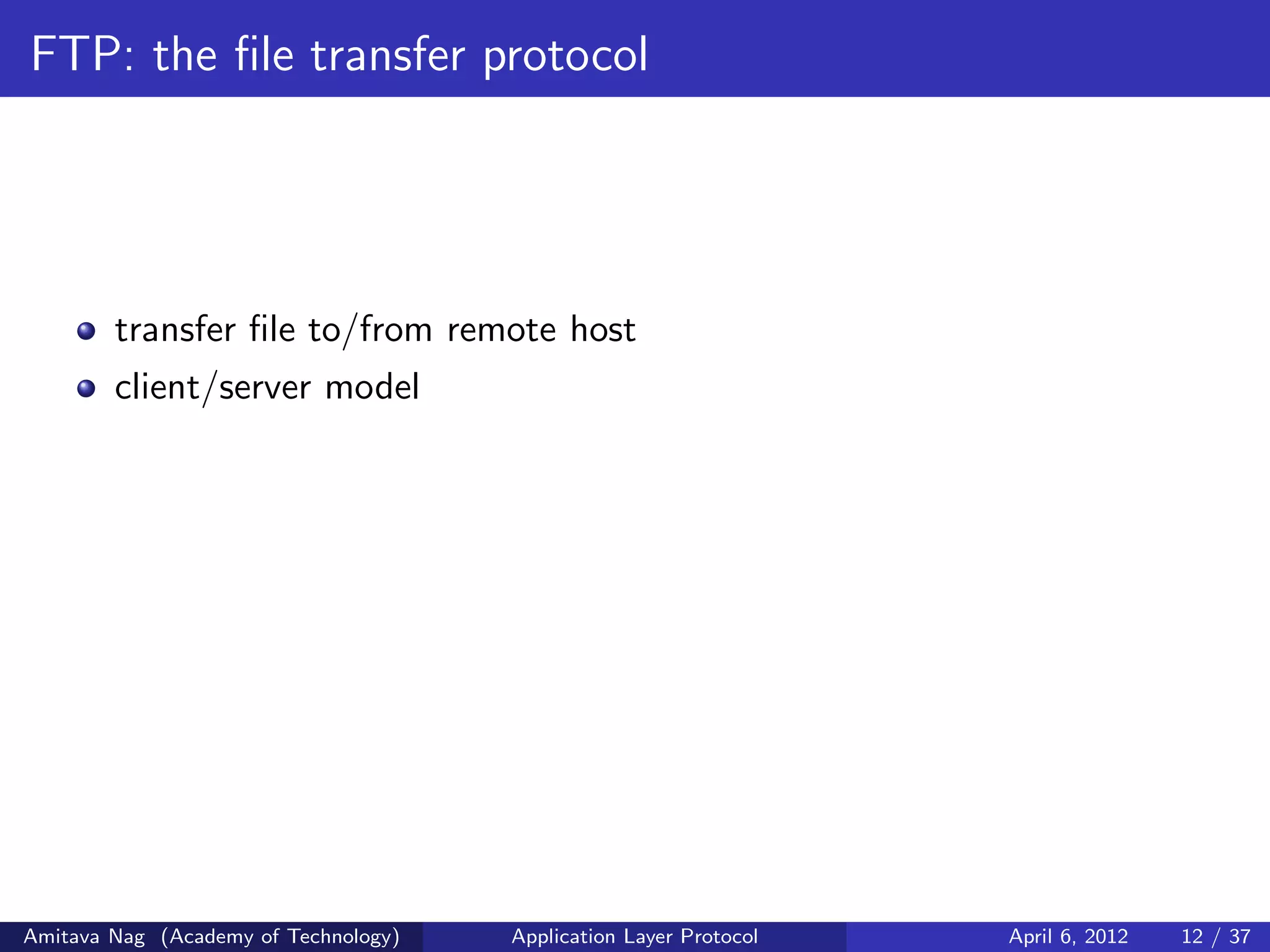
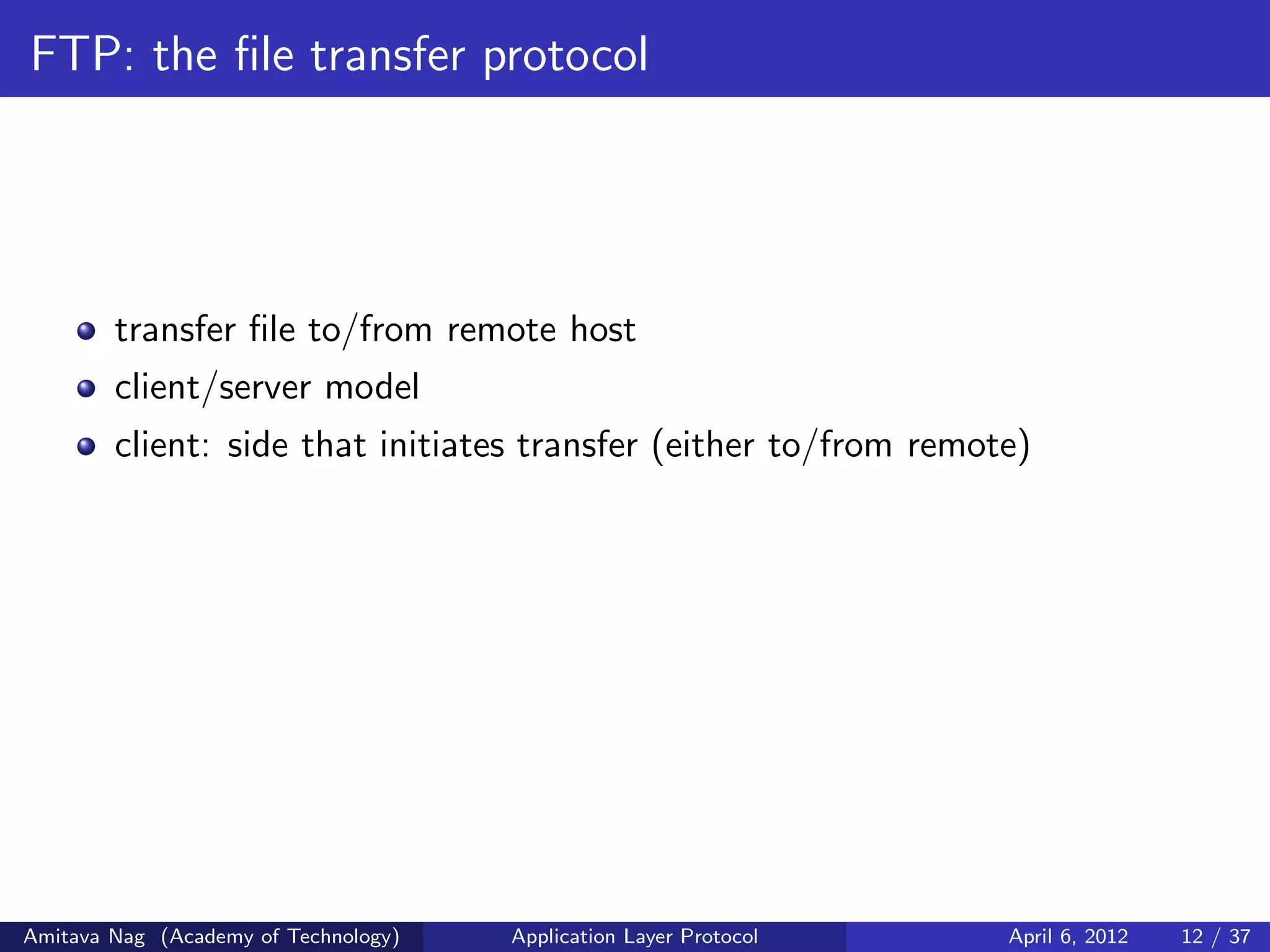
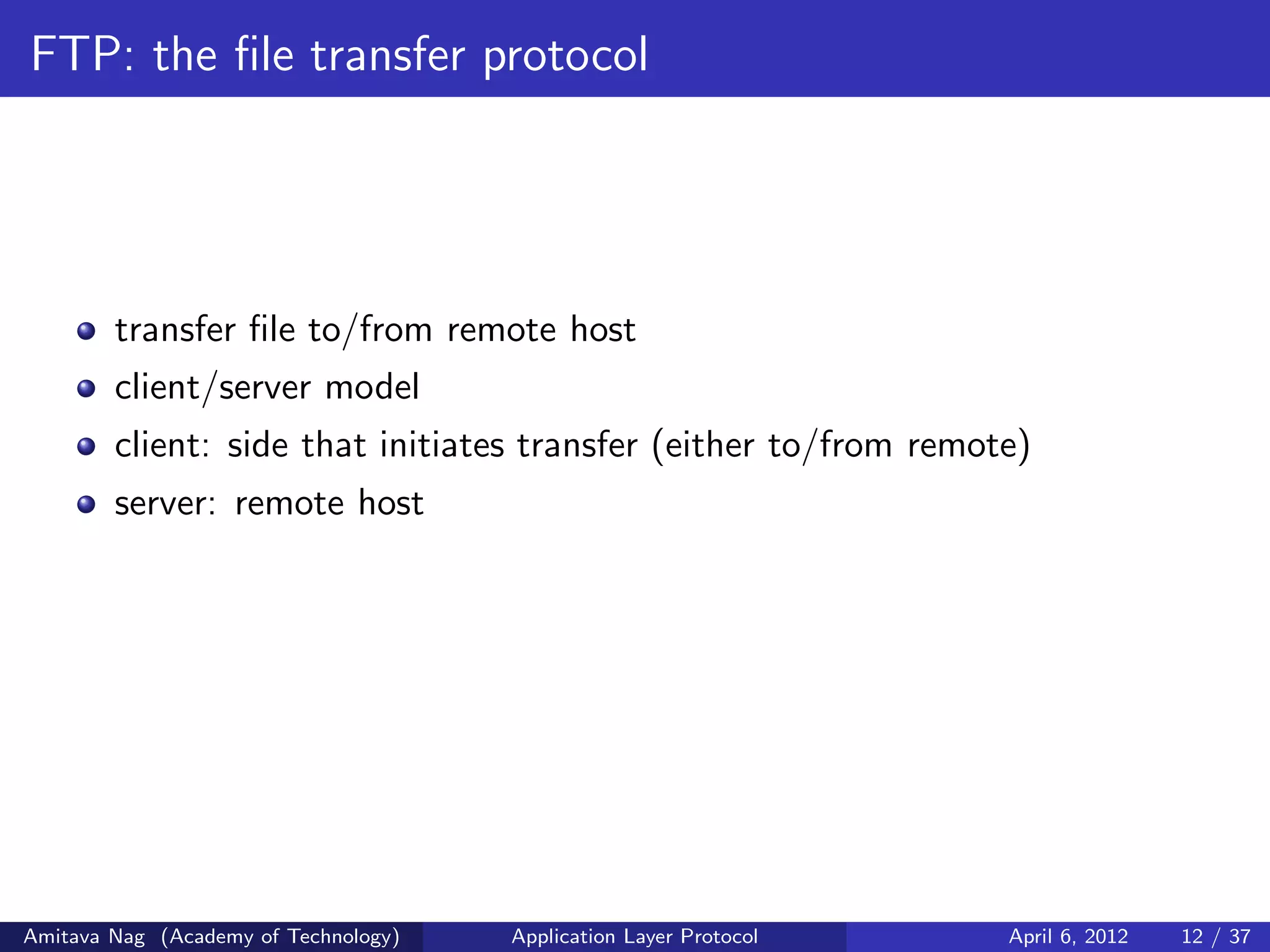

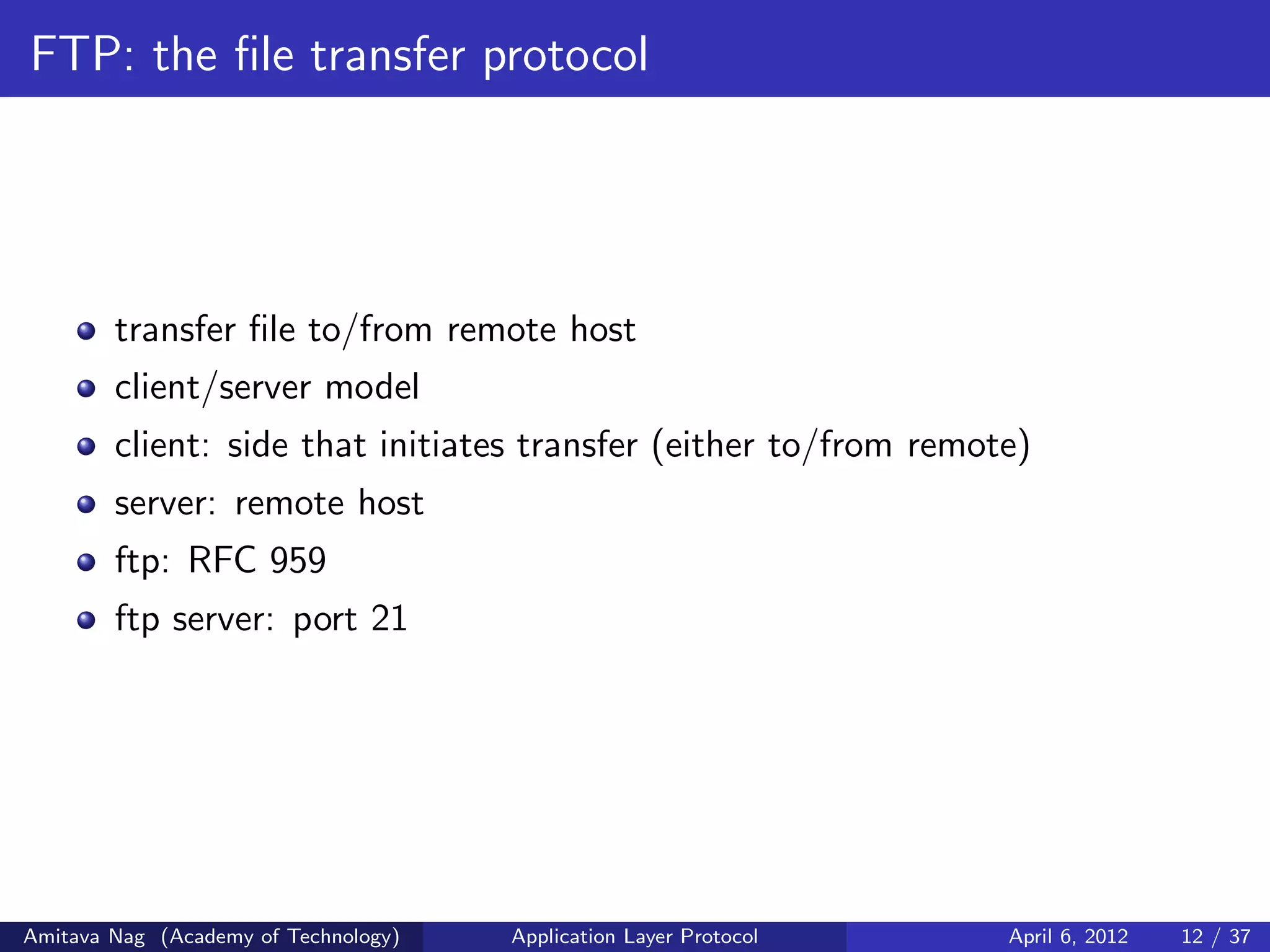
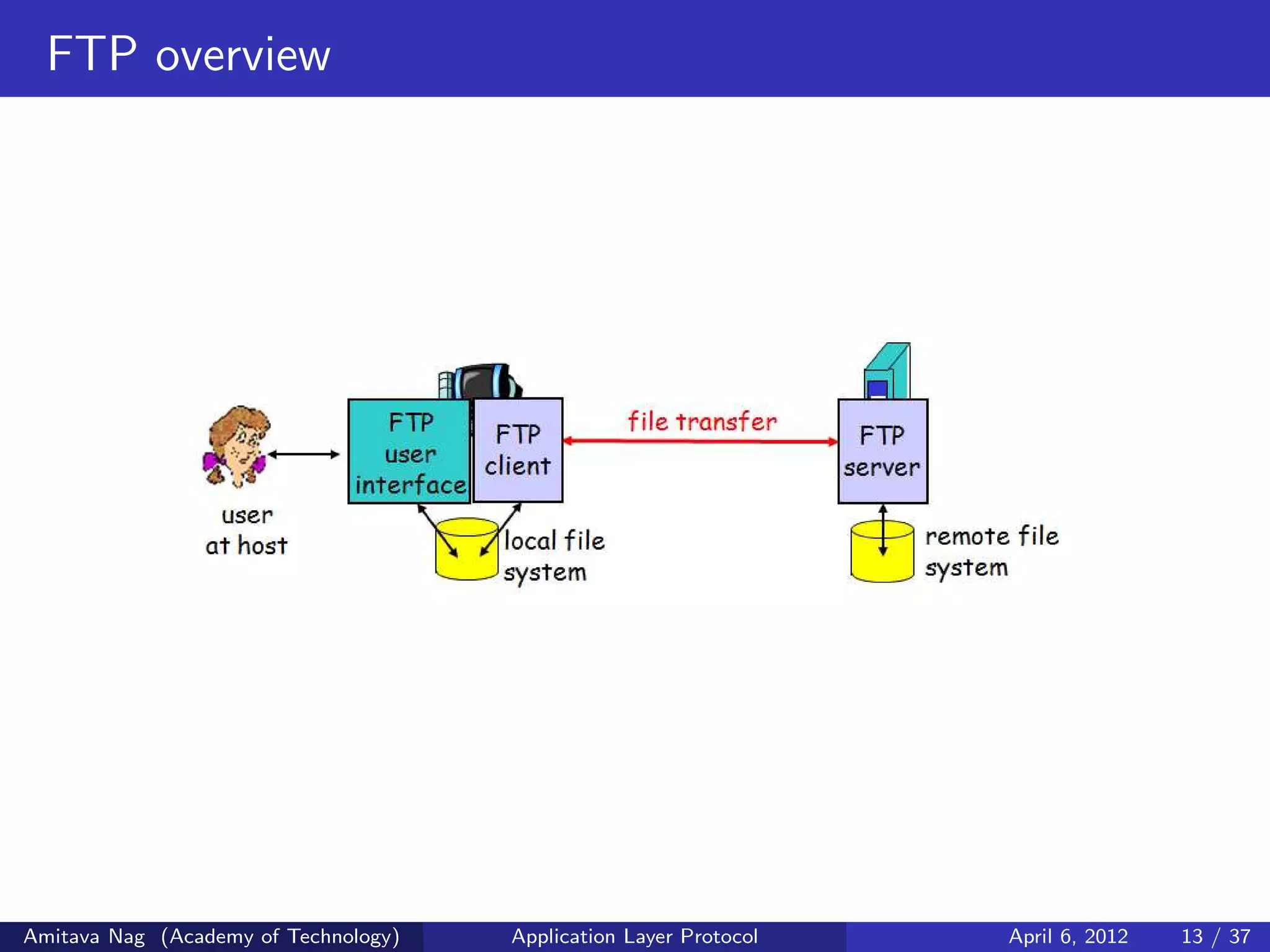
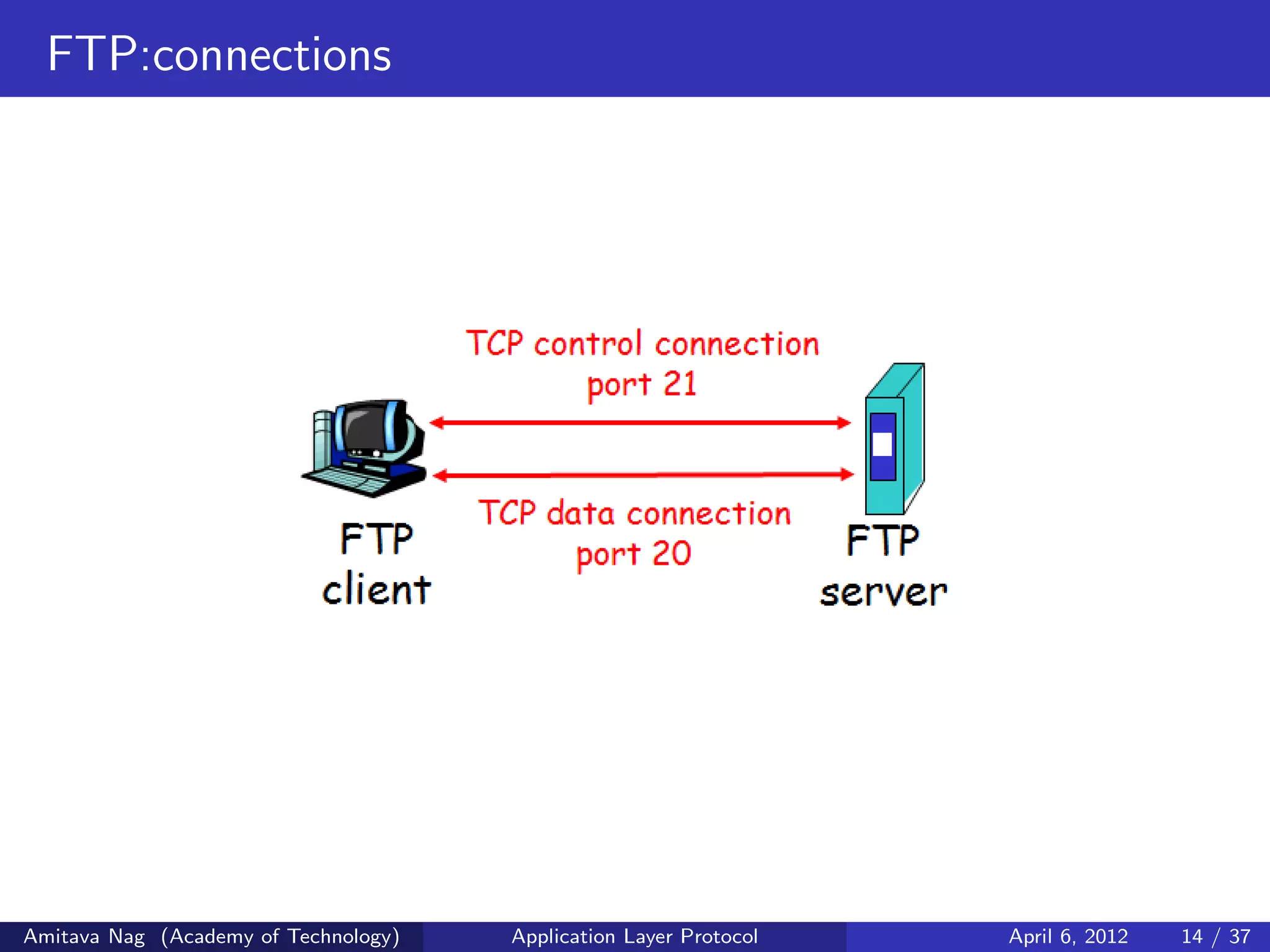

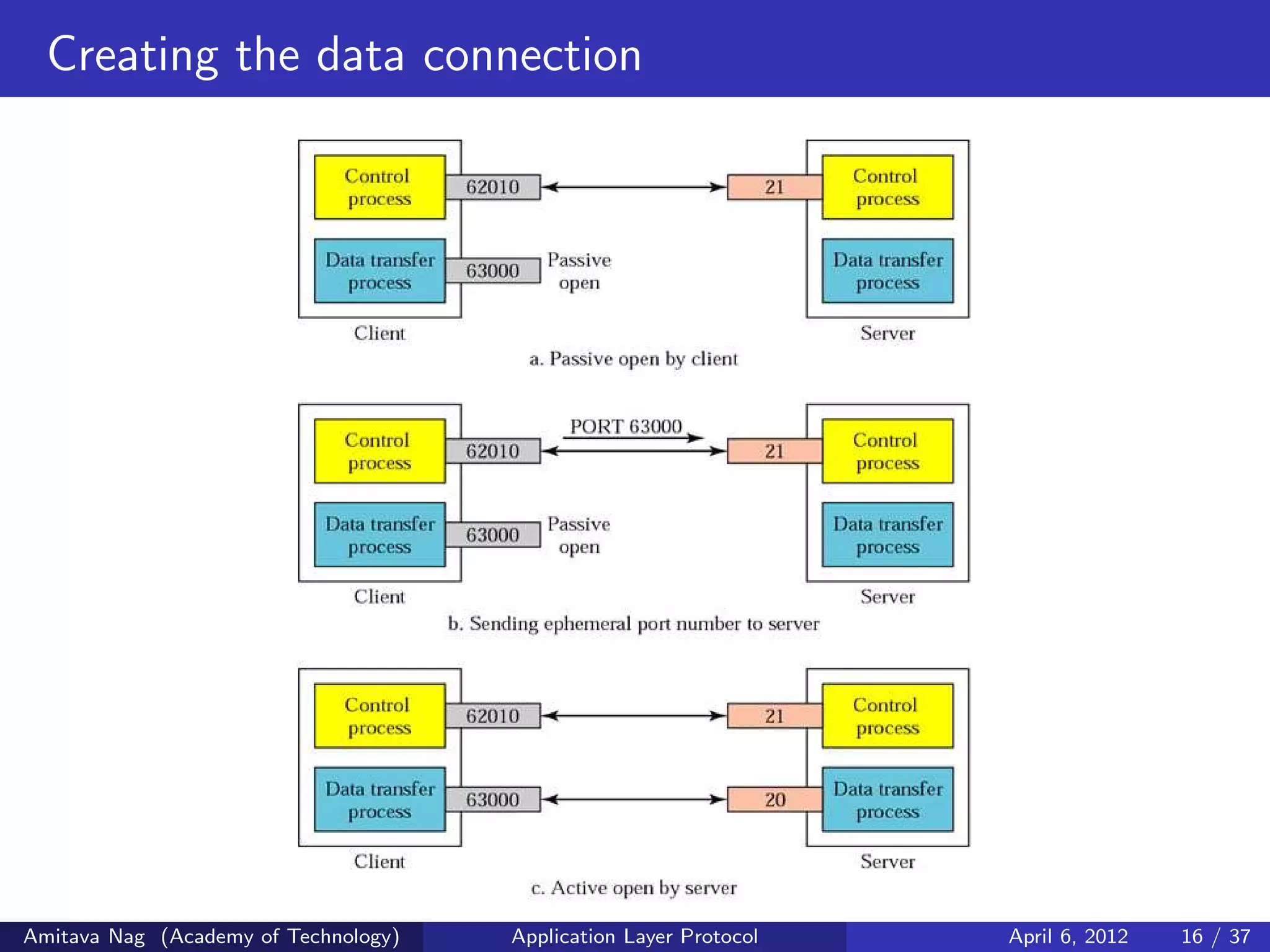

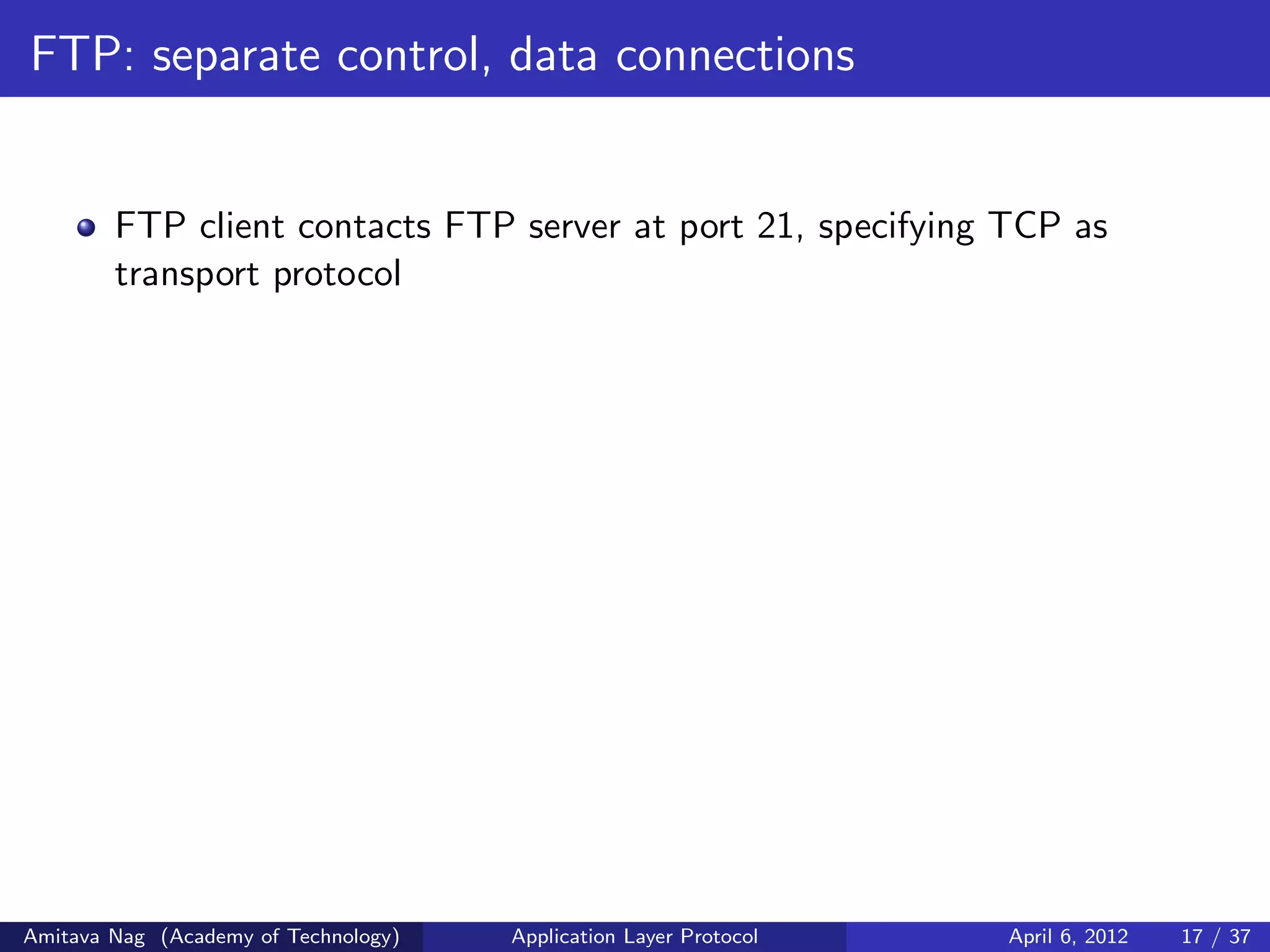
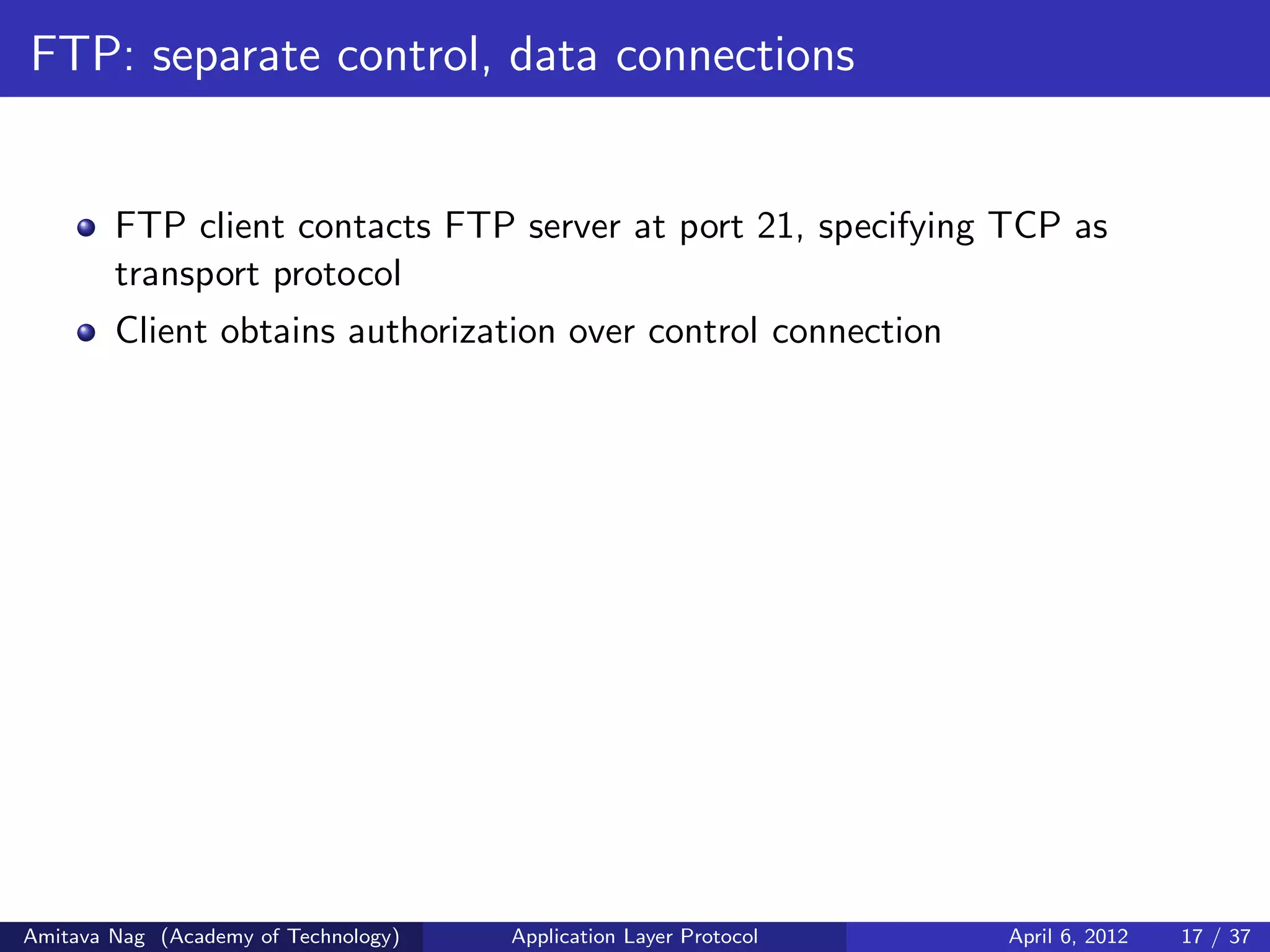

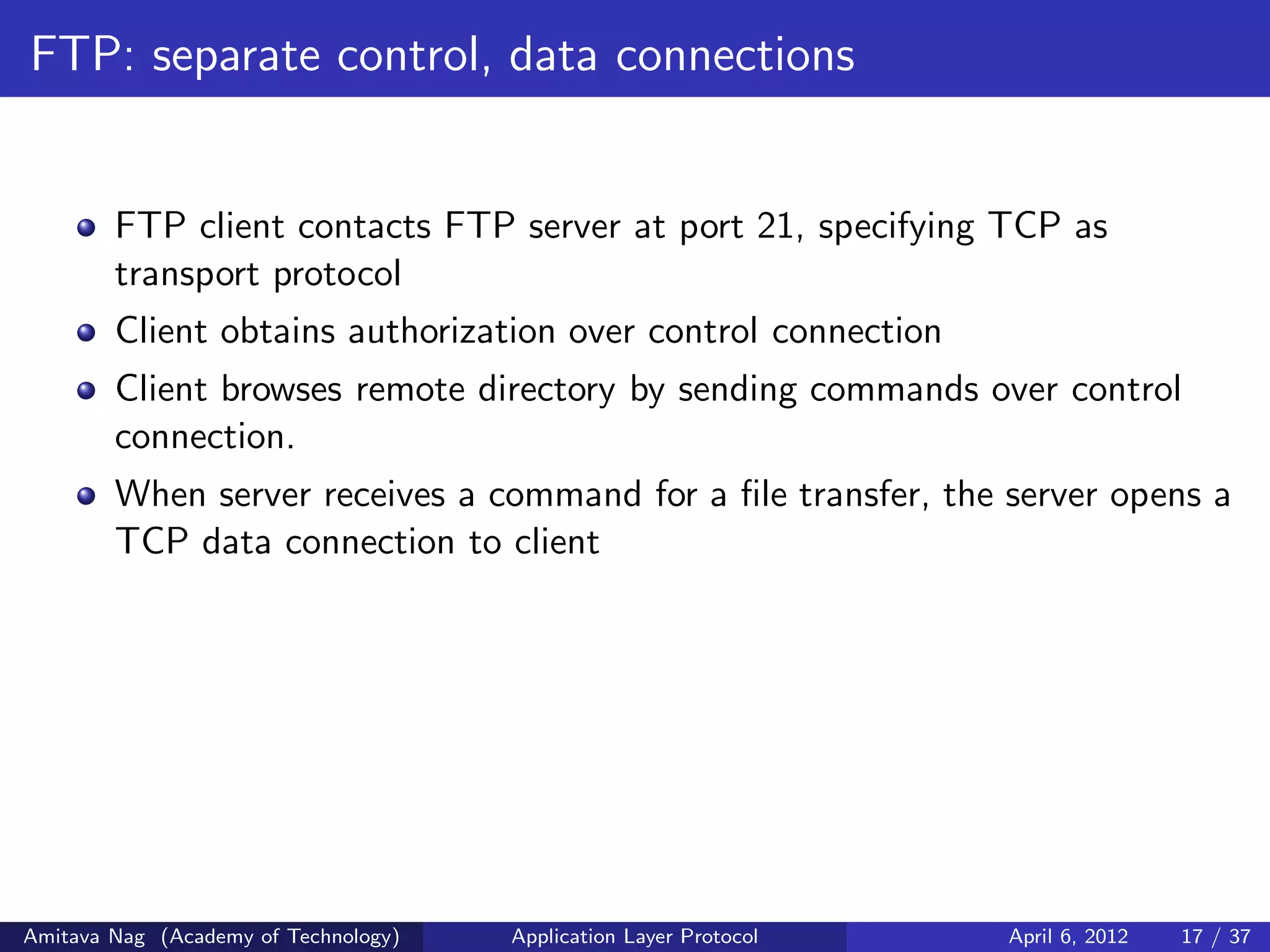
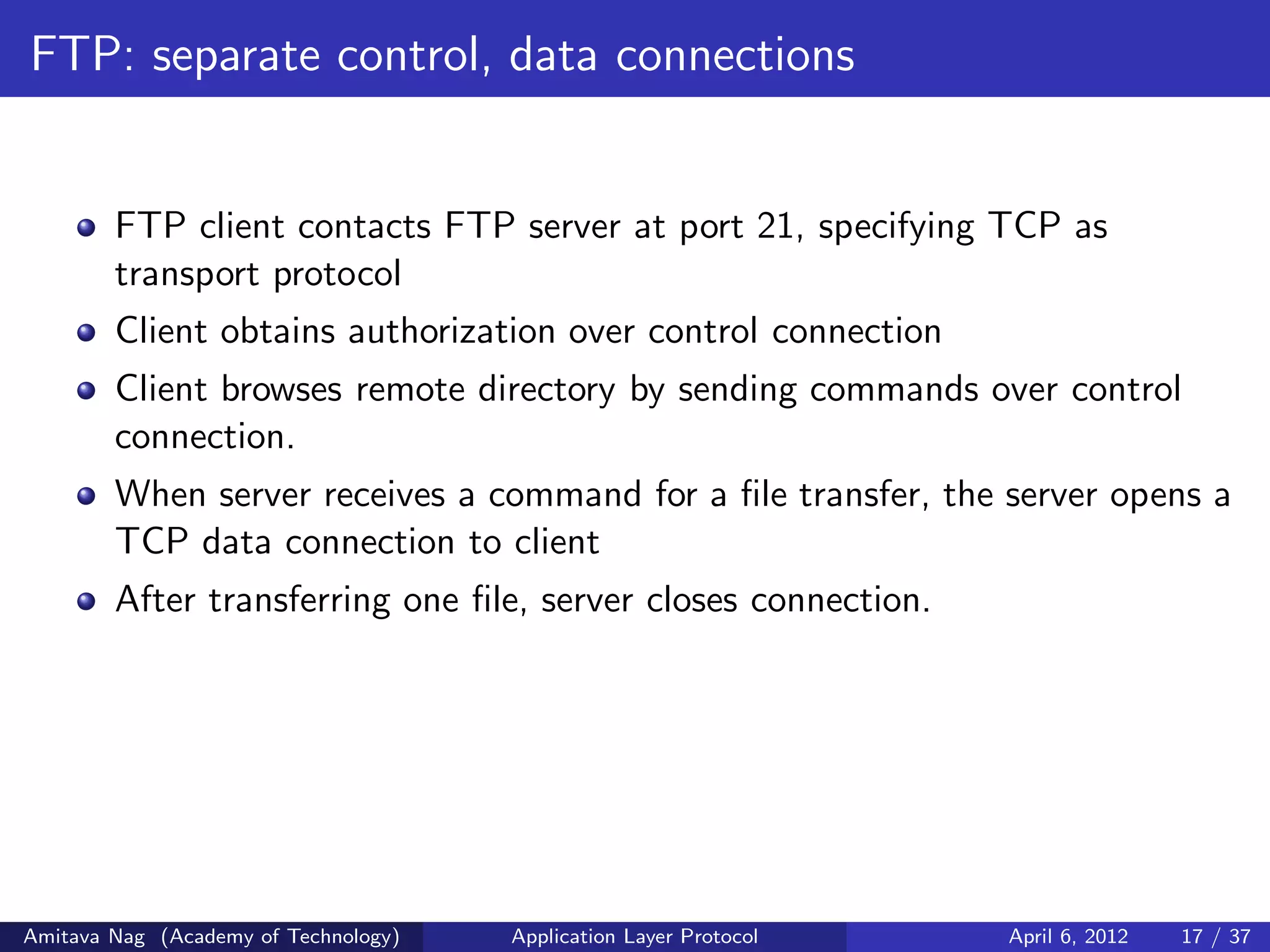
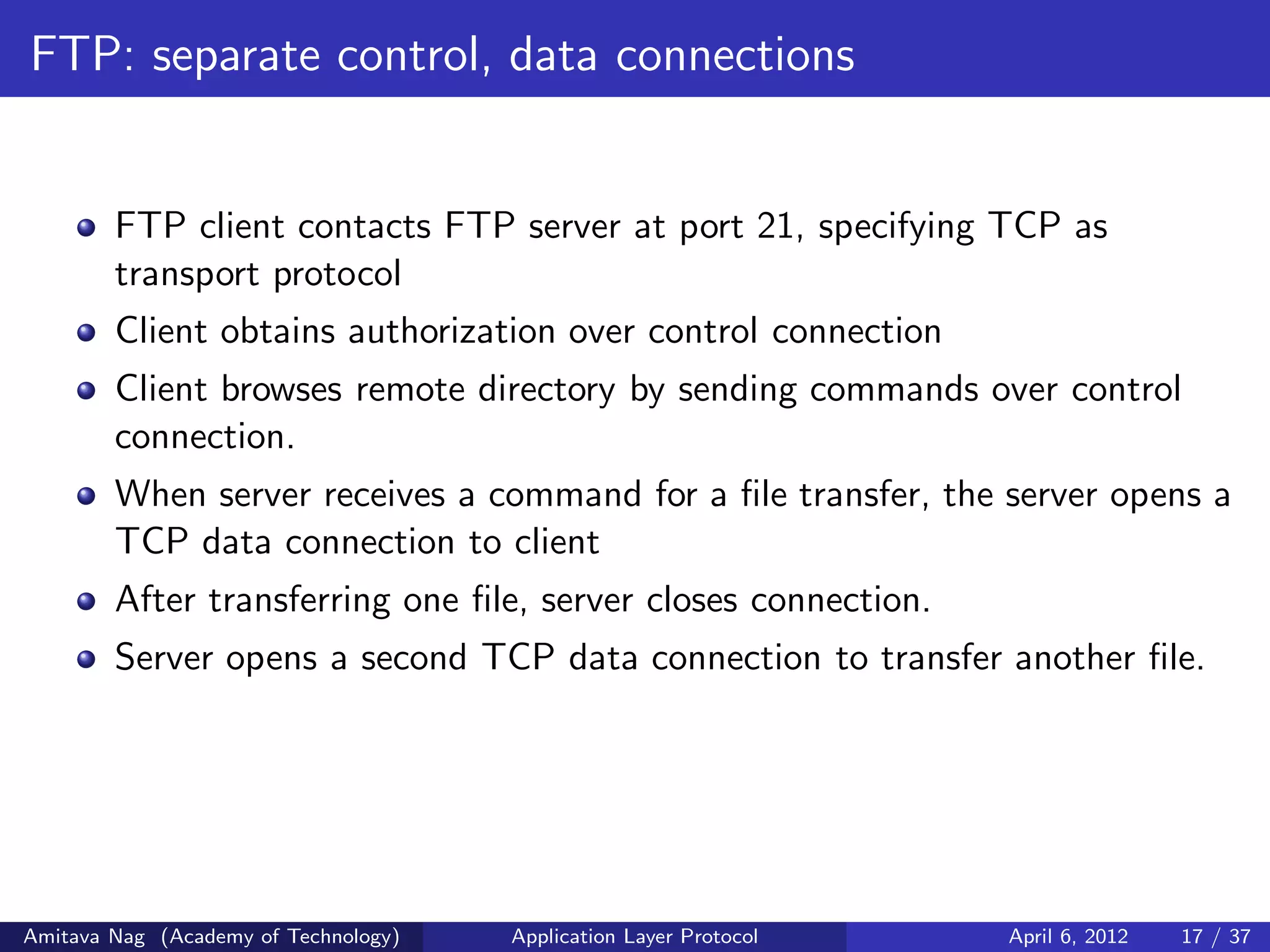
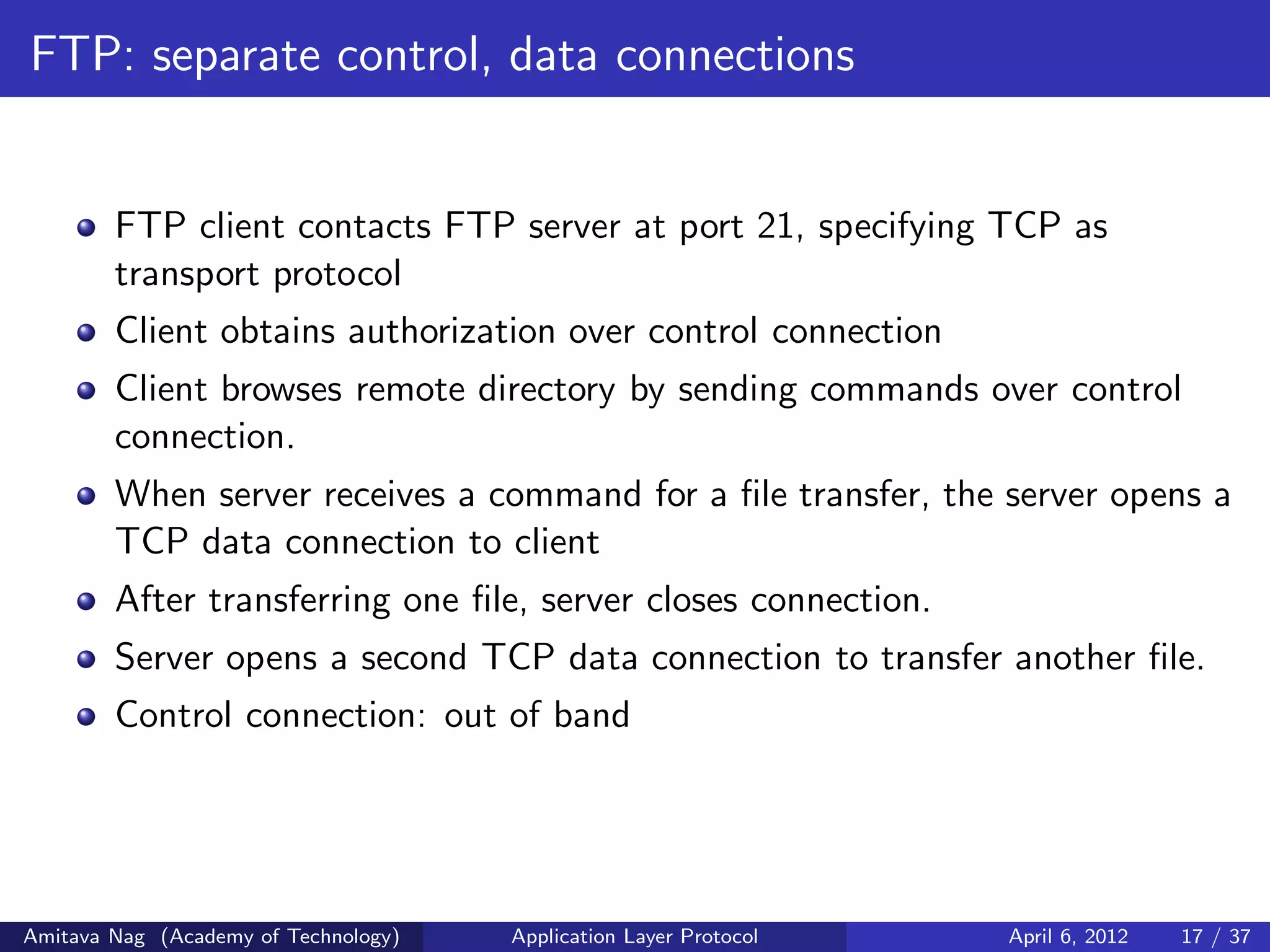
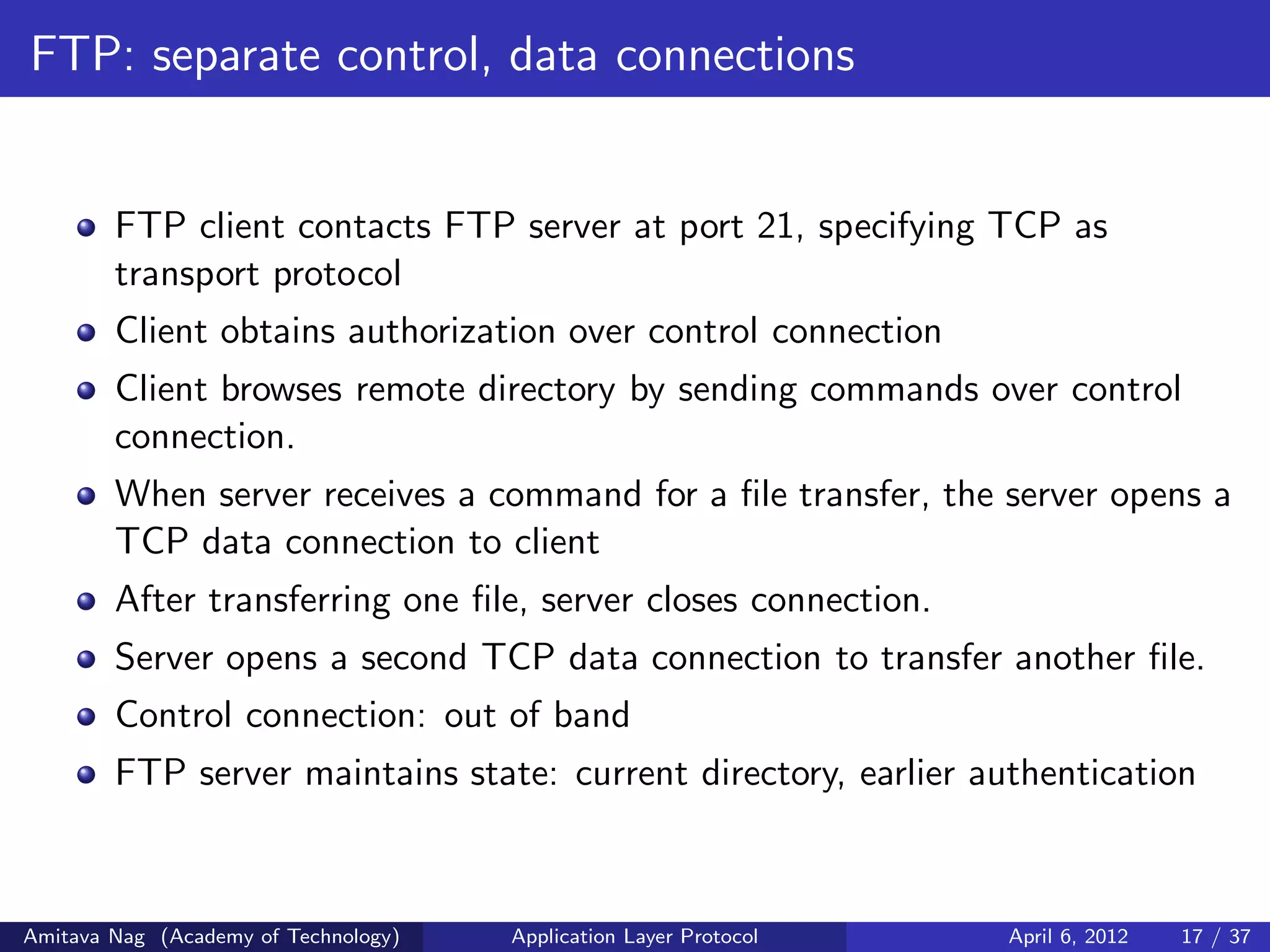
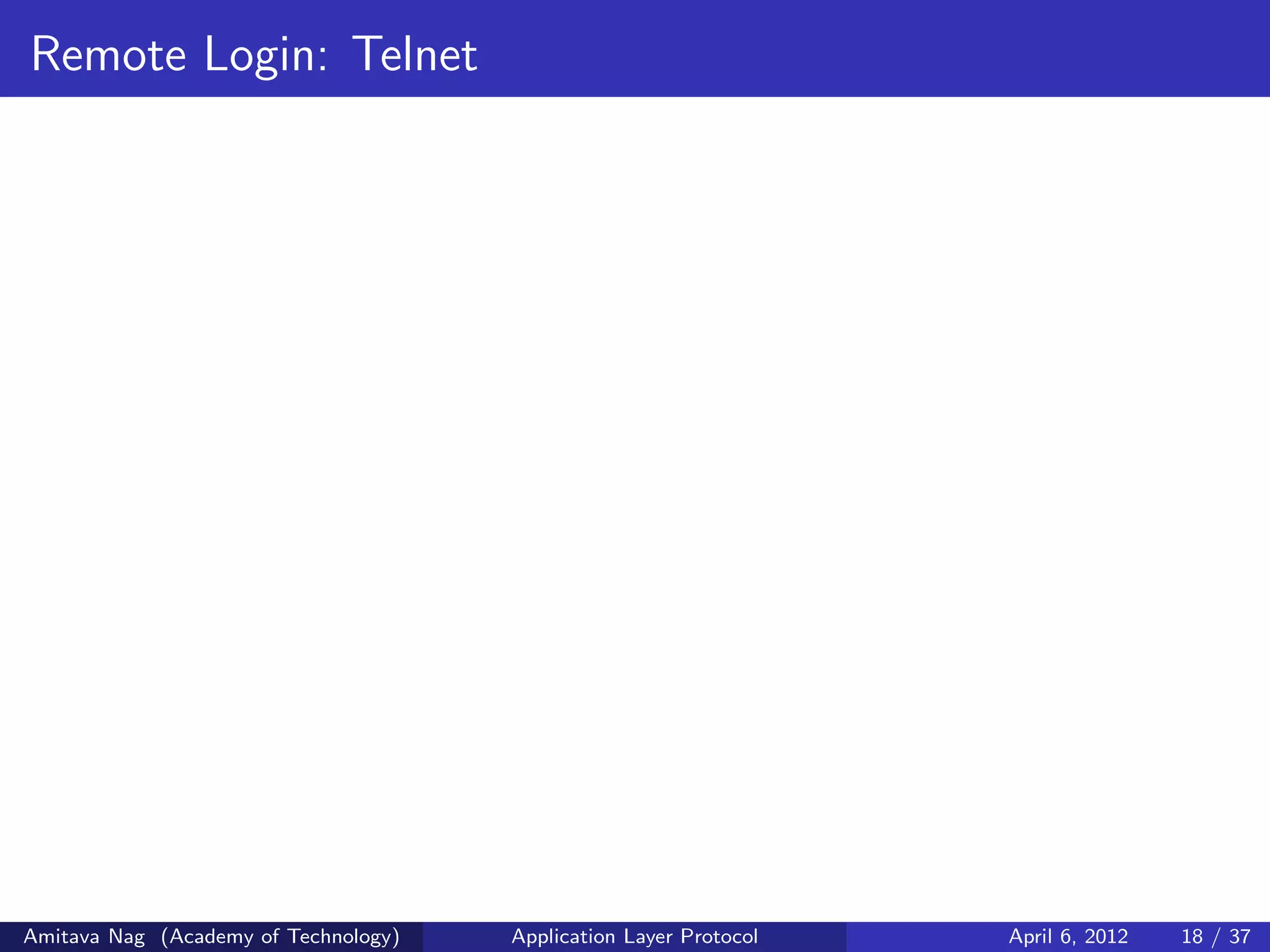
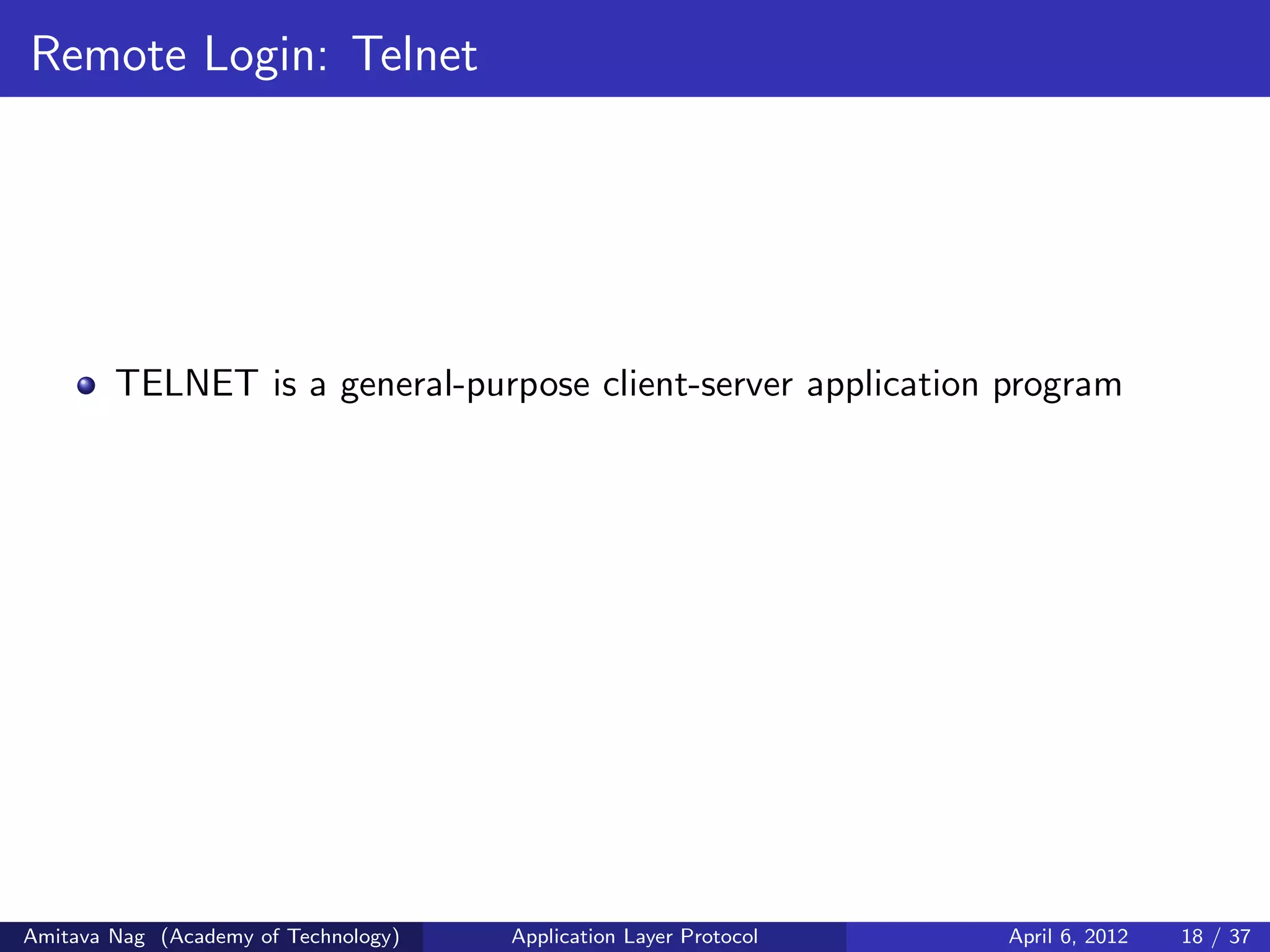
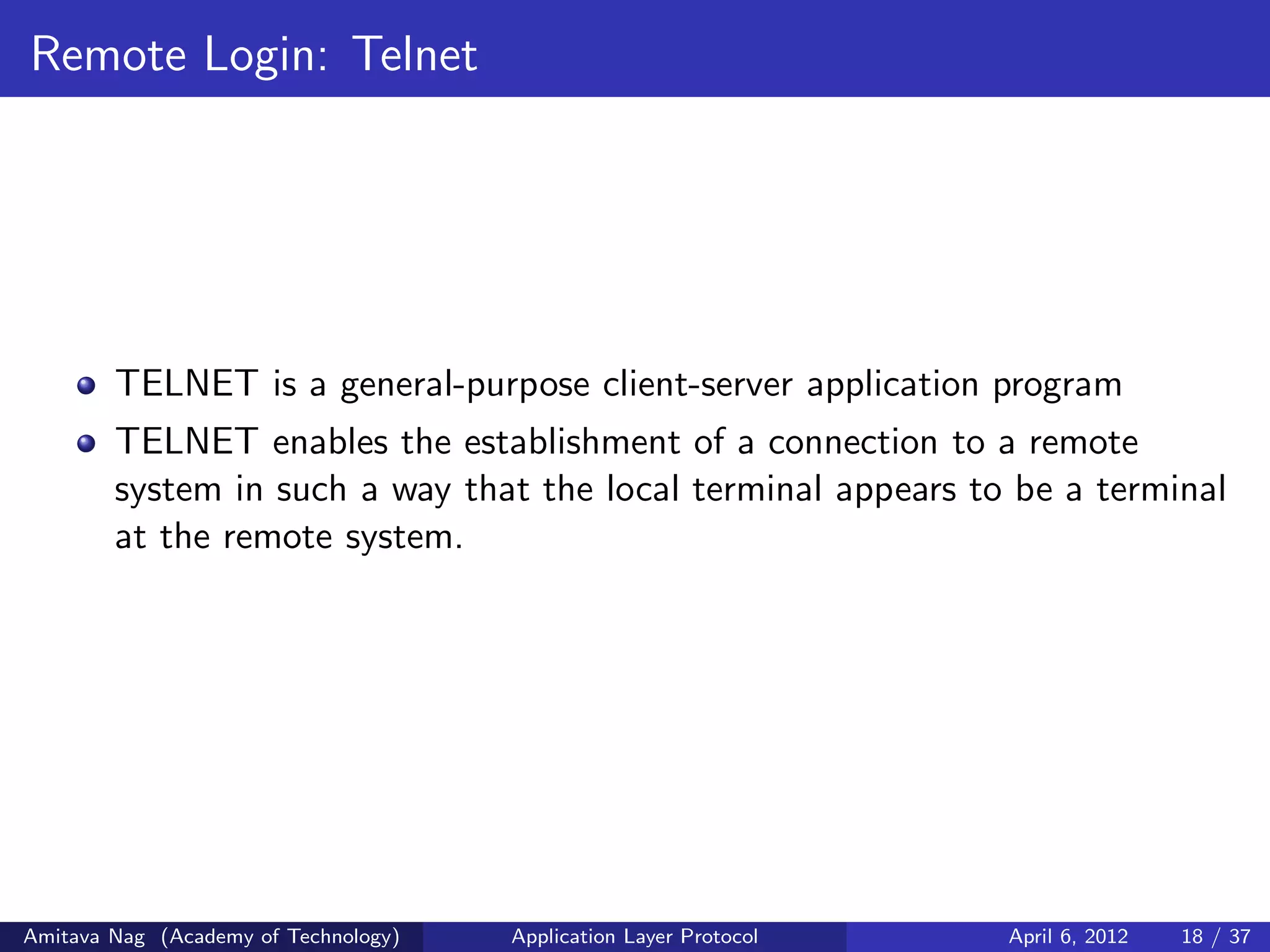

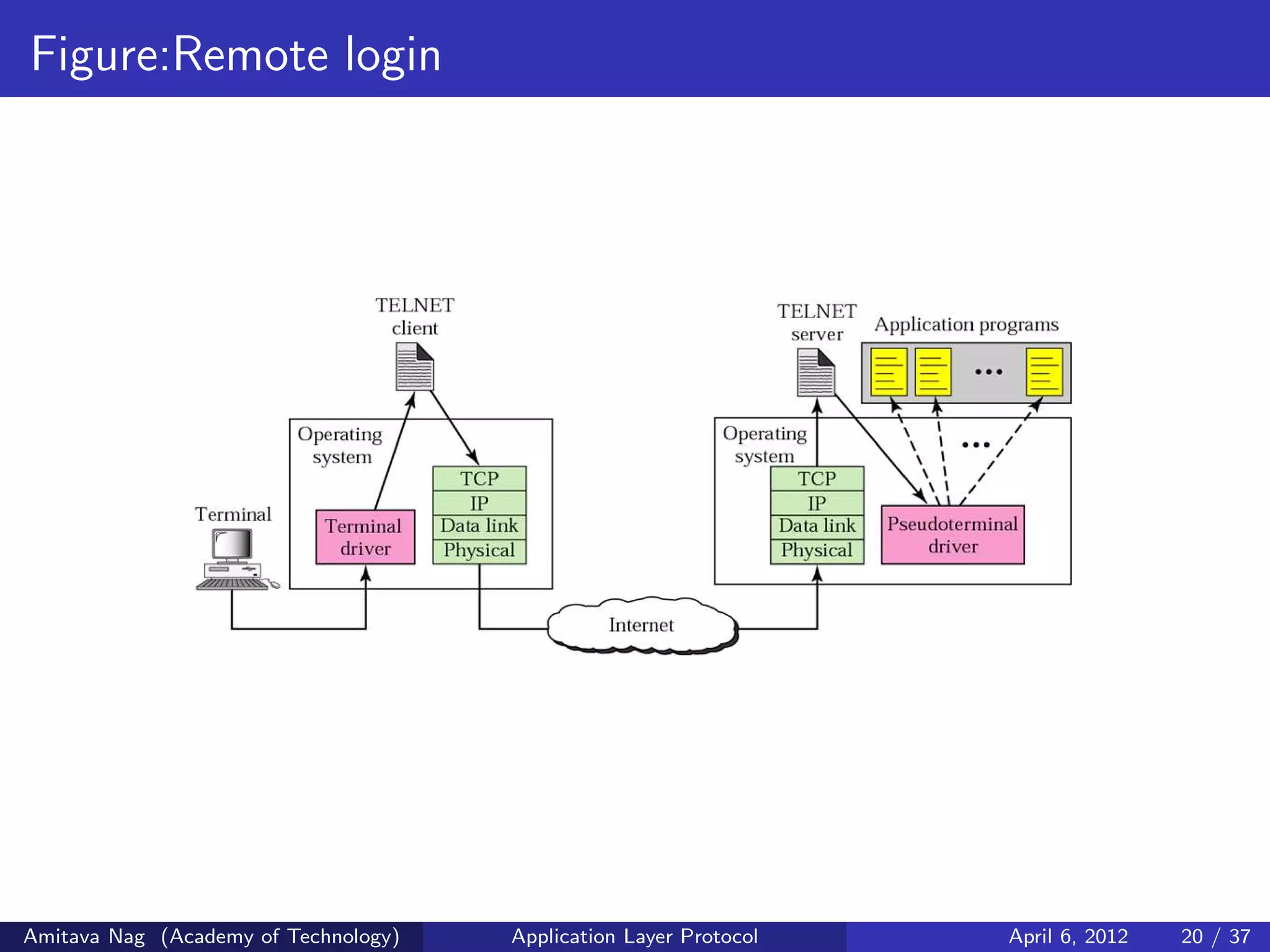
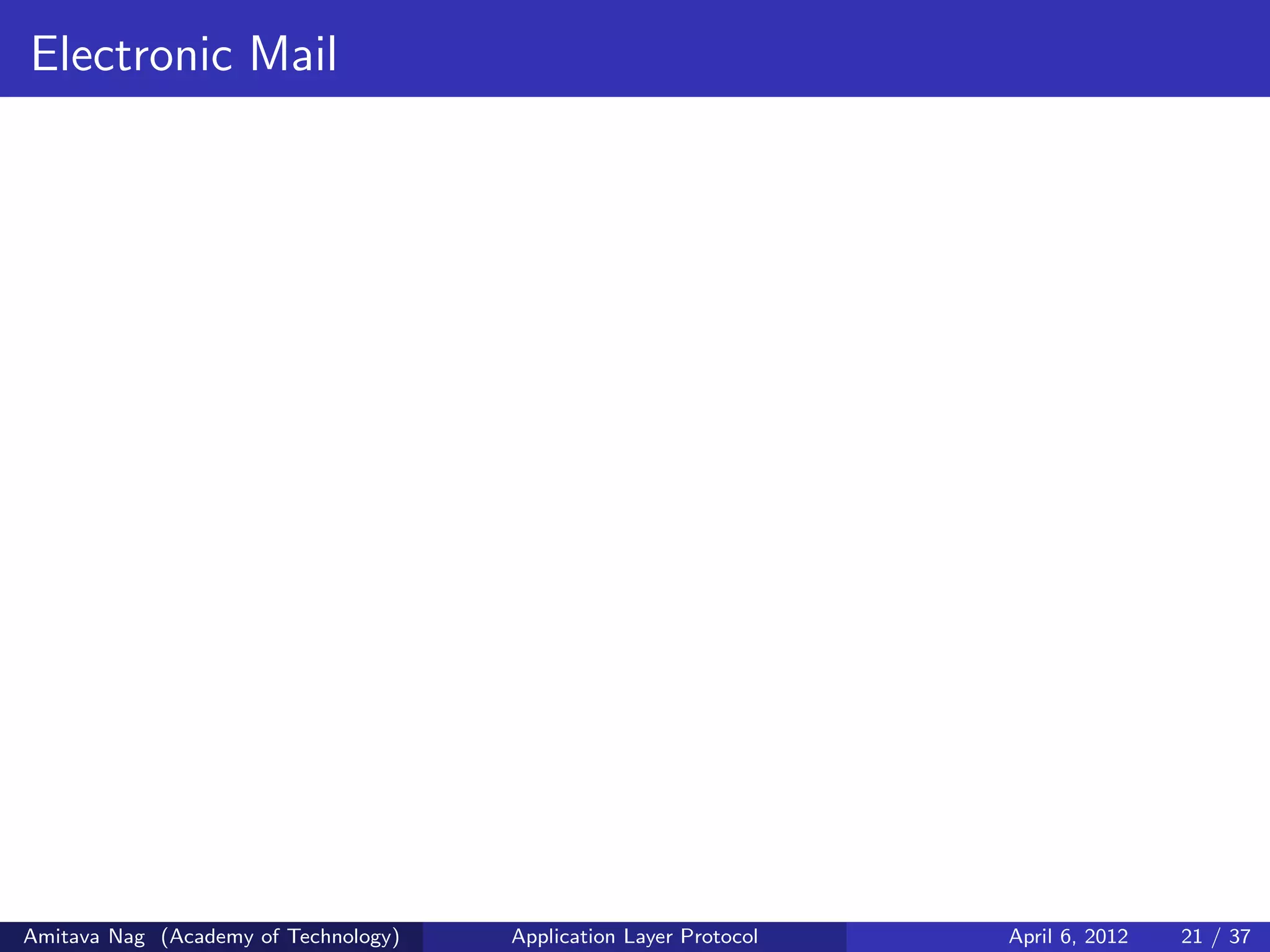
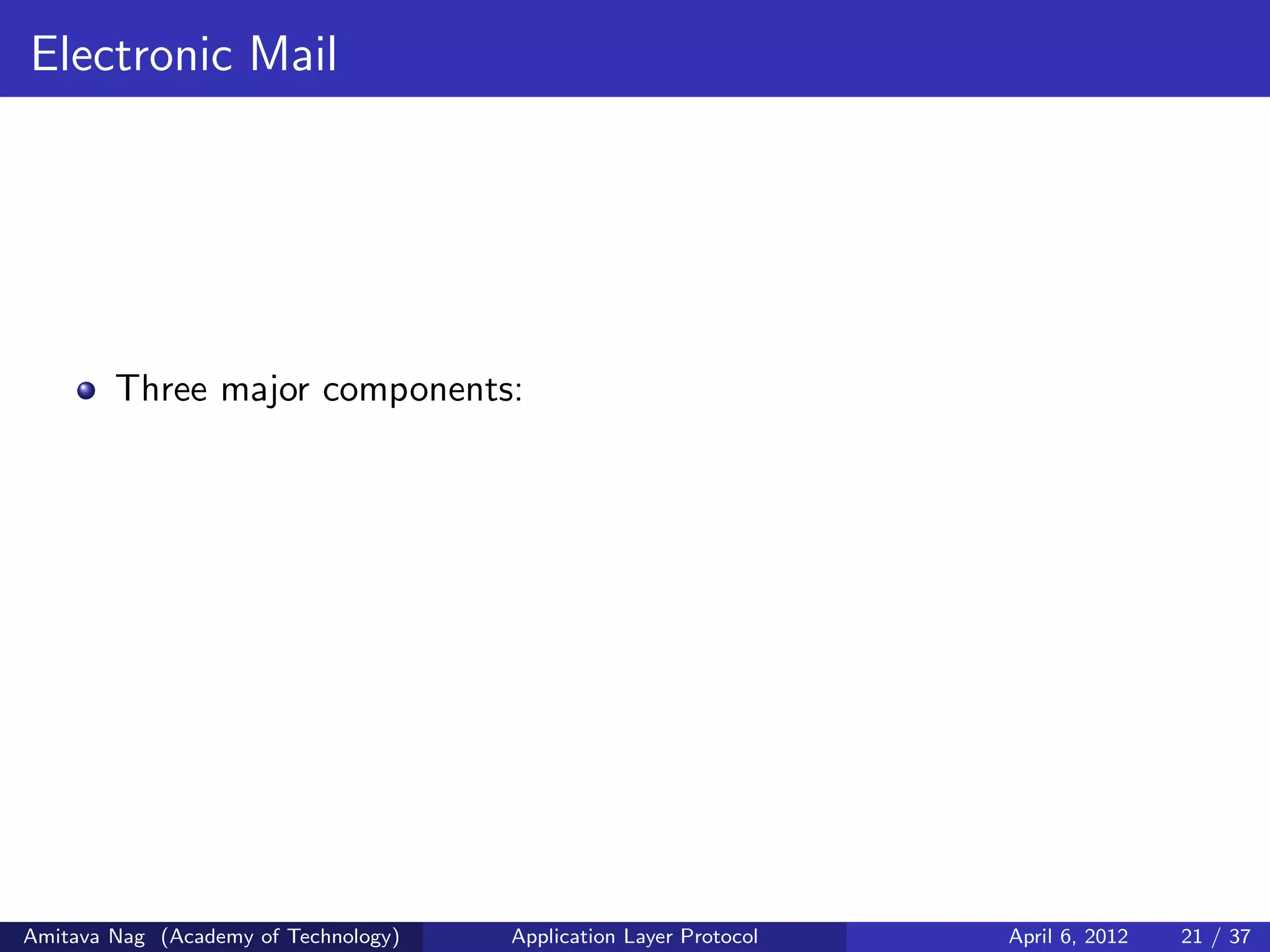

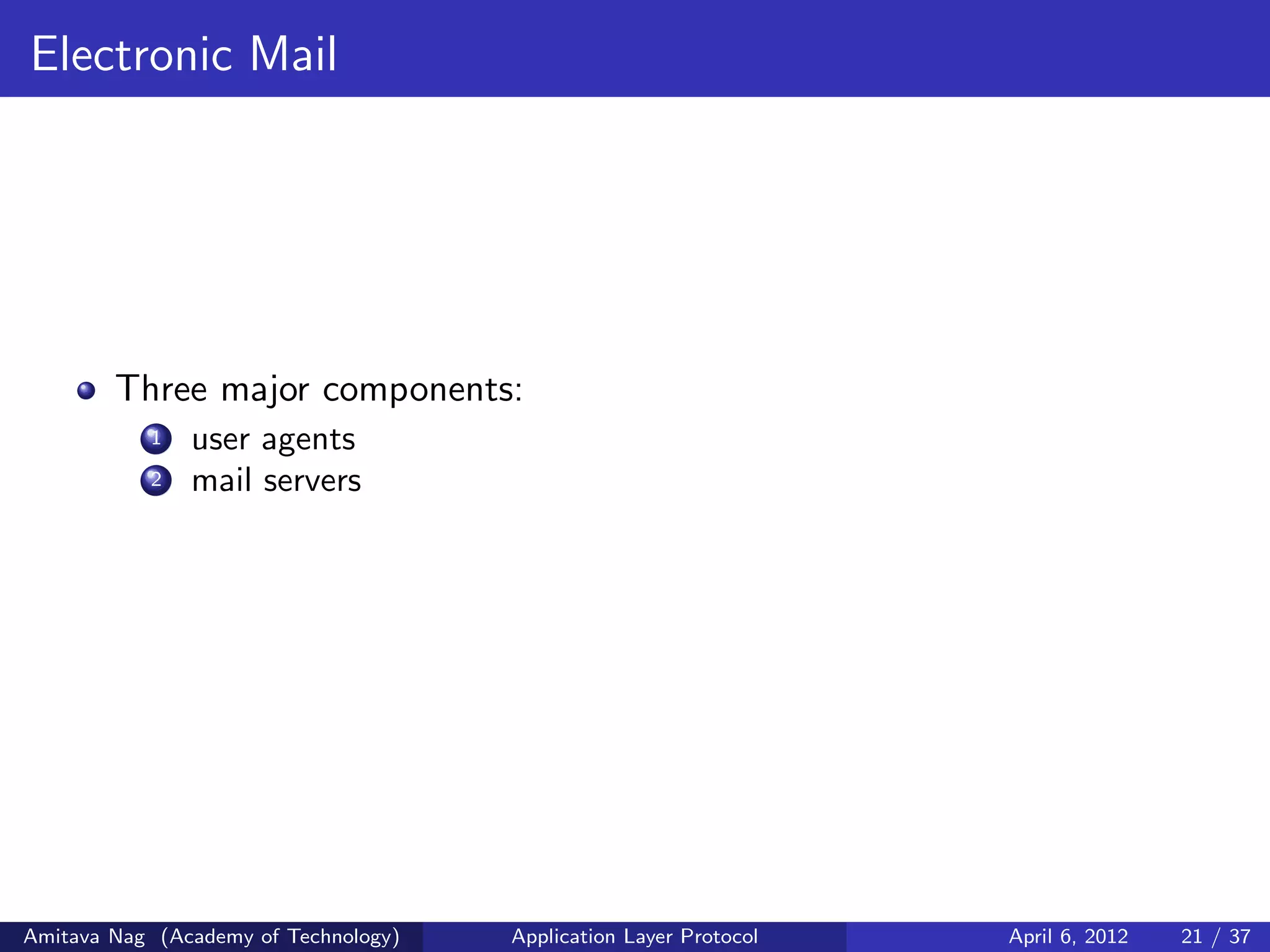
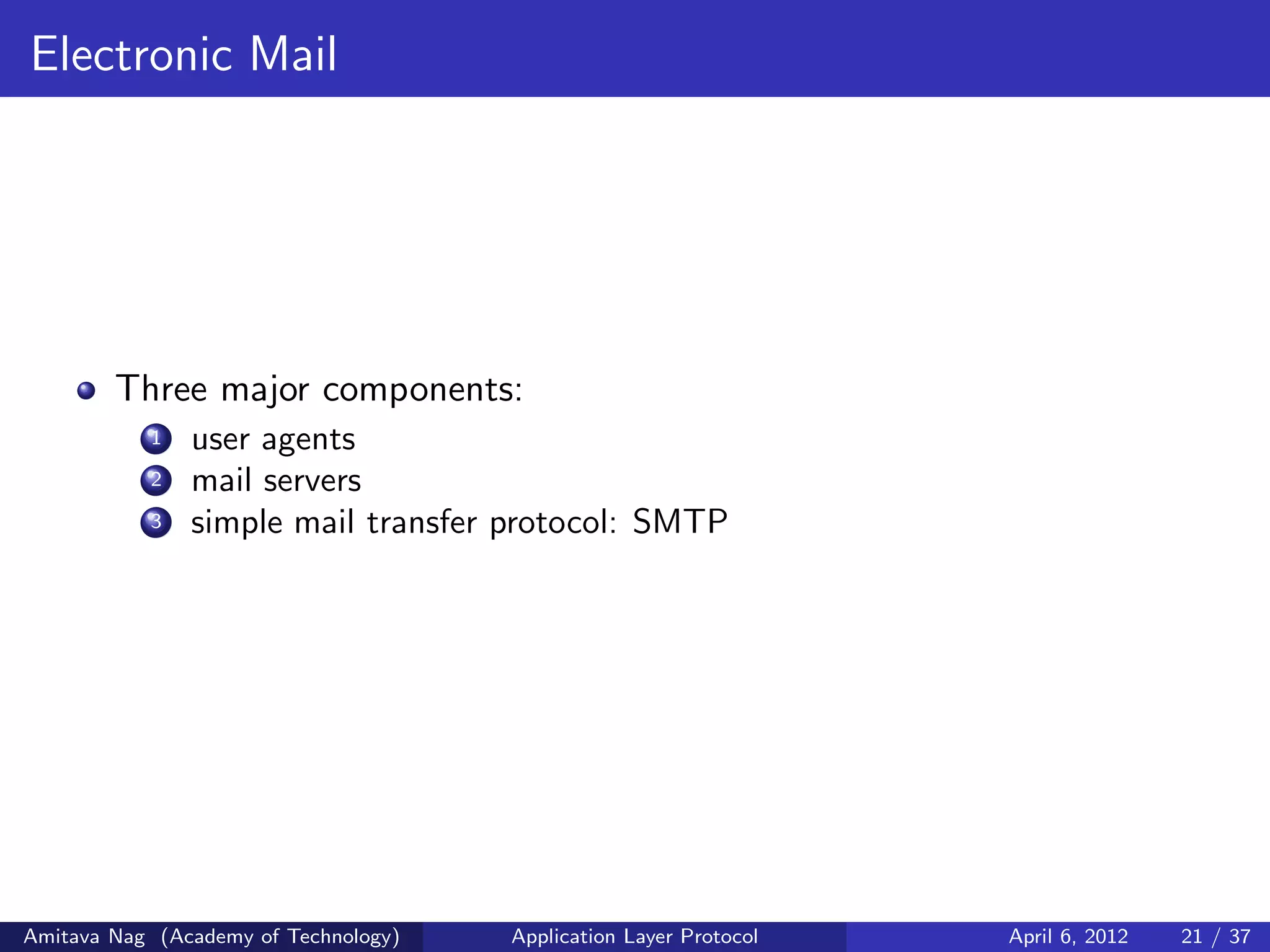
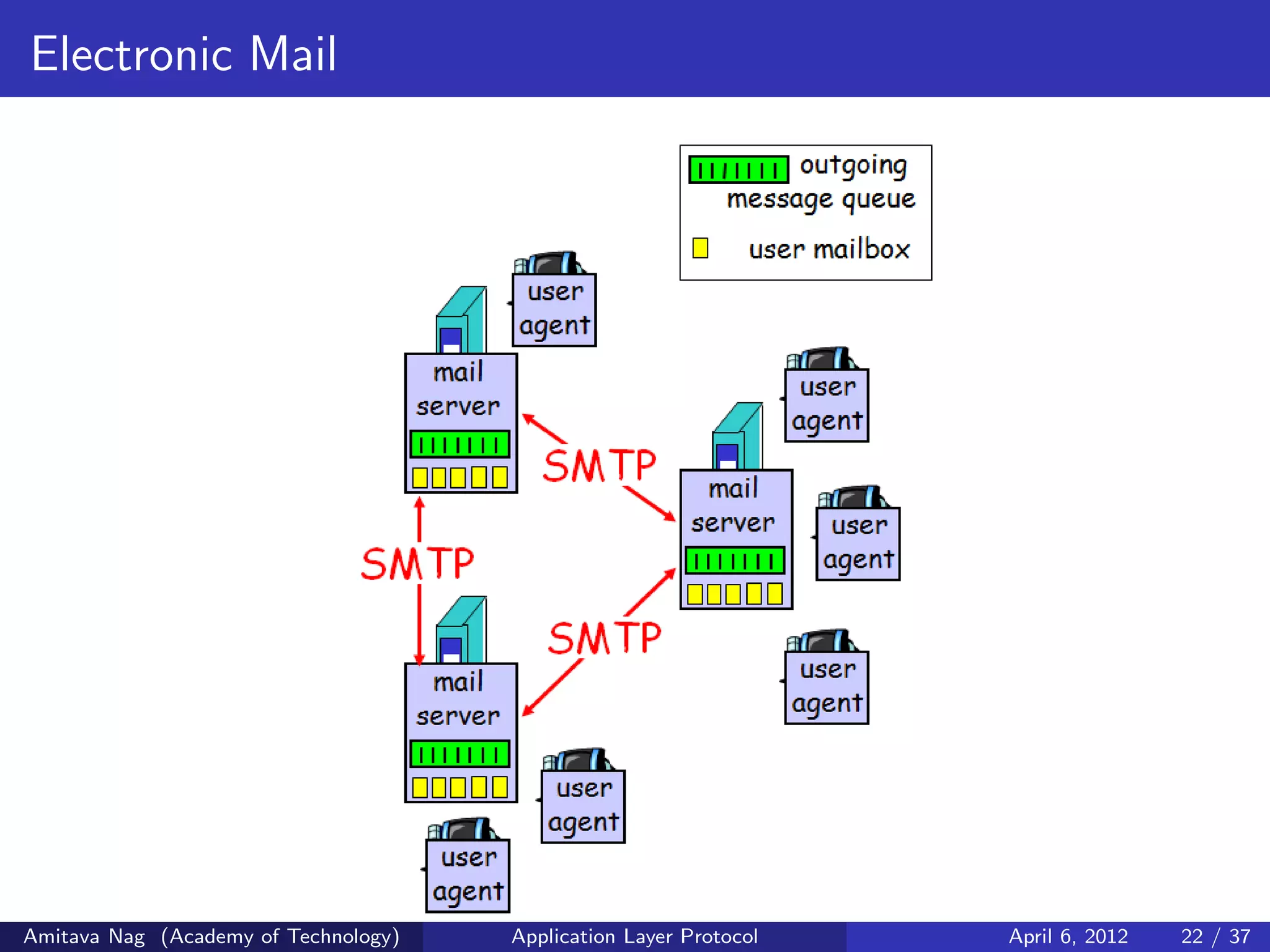

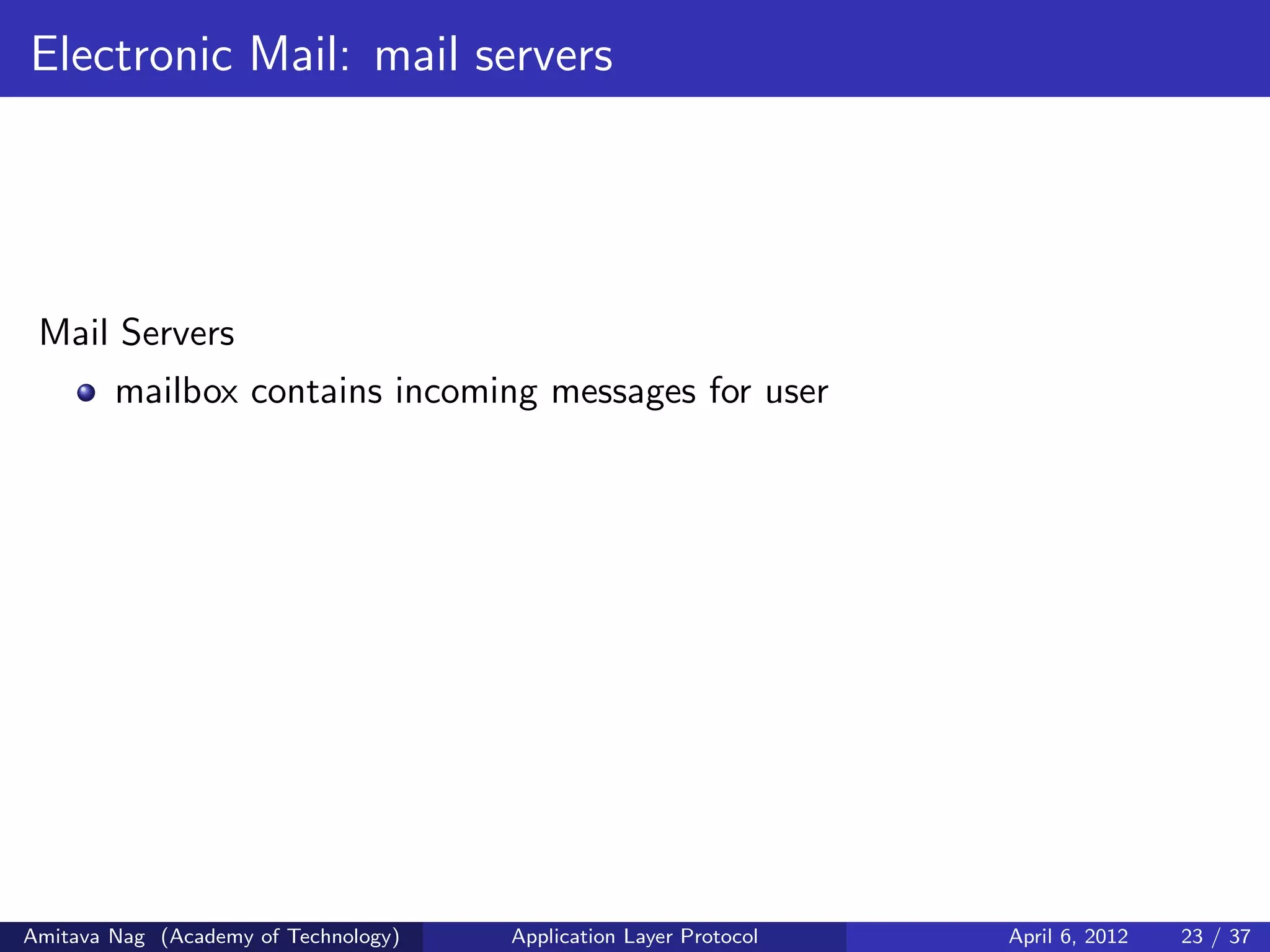
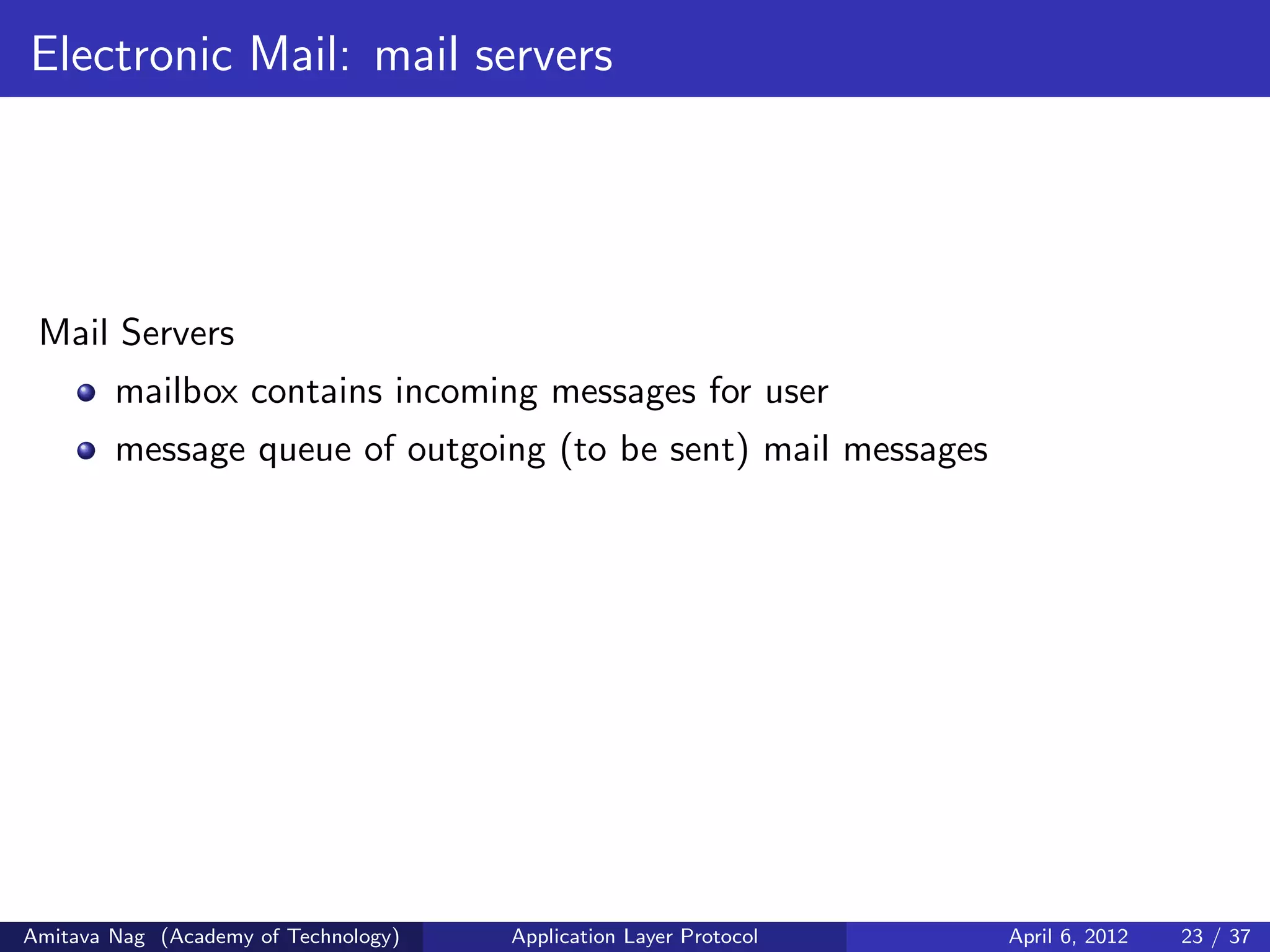

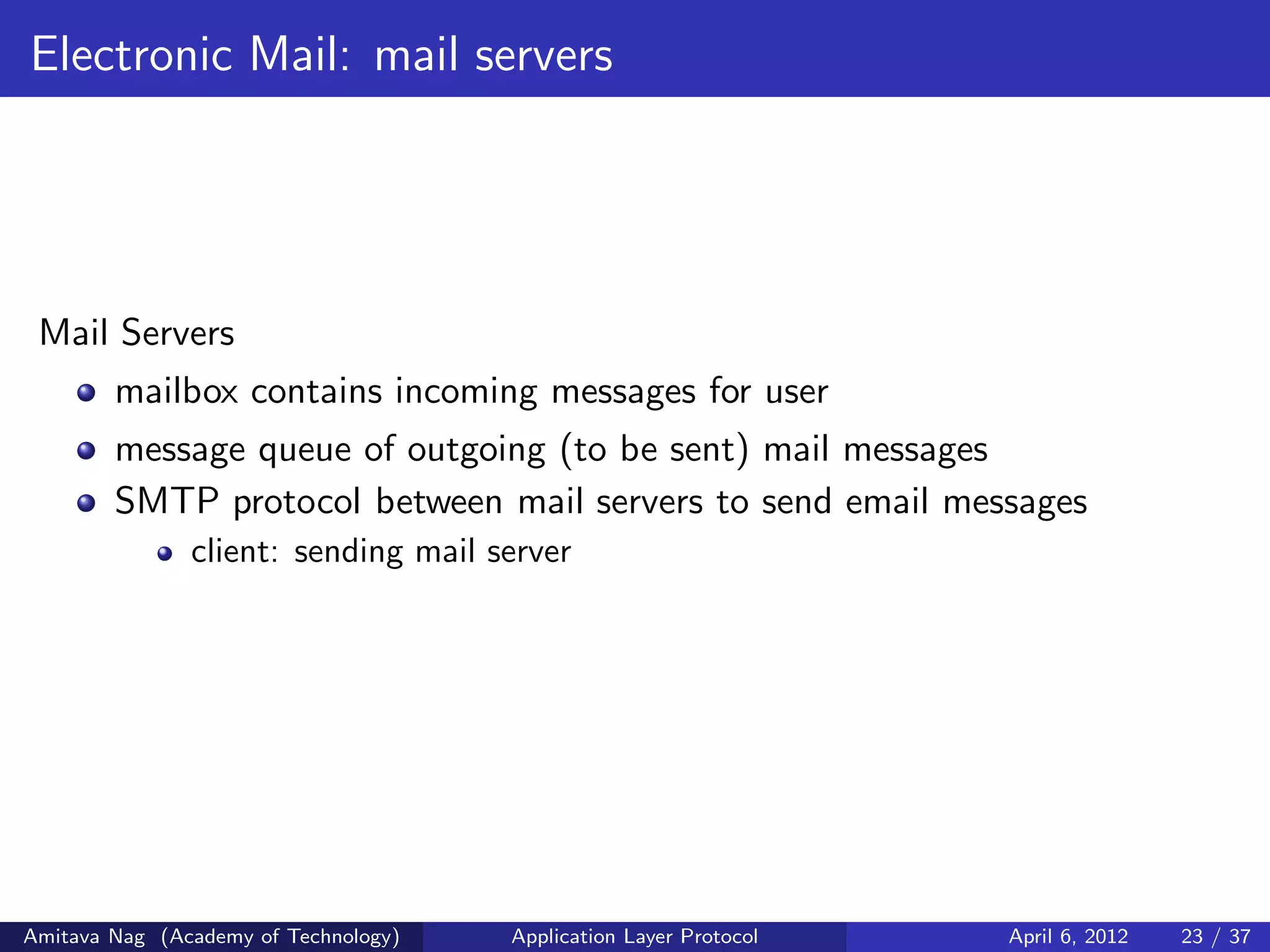
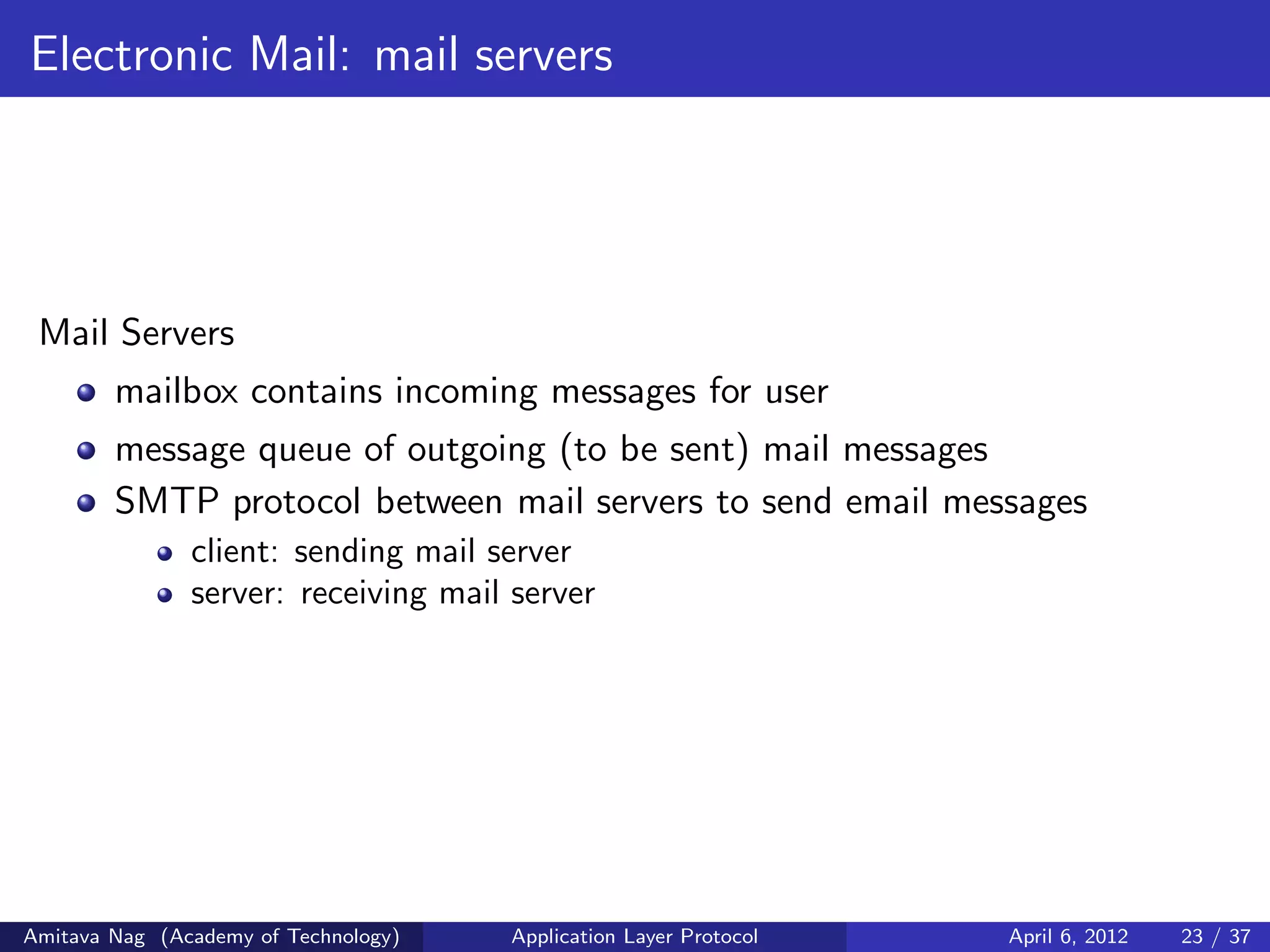
![Electronic Mail: SMTP [RFC 2821] Amitava Nag (Academy of Technology) Application Layer Protocol April 6, 2012 24 / 37](https://image.slidesharecdn.com/applicationlayerprotocol1-150219033455-conversion-gate01/75/Application-layer-protocol-76-2048.jpg)
![Electronic Mail: SMTP [RFC 2821] uses TCP to reliably transfer email message from client to server, port 25 Amitava Nag (Academy of Technology) Application Layer Protocol April 6, 2012 24 / 37](https://image.slidesharecdn.com/applicationlayerprotocol1-150219033455-conversion-gate01/75/Application-layer-protocol-77-2048.jpg)
![Electronic Mail: SMTP [RFC 2821] uses TCP to reliably transfer email message from client to server, port 25 direct transfer: sending server to receiving server Amitava Nag (Academy of Technology) Application Layer Protocol April 6, 2012 24 / 37](https://image.slidesharecdn.com/applicationlayerprotocol1-150219033455-conversion-gate01/75/Application-layer-protocol-78-2048.jpg)
![Electronic Mail: SMTP [RFC 2821] uses TCP to reliably transfer email message from client to server, port 25 direct transfer: sending server to receiving server three phases of transfer Amitava Nag (Academy of Technology) Application Layer Protocol April 6, 2012 24 / 37](https://image.slidesharecdn.com/applicationlayerprotocol1-150219033455-conversion-gate01/75/Application-layer-protocol-79-2048.jpg)
![Electronic Mail: SMTP [RFC 2821] uses TCP to reliably transfer email message from client to server, port 25 direct transfer: sending server to receiving server three phases of transfer handshaking (greeting) Amitava Nag (Academy of Technology) Application Layer Protocol April 6, 2012 24 / 37](https://image.slidesharecdn.com/applicationlayerprotocol1-150219033455-conversion-gate01/75/Application-layer-protocol-80-2048.jpg)
![Electronic Mail: SMTP [RFC 2821] uses TCP to reliably transfer email message from client to server, port 25 direct transfer: sending server to receiving server three phases of transfer handshaking (greeting) transfer of messages Amitava Nag (Academy of Technology) Application Layer Protocol April 6, 2012 24 / 37](https://image.slidesharecdn.com/applicationlayerprotocol1-150219033455-conversion-gate01/75/Application-layer-protocol-81-2048.jpg)
![Electronic Mail: SMTP [RFC 2821] uses TCP to reliably transfer email message from client to server, port 25 direct transfer: sending server to receiving server three phases of transfer handshaking (greeting) transfer of messages closure Amitava Nag (Academy of Technology) Application Layer Protocol April 6, 2012 24 / 37](https://image.slidesharecdn.com/applicationlayerprotocol1-150219033455-conversion-gate01/75/Application-layer-protocol-82-2048.jpg)
![Electronic Mail: SMTP [RFC 2821] uses TCP to reliably transfer email message from client to server, port 25 direct transfer: sending server to receiving server three phases of transfer handshaking (greeting) transfer of messages closure command/response interaction Amitava Nag (Academy of Technology) Application Layer Protocol April 6, 2012 24 / 37](https://image.slidesharecdn.com/applicationlayerprotocol1-150219033455-conversion-gate01/75/Application-layer-protocol-83-2048.jpg)
![Electronic Mail: SMTP [RFC 2821] uses TCP to reliably transfer email message from client to server, port 25 direct transfer: sending server to receiving server three phases of transfer handshaking (greeting) transfer of messages closure command/response interaction commands: ASCII text Amitava Nag (Academy of Technology) Application Layer Protocol April 6, 2012 24 / 37](https://image.slidesharecdn.com/applicationlayerprotocol1-150219033455-conversion-gate01/75/Application-layer-protocol-84-2048.jpg)
![Electronic Mail: SMTP [RFC 2821] uses TCP to reliably transfer email message from client to server, port 25 direct transfer: sending server to receiving server three phases of transfer handshaking (greeting) transfer of messages closure command/response interaction commands: ASCII text response: status code and phrase Amitava Nag (Academy of Technology) Application Layer Protocol April 6, 2012 24 / 37](https://image.slidesharecdn.com/applicationlayerprotocol1-150219033455-conversion-gate01/75/Application-layer-protocol-85-2048.jpg)
![Electronic Mail: SMTP [RFC 2821] uses TCP to reliably transfer email message from client to server, port 25 direct transfer: sending server to receiving server three phases of transfer handshaking (greeting) transfer of messages closure command/response interaction commands: ASCII text response: status code and phrase messages must be in 7-bit ASCII Amitava Nag (Academy of Technology) Application Layer Protocol April 6, 2012 24 / 37](https://image.slidesharecdn.com/applicationlayerprotocol1-150219033455-conversion-gate01/75/Application-layer-protocol-86-2048.jpg)
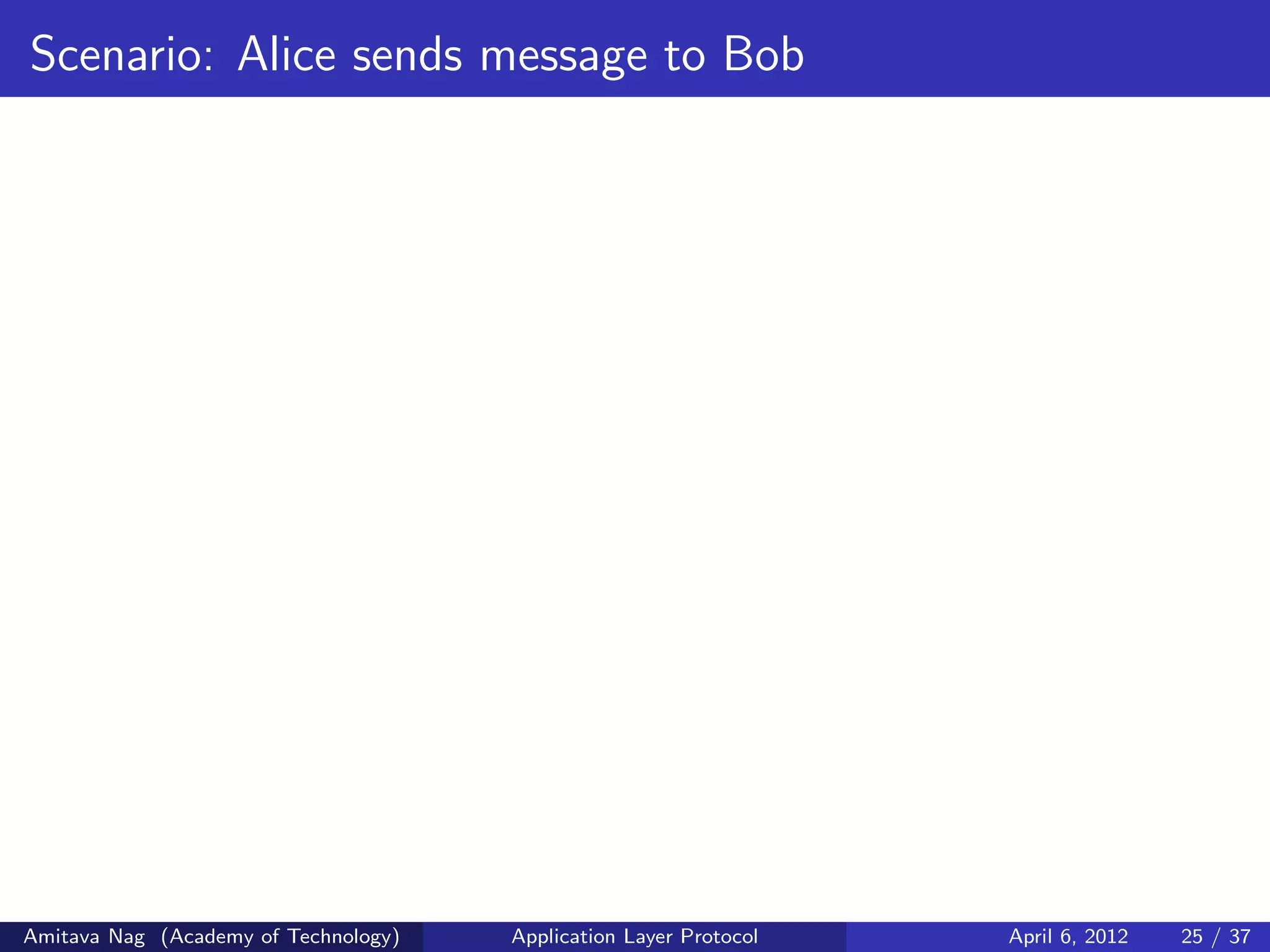
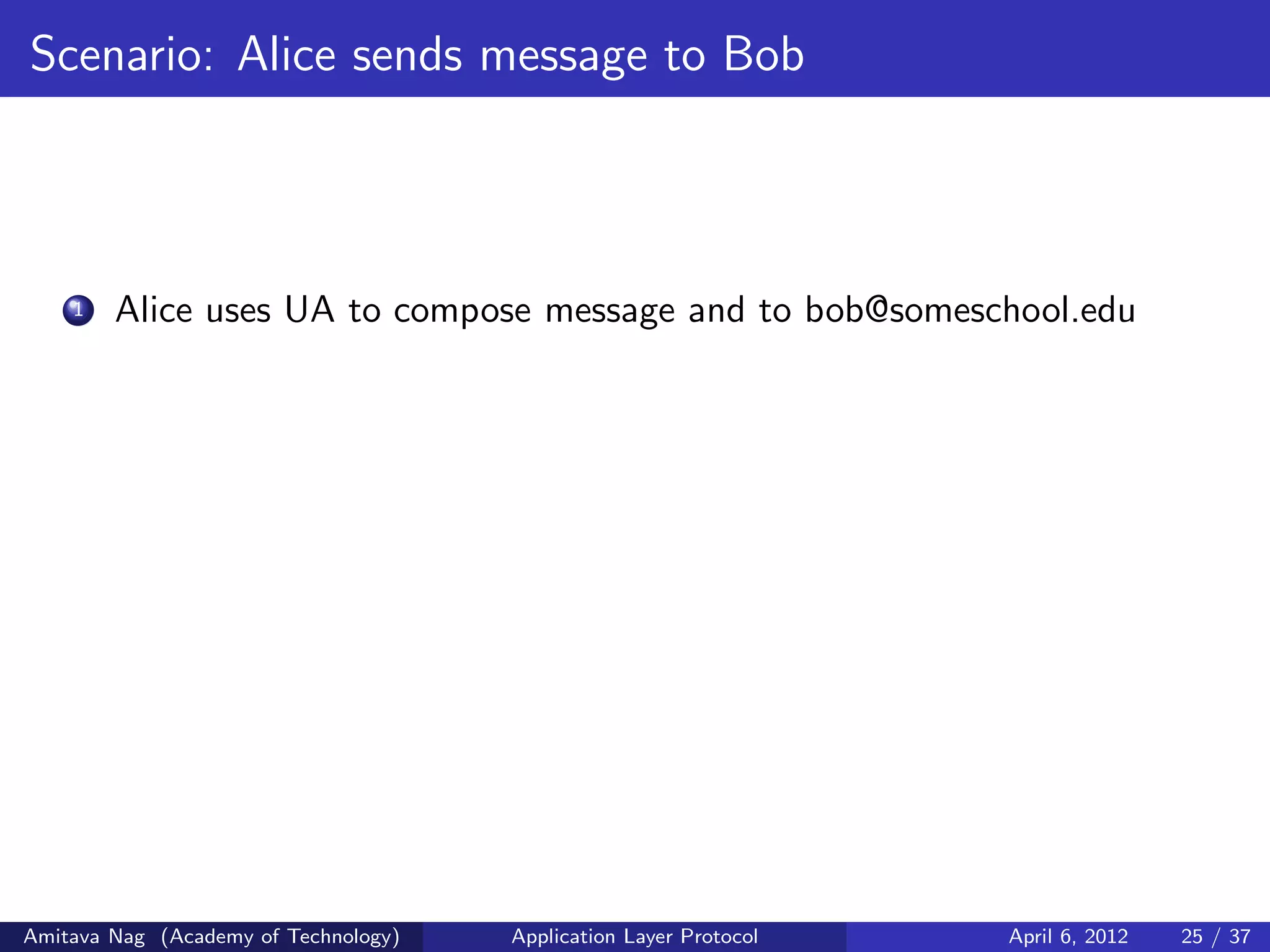

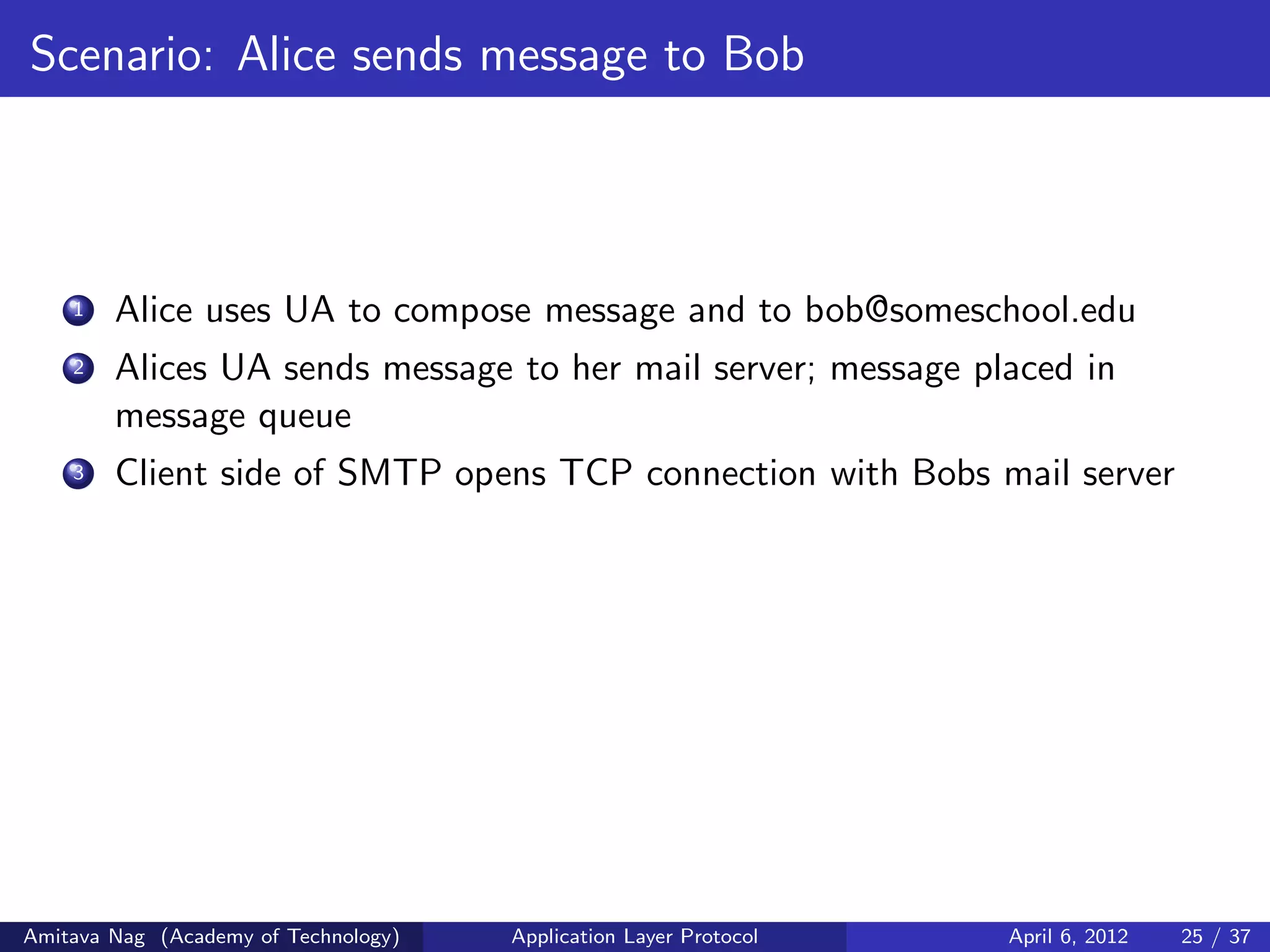

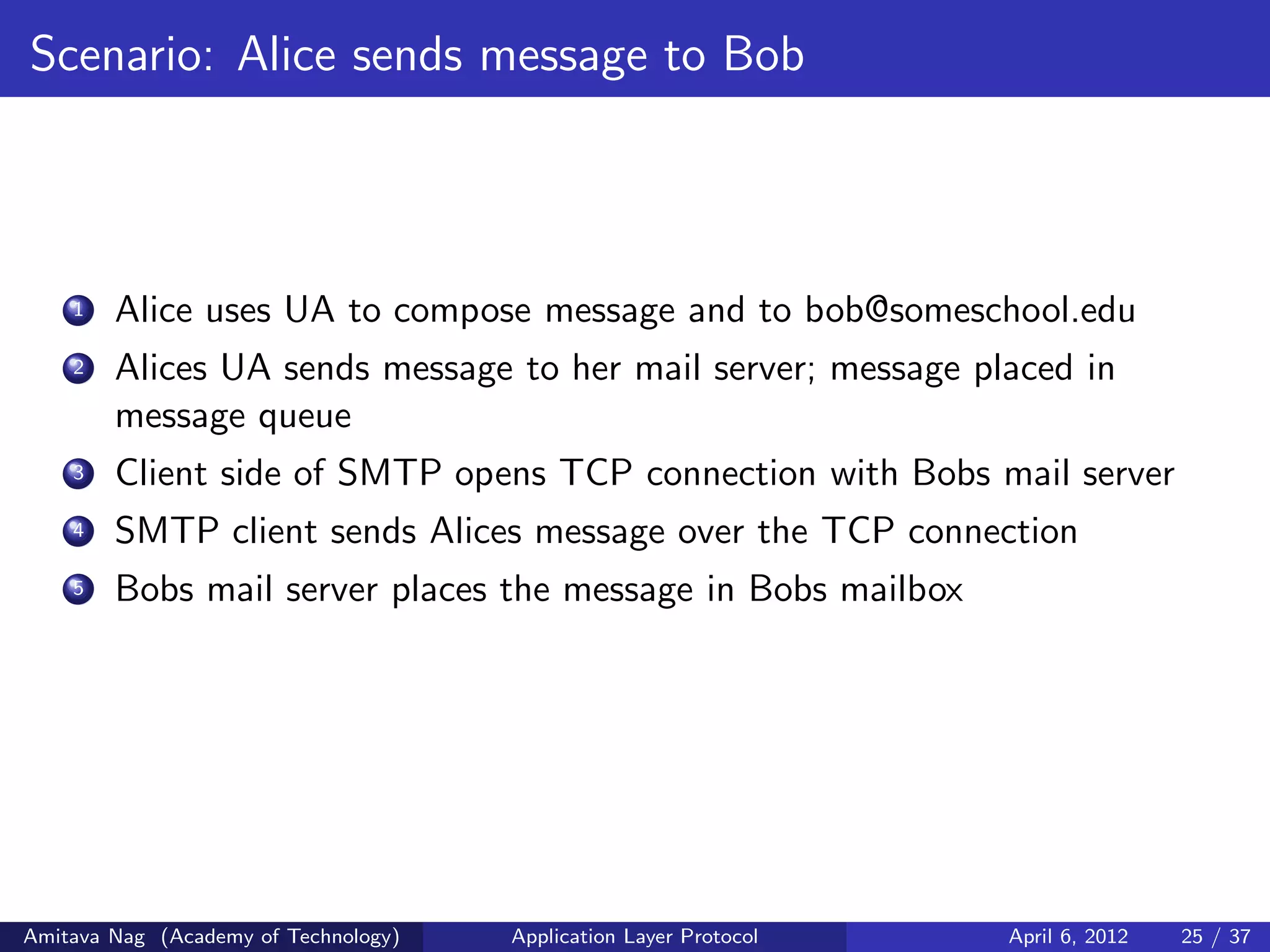
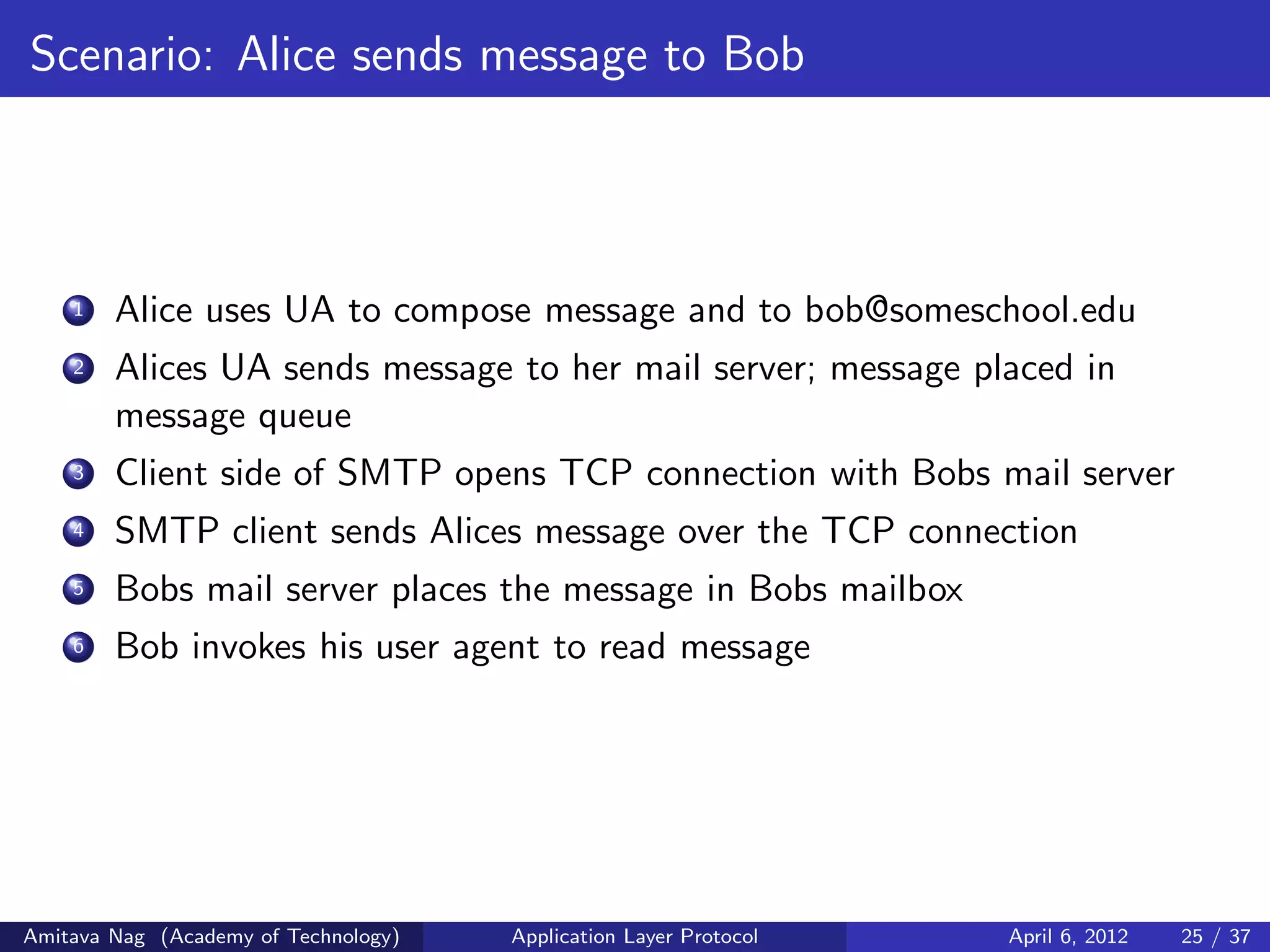



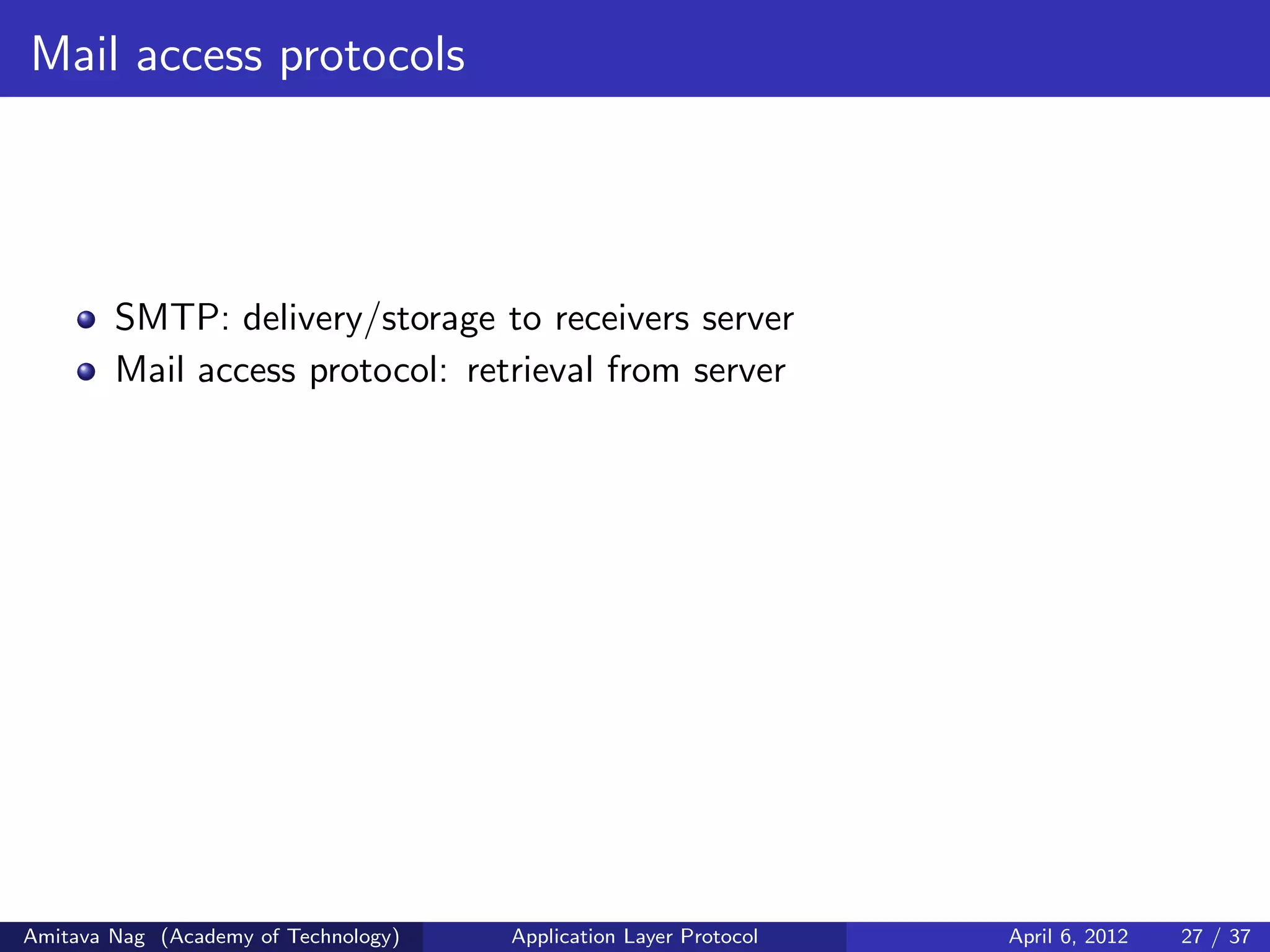
![Mail access protocols SMTP: delivery/storage to receivers server Mail access protocol: retrieval from server POP: Post Office Protocol [RFC 1939] Amitava Nag (Academy of Technology) Application Layer Protocol April 6, 2012 27 / 37](https://image.slidesharecdn.com/applicationlayerprotocol1-150219033455-conversion-gate01/75/Application-layer-protocol-98-2048.jpg)
![Mail access protocols SMTP: delivery/storage to receivers server Mail access protocol: retrieval from server POP: Post Office Protocol [RFC 1939] authorization (agent < −− >server) and download Amitava Nag (Academy of Technology) Application Layer Protocol April 6, 2012 27 / 37](https://image.slidesharecdn.com/applicationlayerprotocol1-150219033455-conversion-gate01/75/Application-layer-protocol-99-2048.jpg)
![Mail access protocols SMTP: delivery/storage to receivers server Mail access protocol: retrieval from server POP: Post Office Protocol [RFC 1939] authorization (agent < −− >server) and download IMAP: Internet Mail Access Protocol [RFC 1730] Amitava Nag (Academy of Technology) Application Layer Protocol April 6, 2012 27 / 37](https://image.slidesharecdn.com/applicationlayerprotocol1-150219033455-conversion-gate01/75/Application-layer-protocol-100-2048.jpg)
![Mail access protocols SMTP: delivery/storage to receivers server Mail access protocol: retrieval from server POP: Post Office Protocol [RFC 1939] authorization (agent < −− >server) and download IMAP: Internet Mail Access Protocol [RFC 1730] more features (more complex) Amitava Nag (Academy of Technology) Application Layer Protocol April 6, 2012 27 / 37](https://image.slidesharecdn.com/applicationlayerprotocol1-150219033455-conversion-gate01/75/Application-layer-protocol-101-2048.jpg)
![Mail access protocols SMTP: delivery/storage to receivers server Mail access protocol: retrieval from server POP: Post Office Protocol [RFC 1939] authorization (agent < −− >server) and download IMAP: Internet Mail Access Protocol [RFC 1730] more features (more complex) manipulation of stored msgs on server Amitava Nag (Academy of Technology) Application Layer Protocol April 6, 2012 27 / 37](https://image.slidesharecdn.com/applicationlayerprotocol1-150219033455-conversion-gate01/75/Application-layer-protocol-102-2048.jpg)
![Mail access protocols SMTP: delivery/storage to receivers server Mail access protocol: retrieval from server POP: Post Office Protocol [RFC 1939] authorization (agent < −− >server) and download IMAP: Internet Mail Access Protocol [RFC 1730] more features (more complex) manipulation of stored msgs on server HTTP: Hotmail , Yahoo! Mail, etc. Amitava Nag (Academy of Technology) Application Layer Protocol April 6, 2012 27 / 37](https://image.slidesharecdn.com/applicationlayerprotocol1-150219033455-conversion-gate01/75/Application-layer-protocol-103-2048.jpg)
